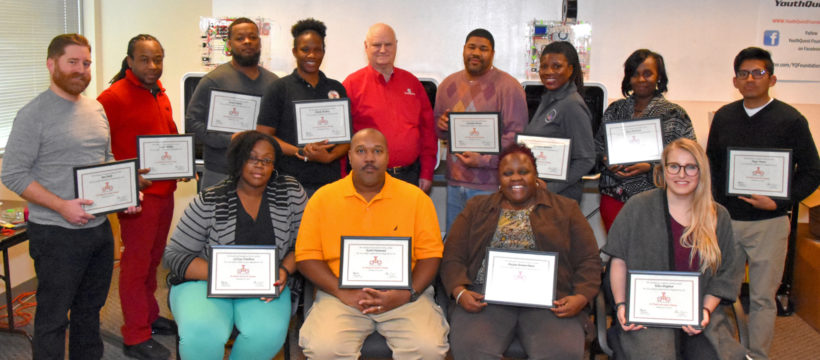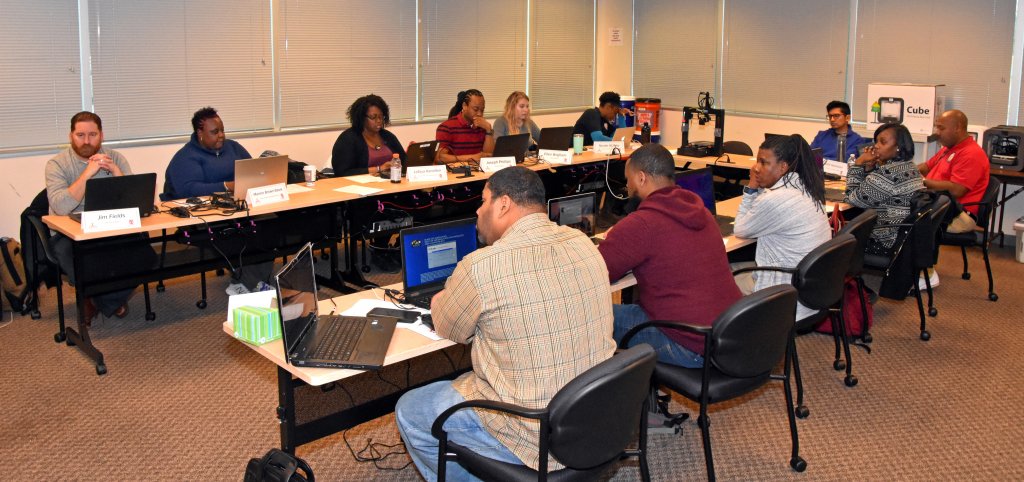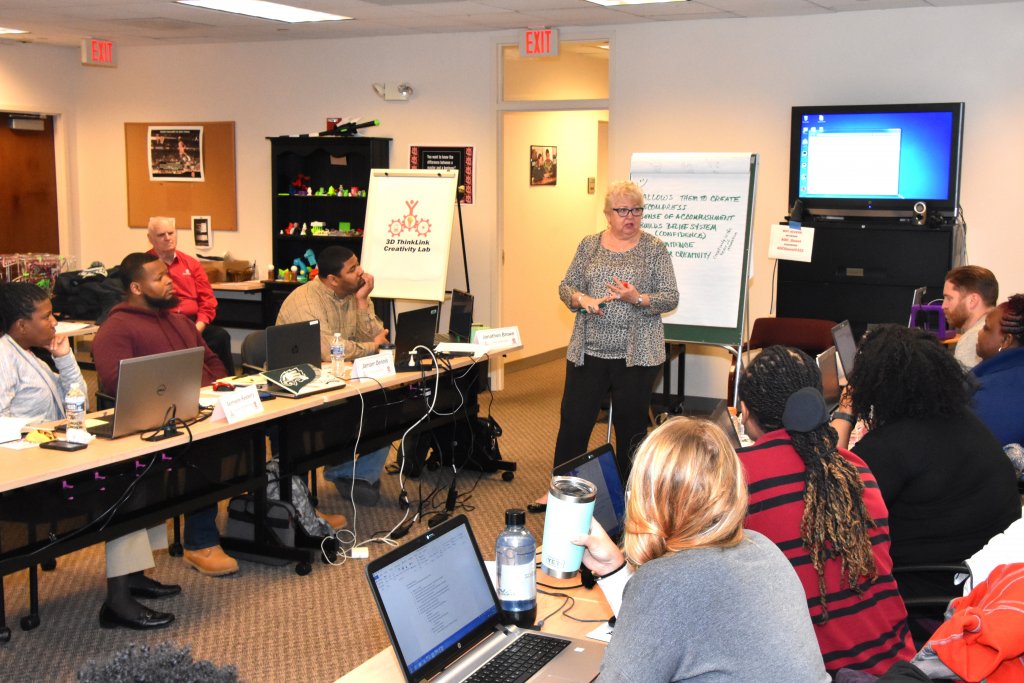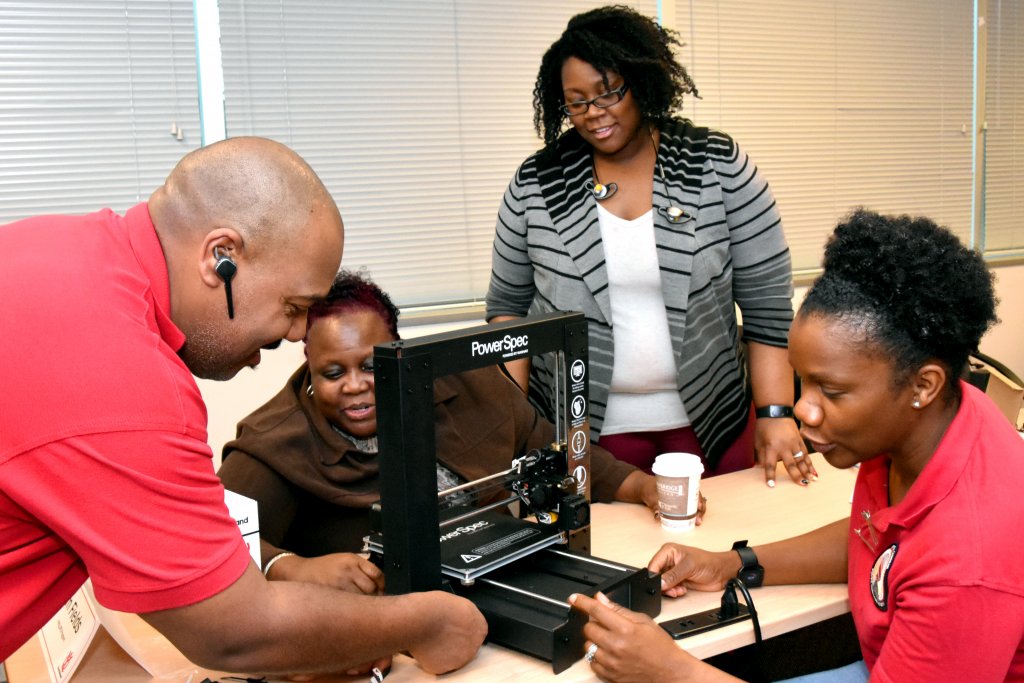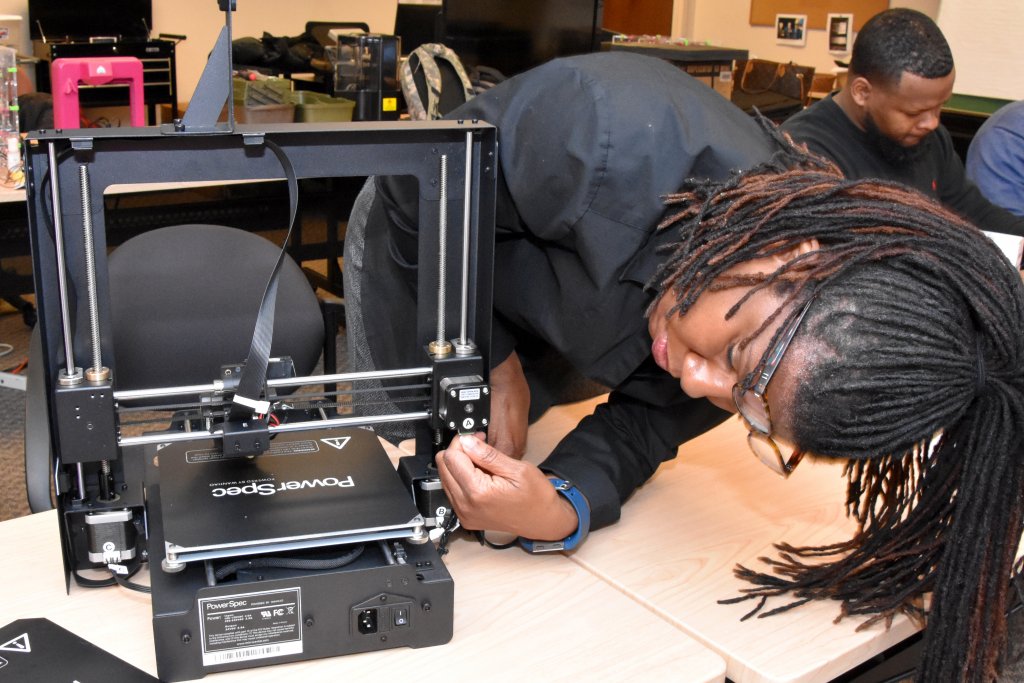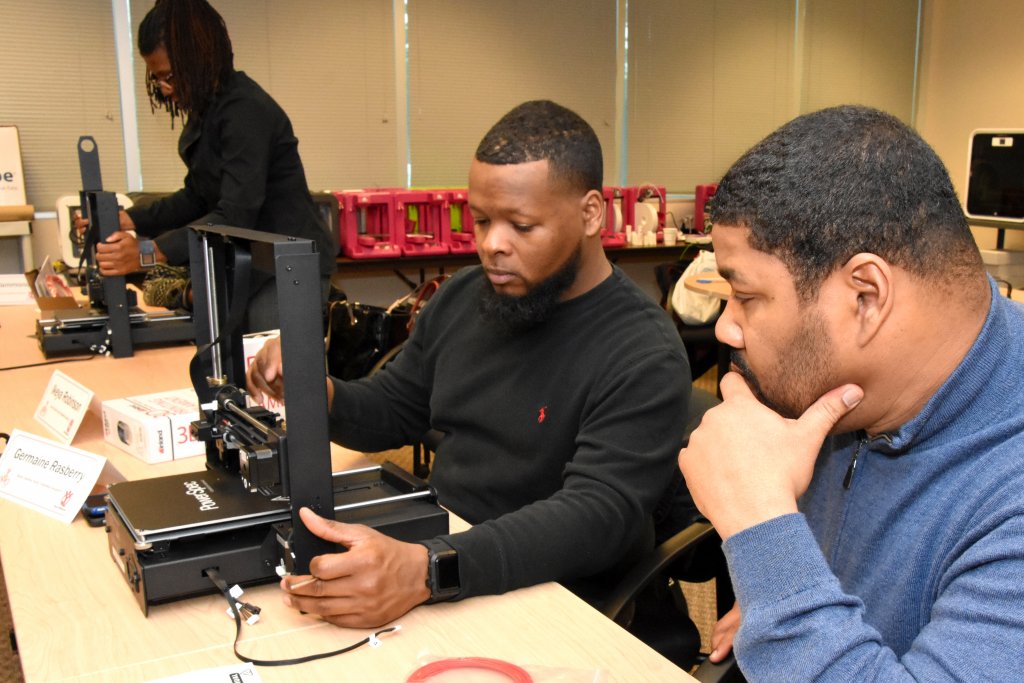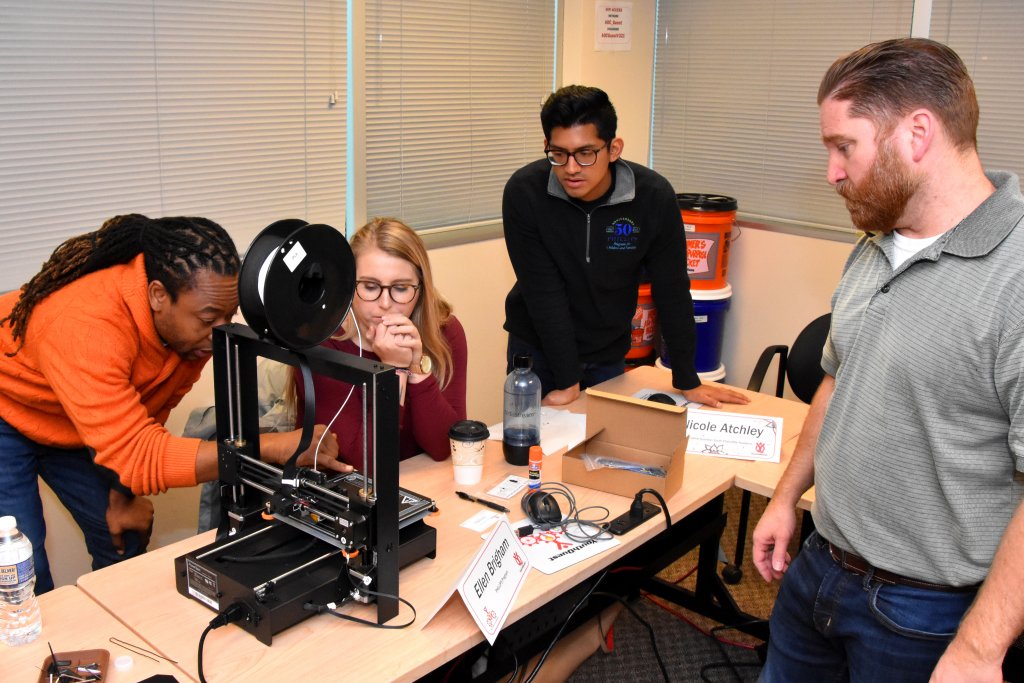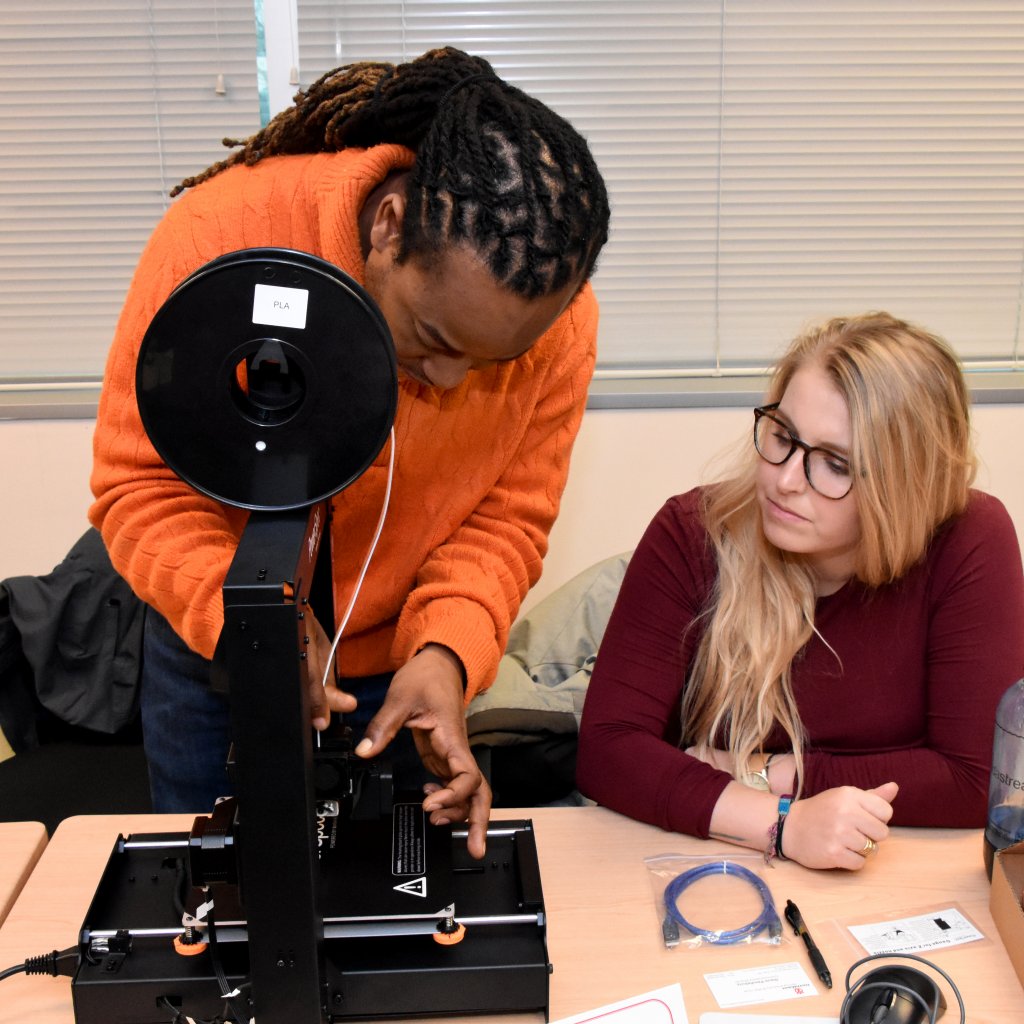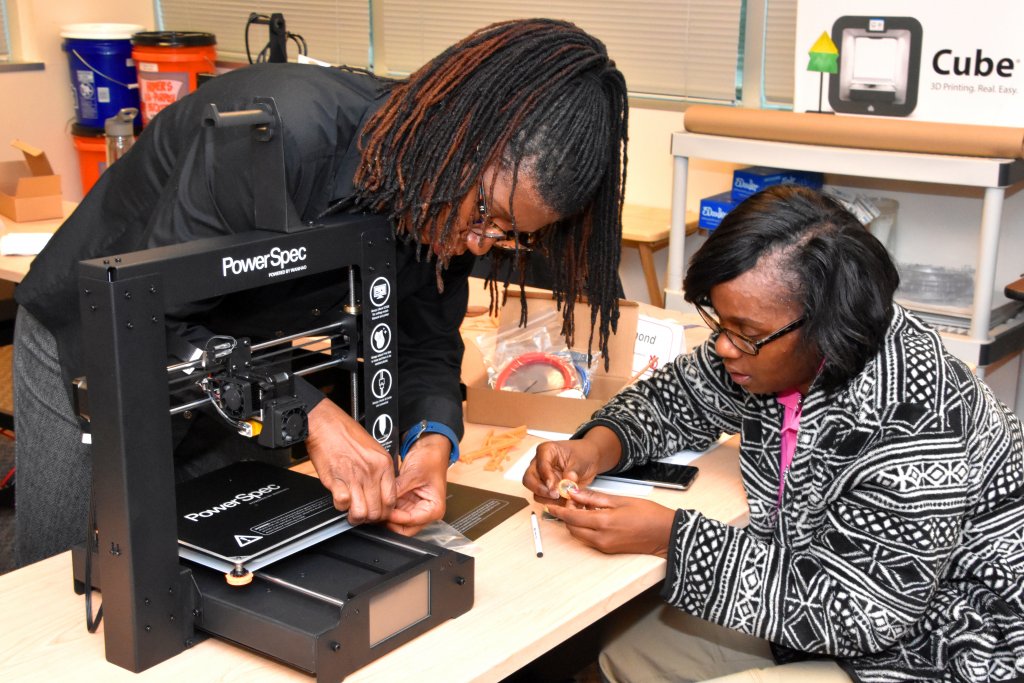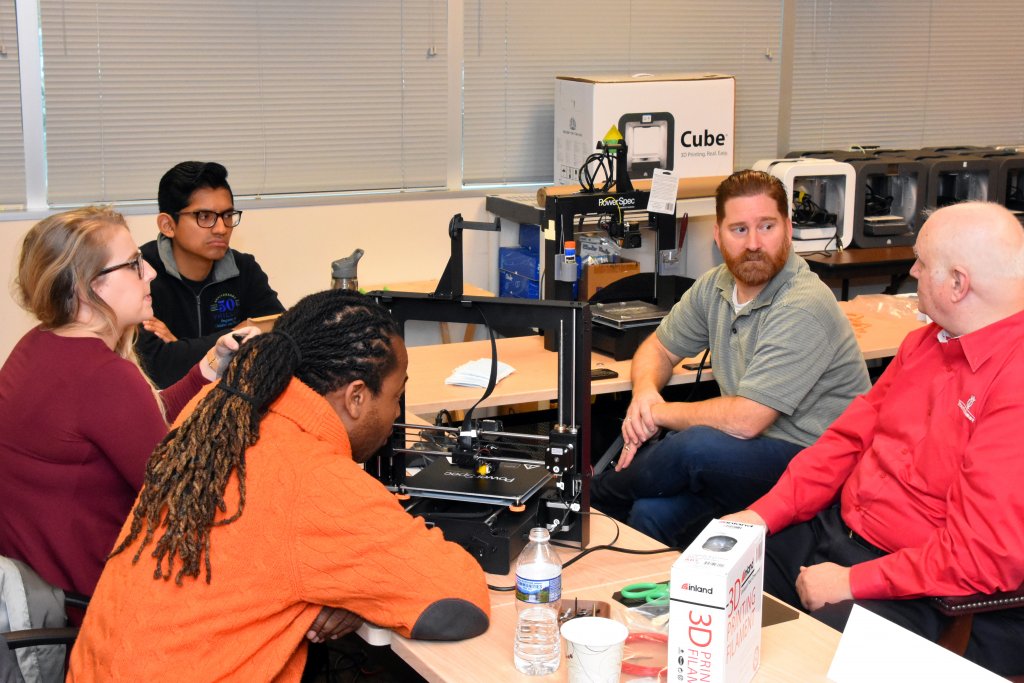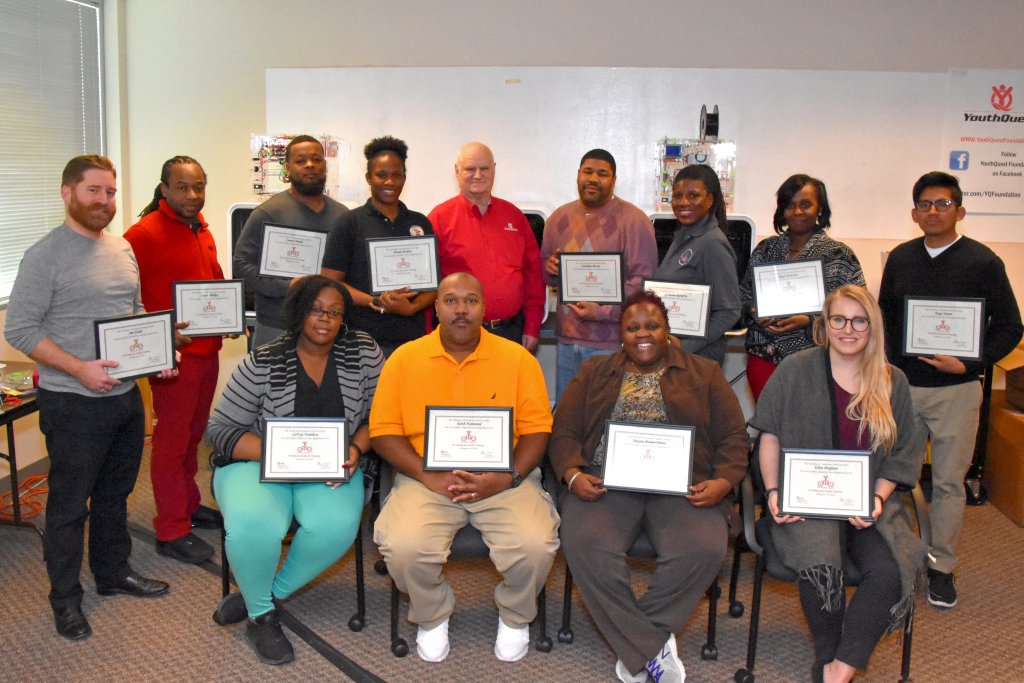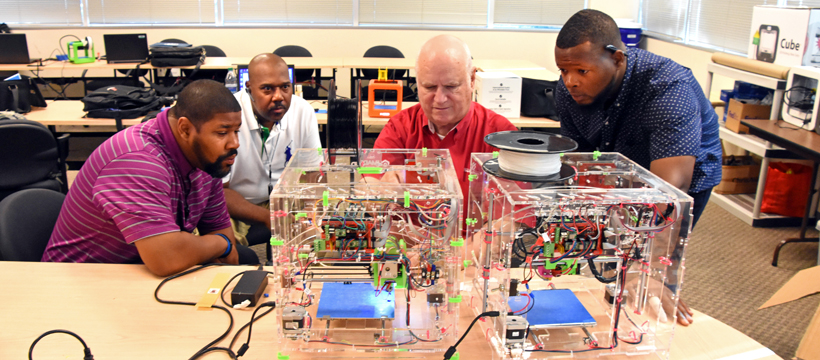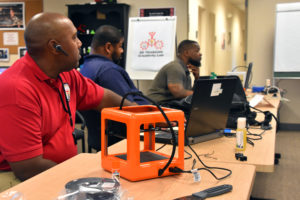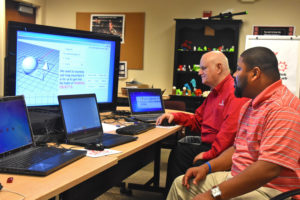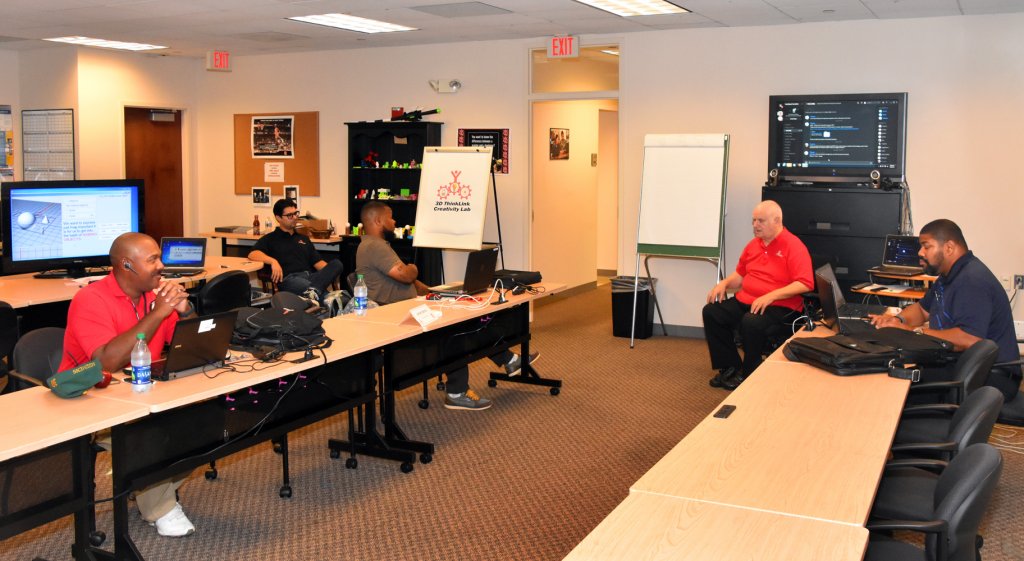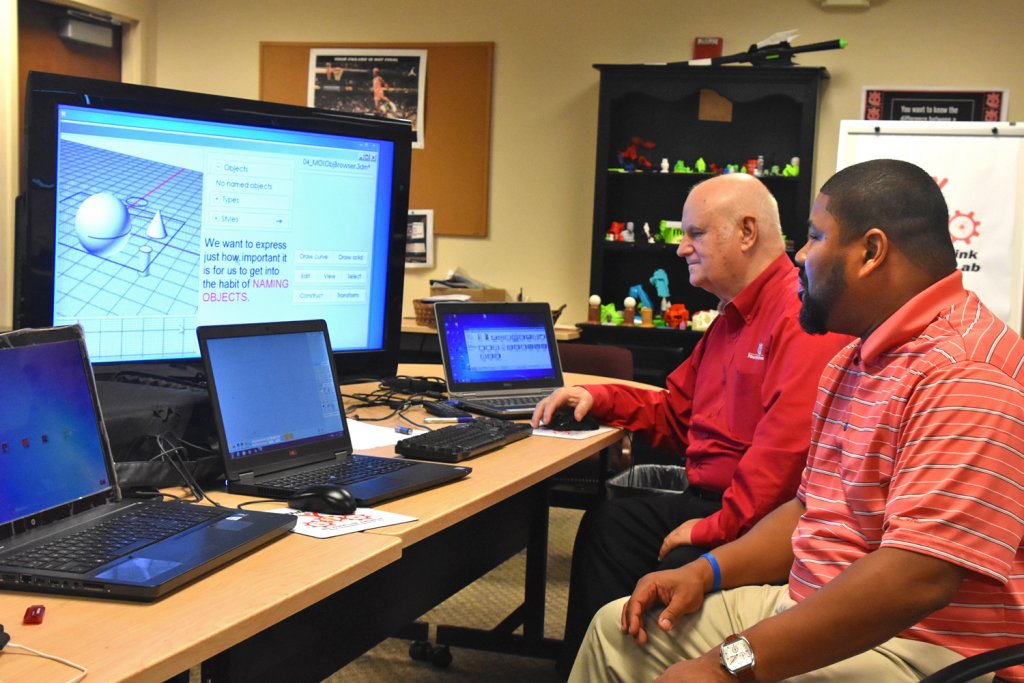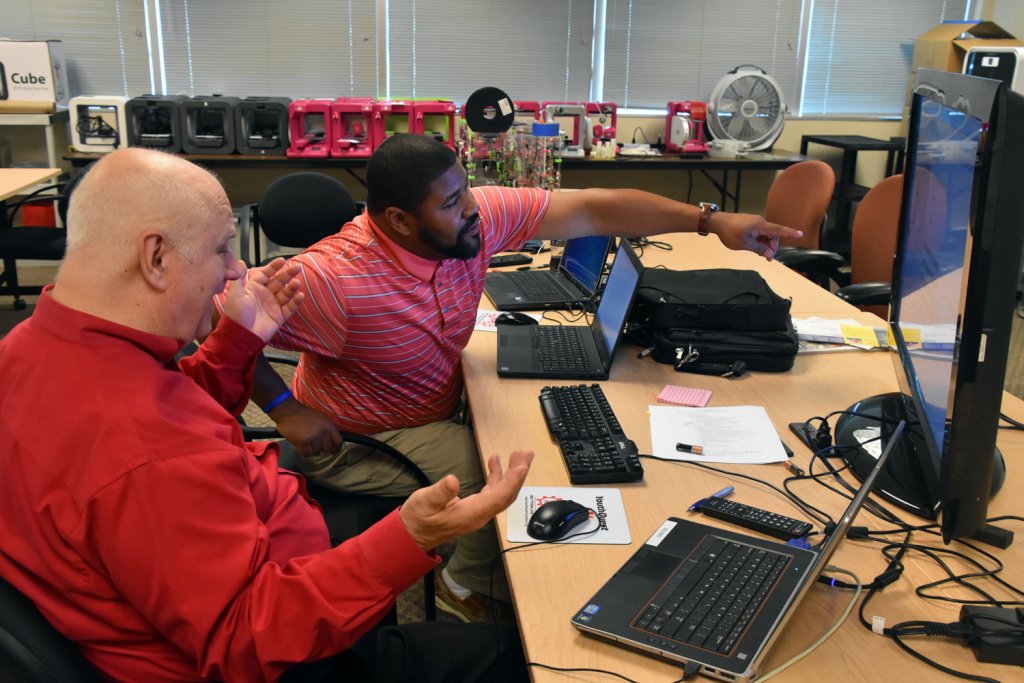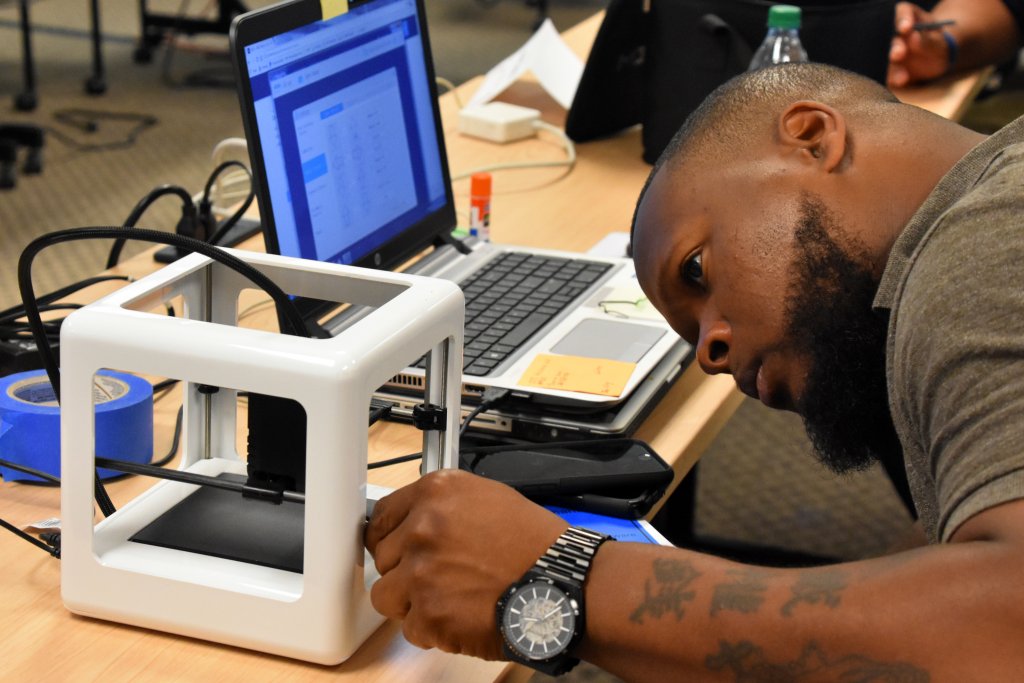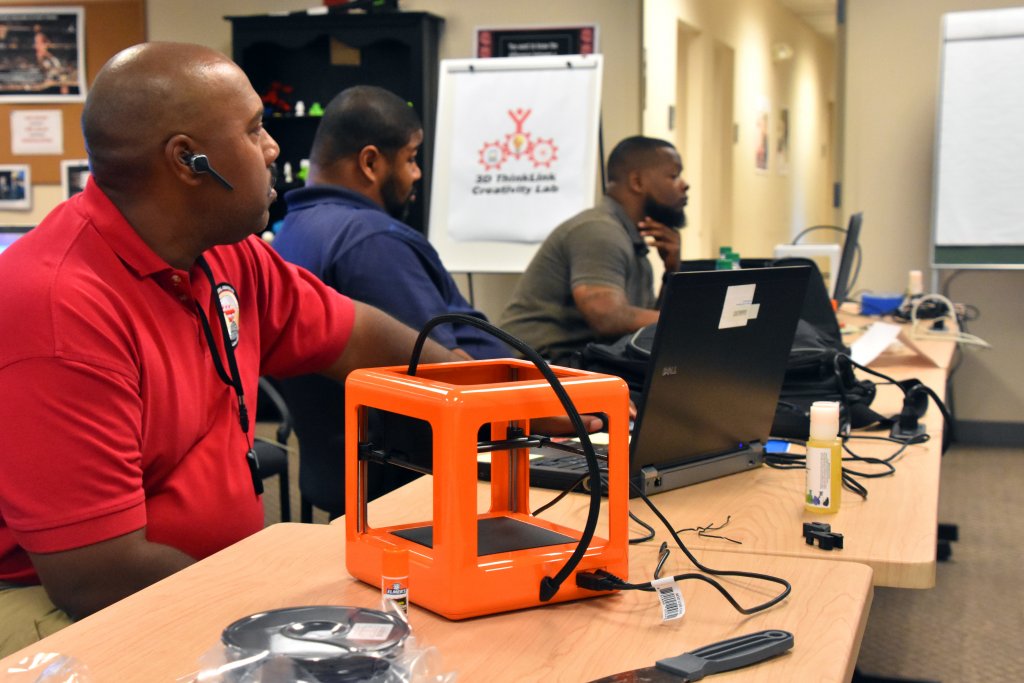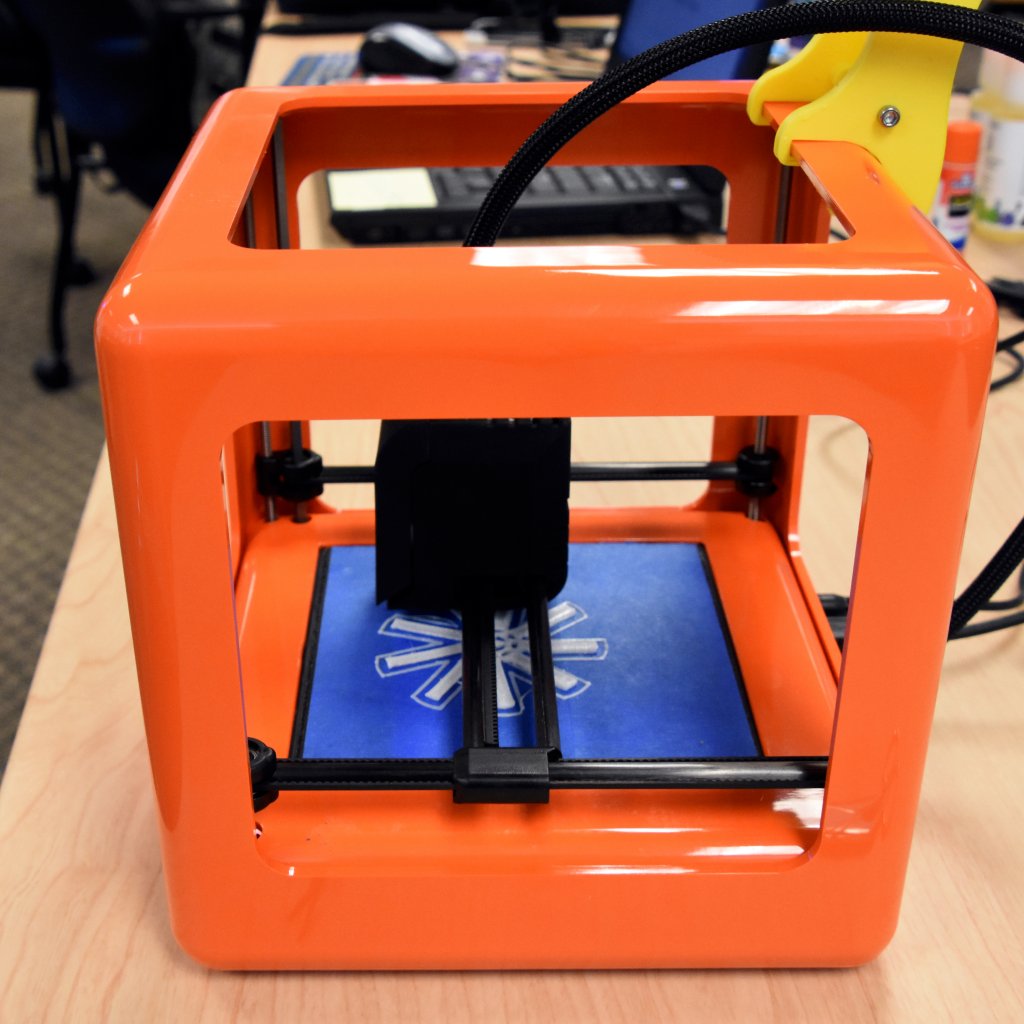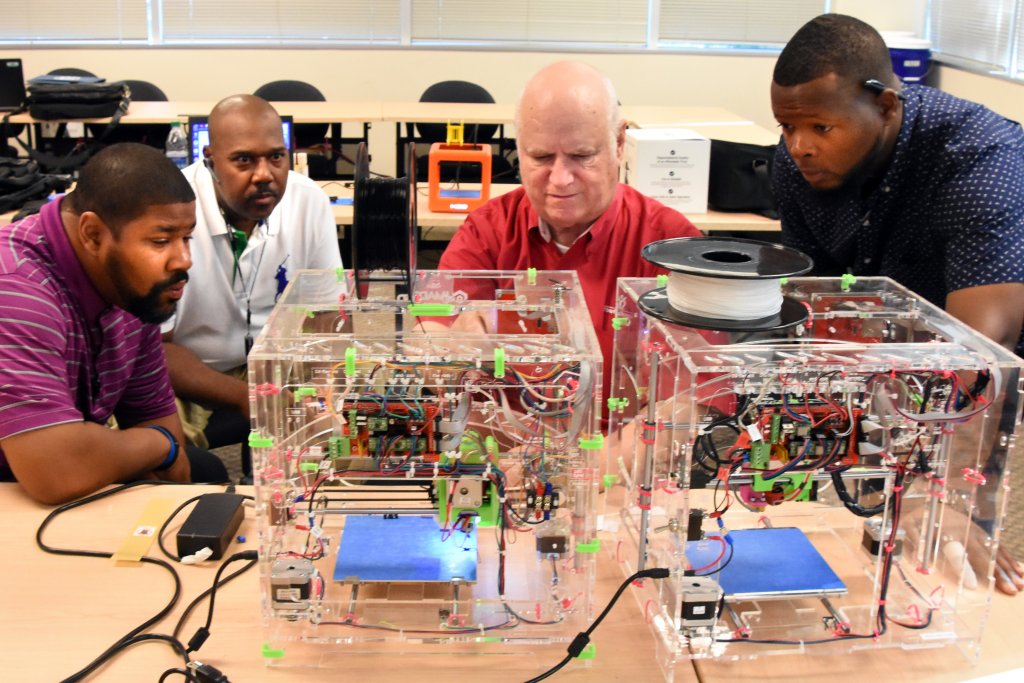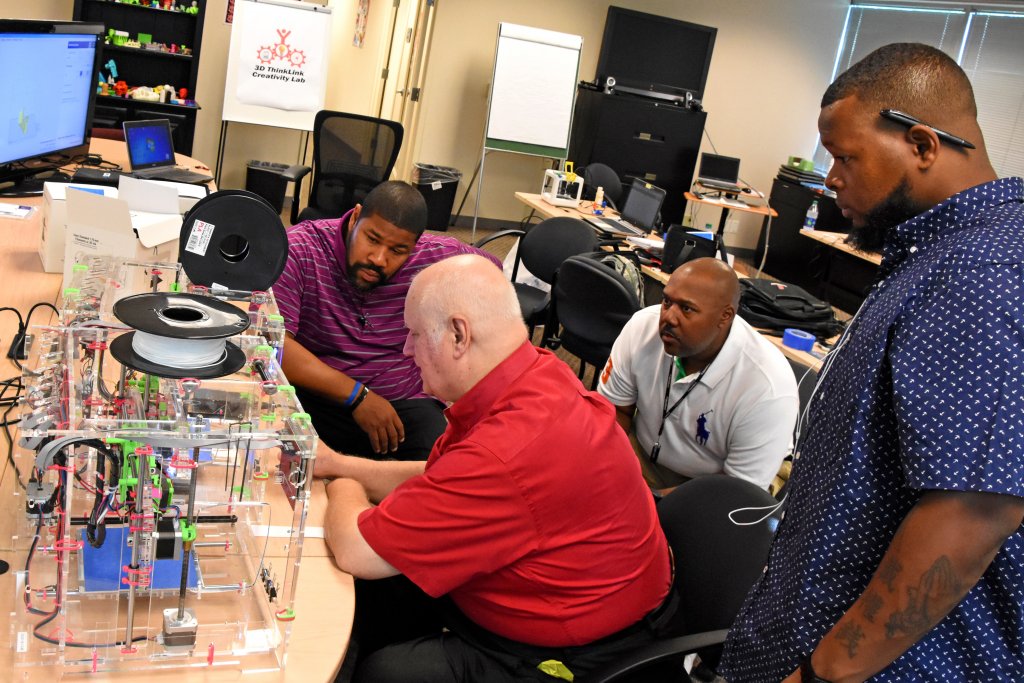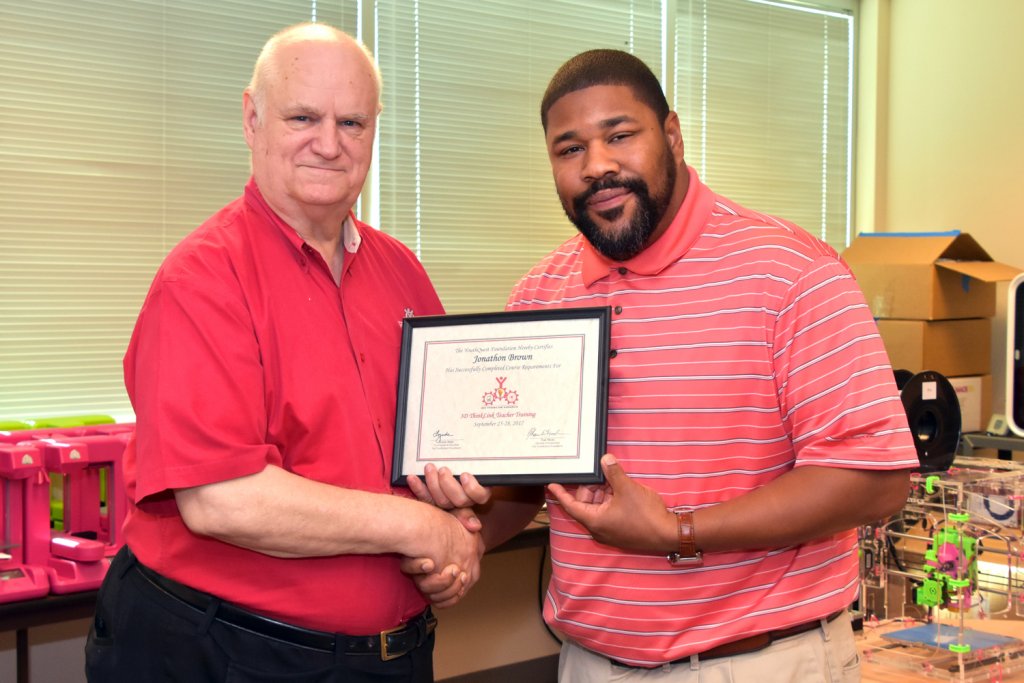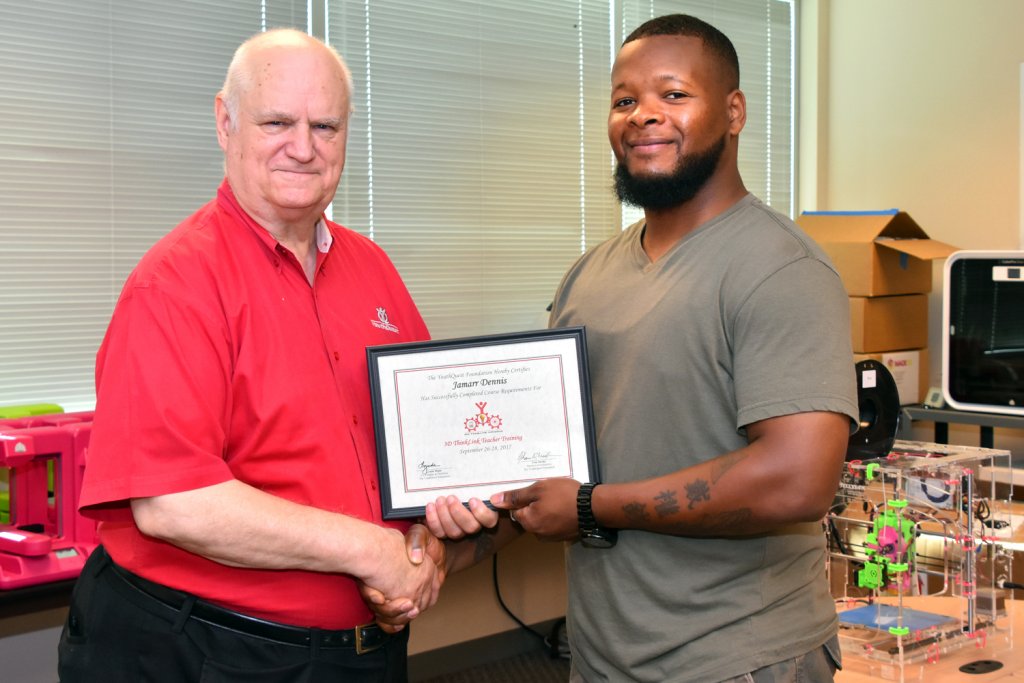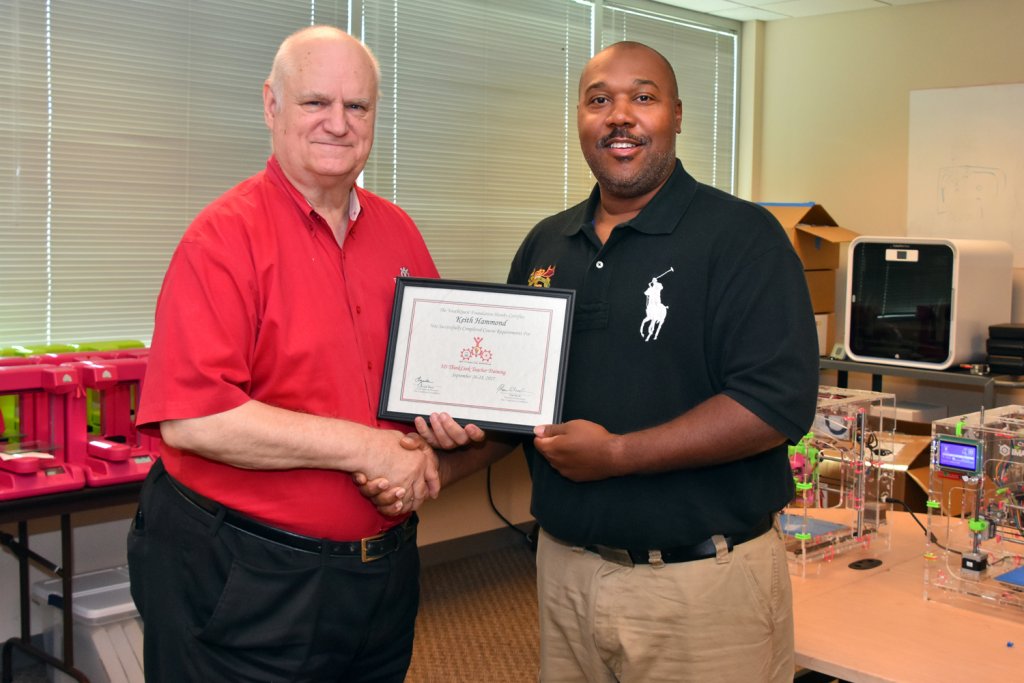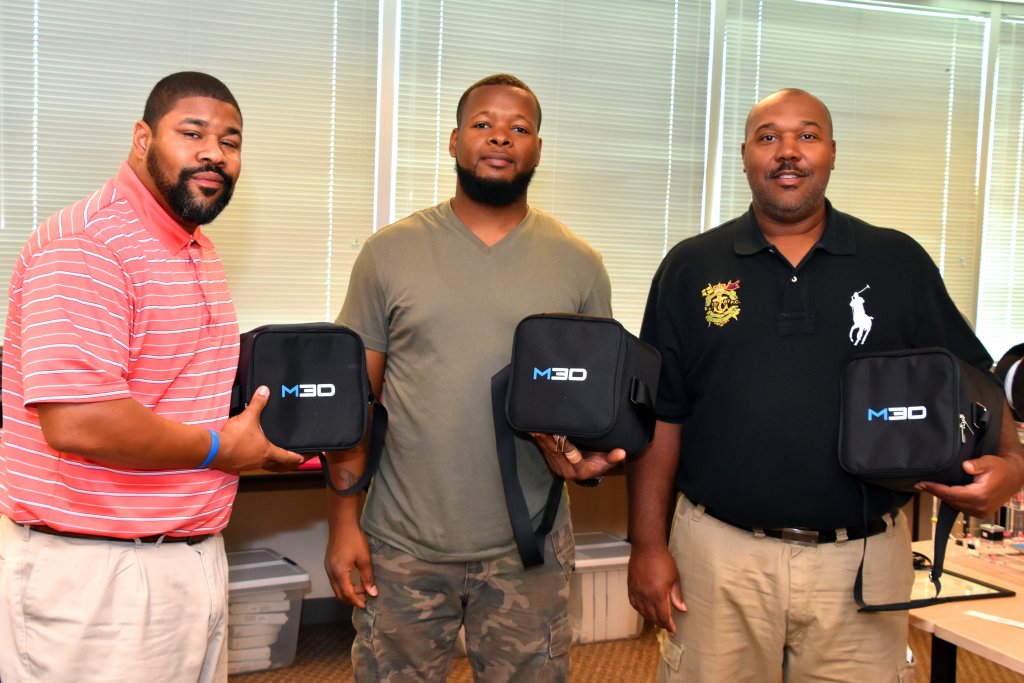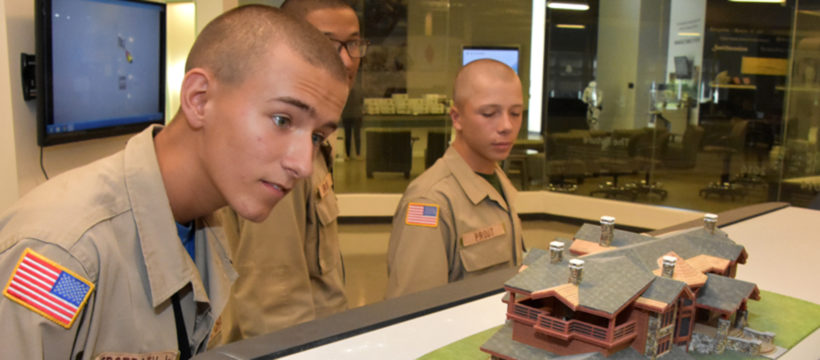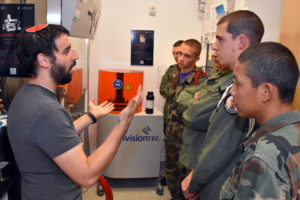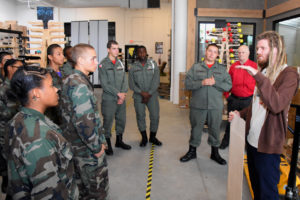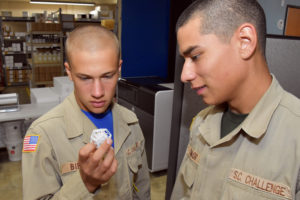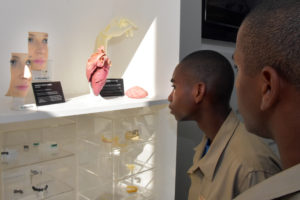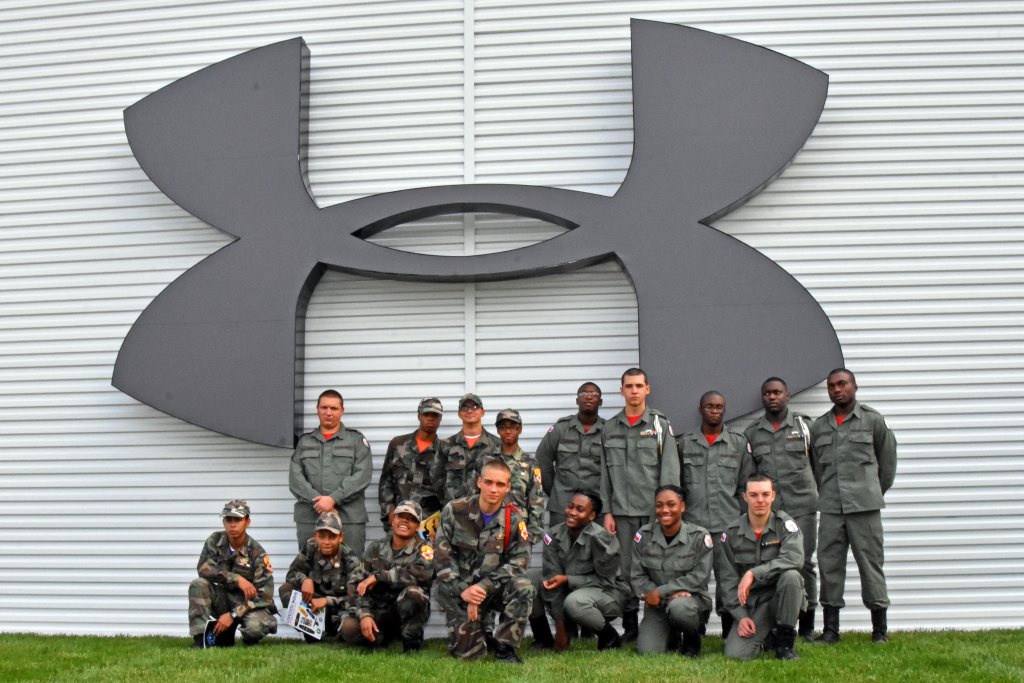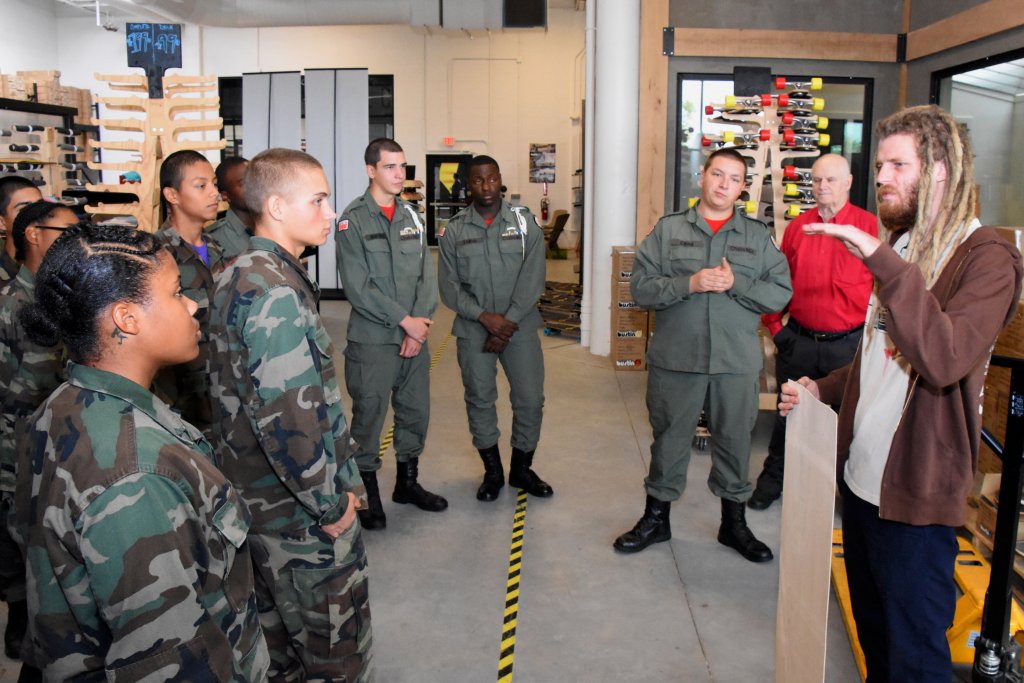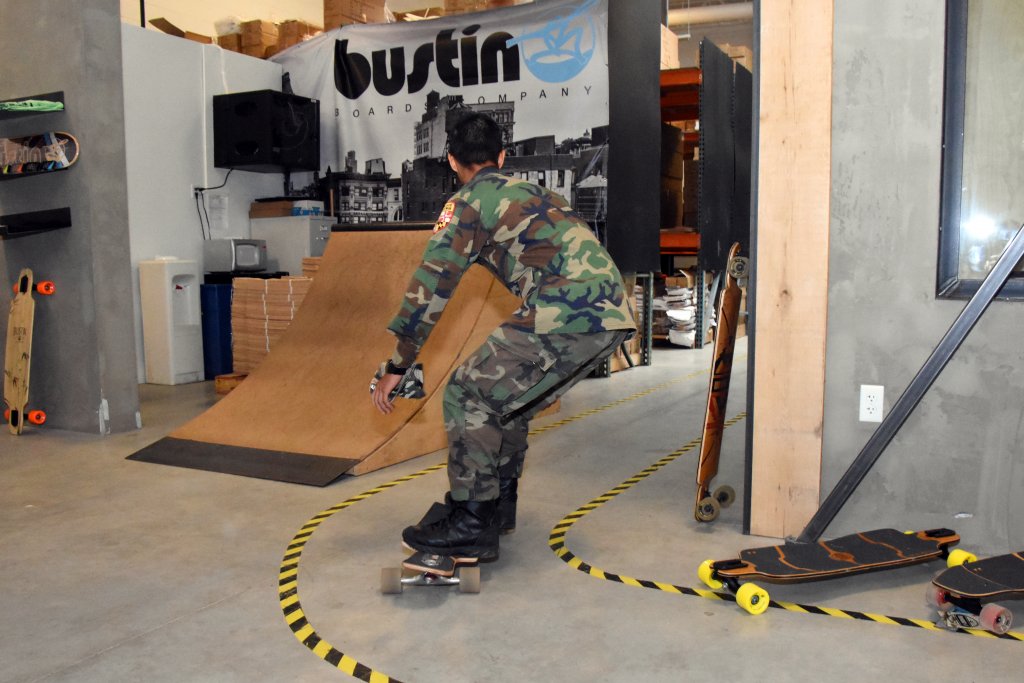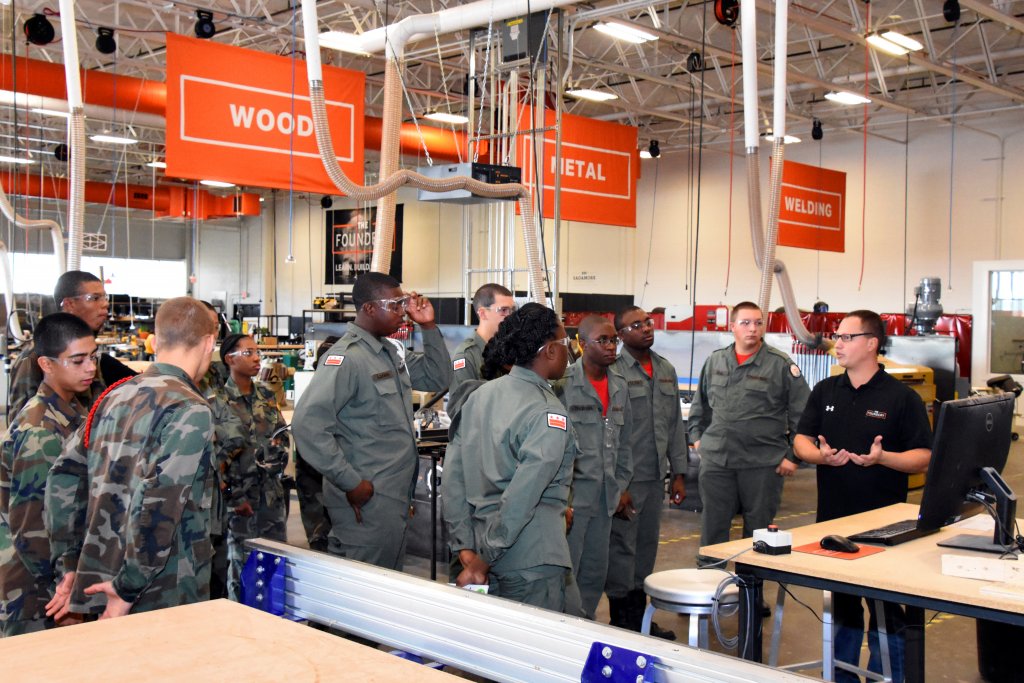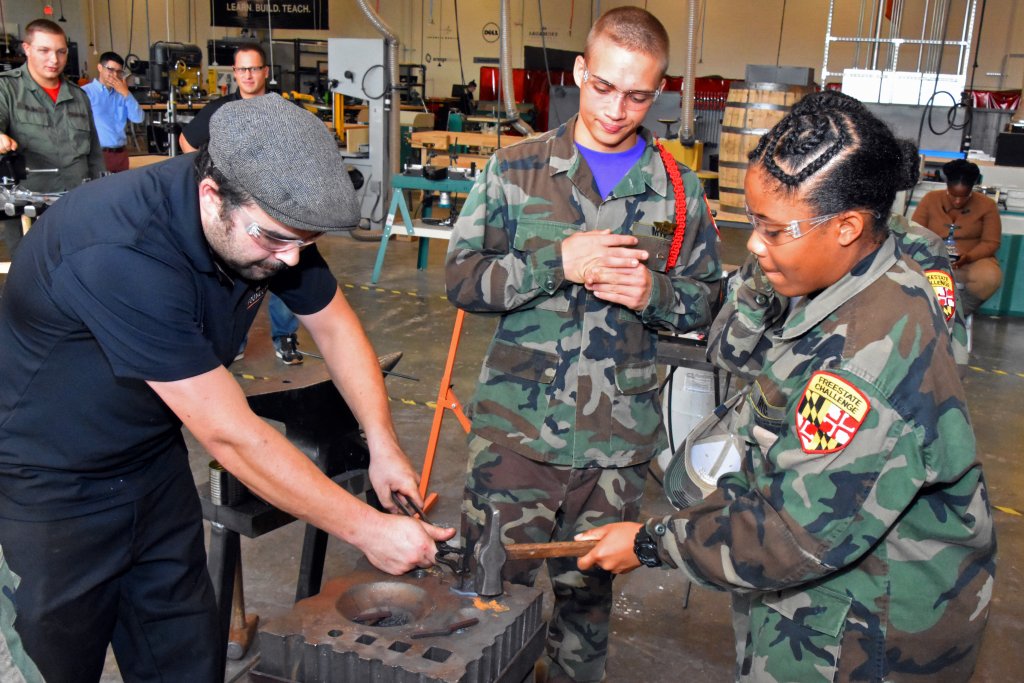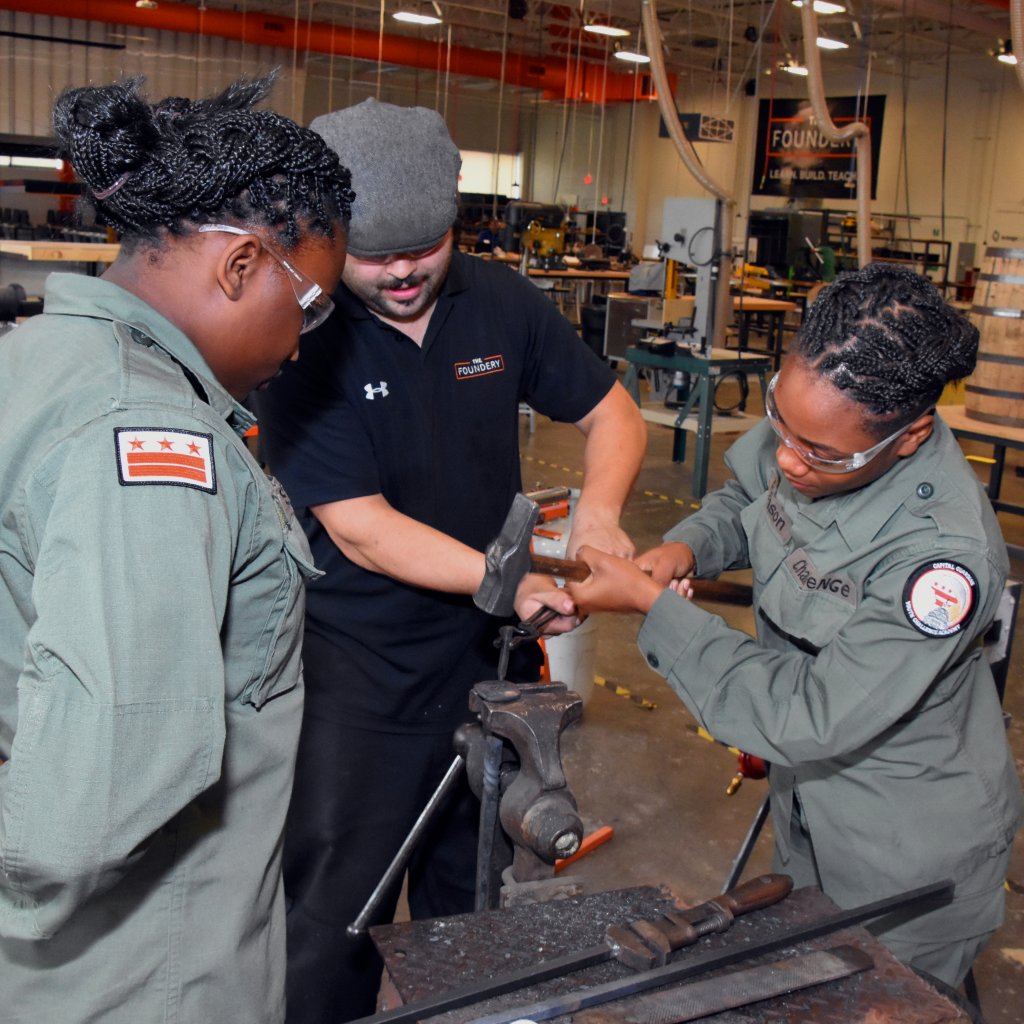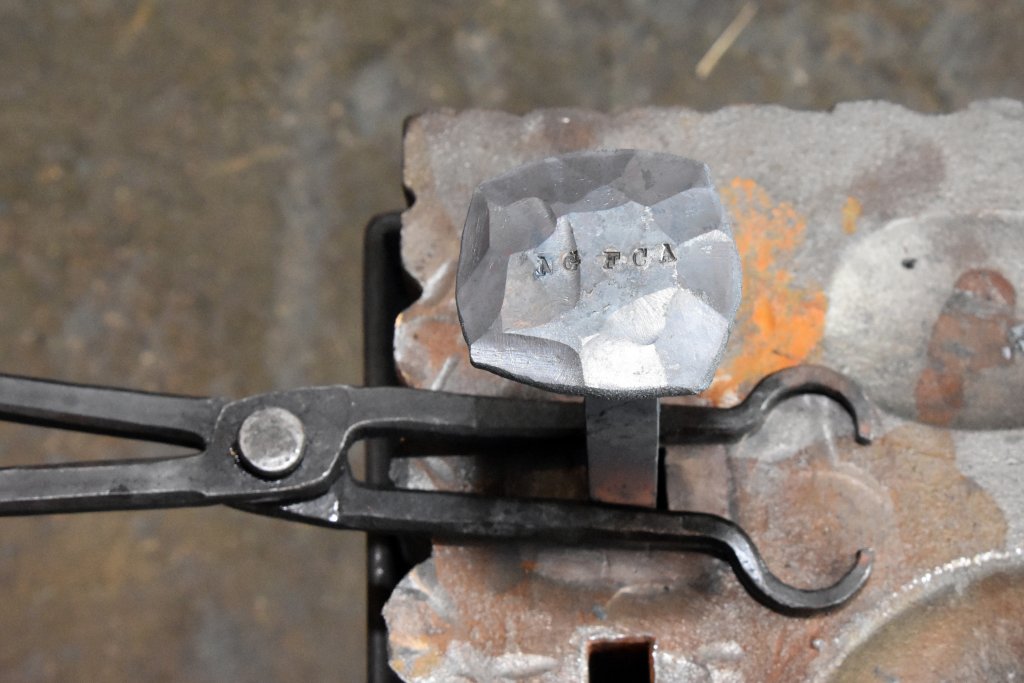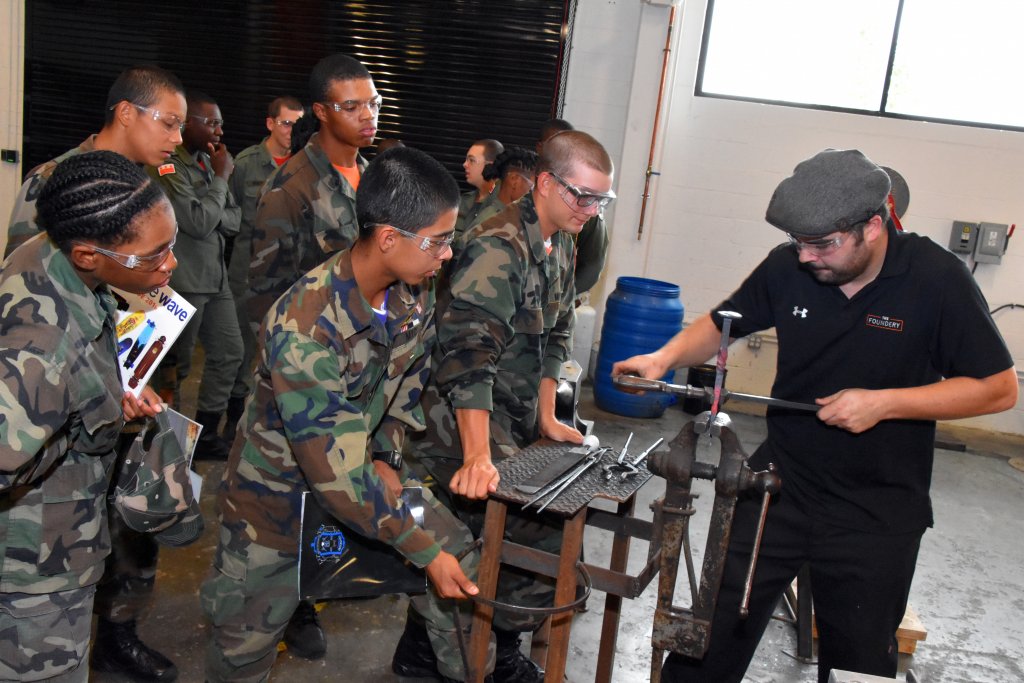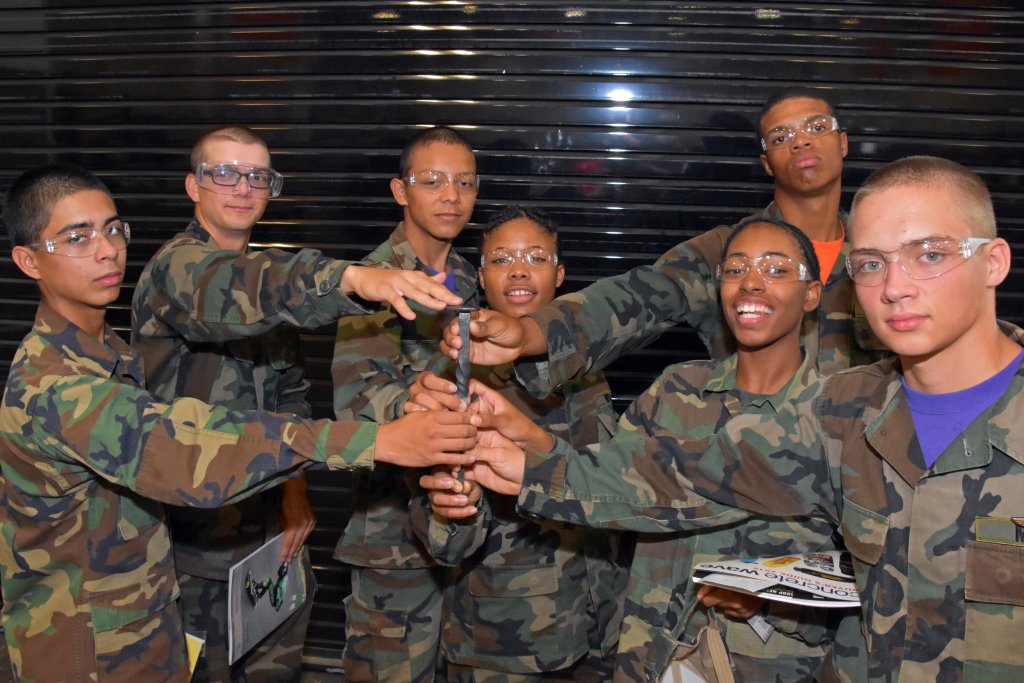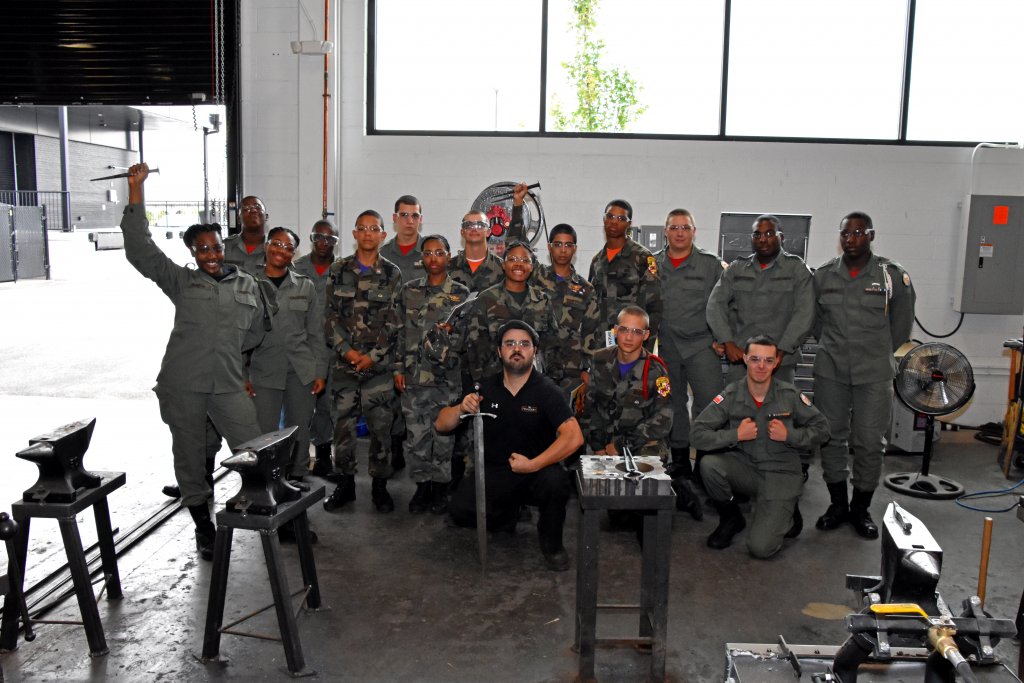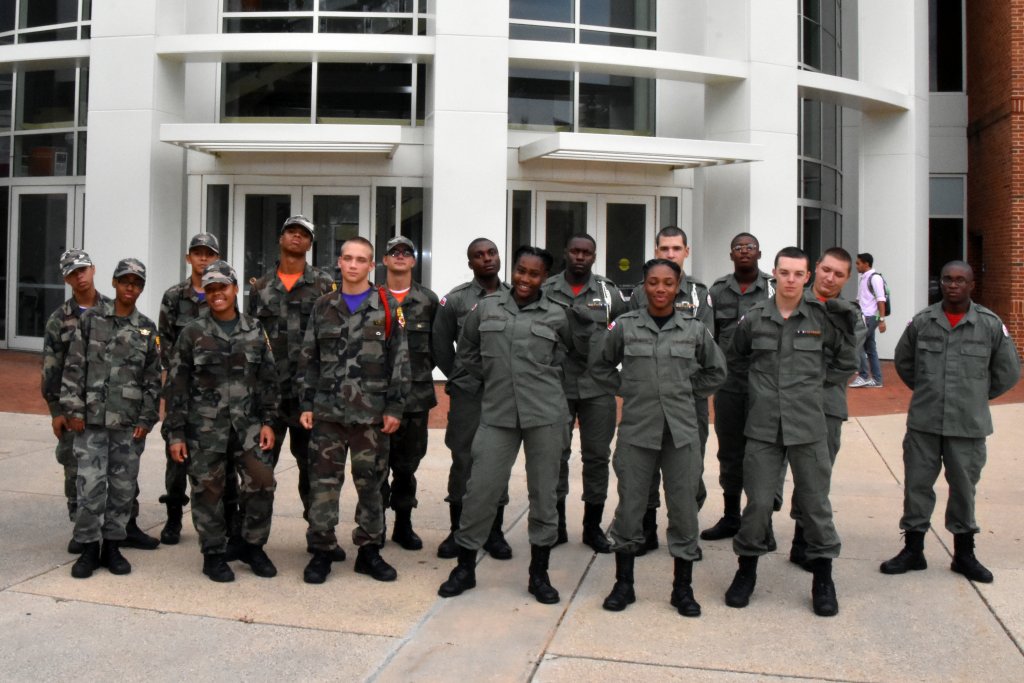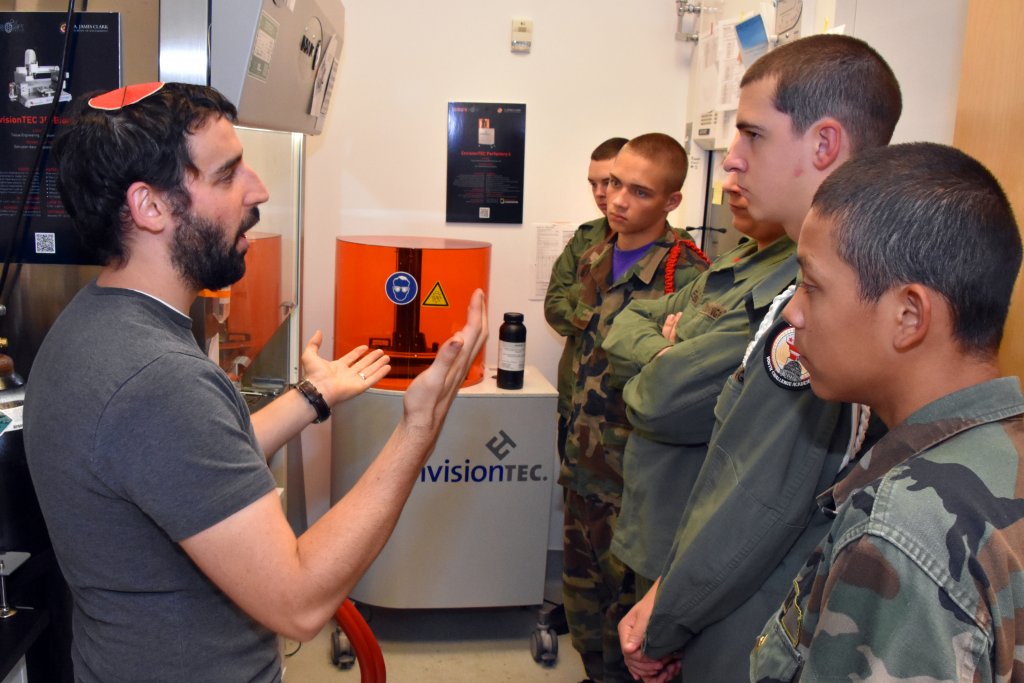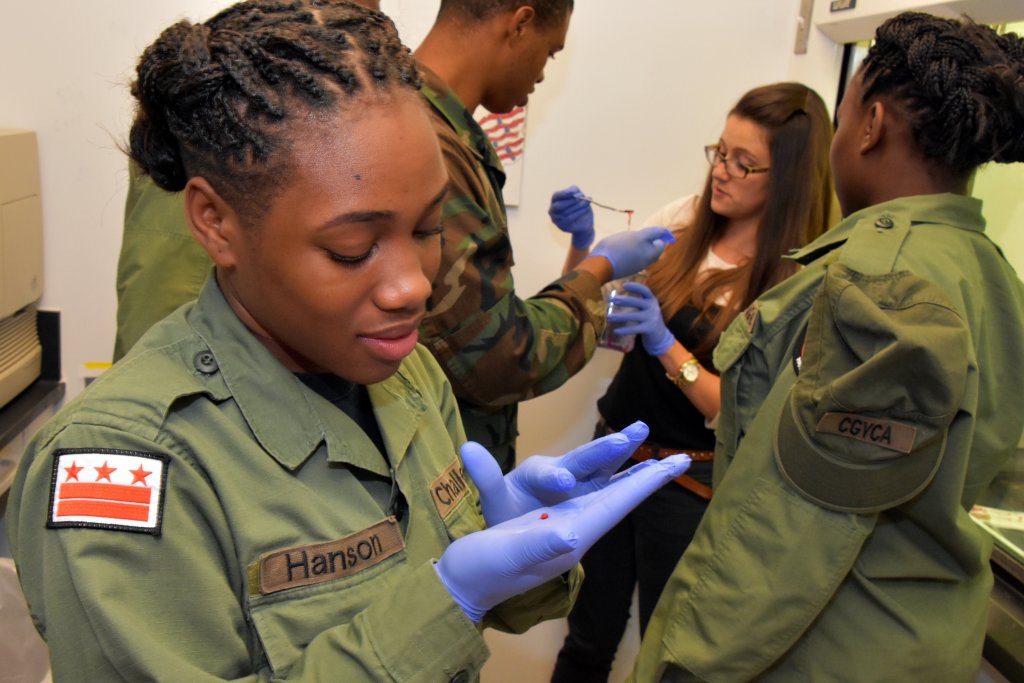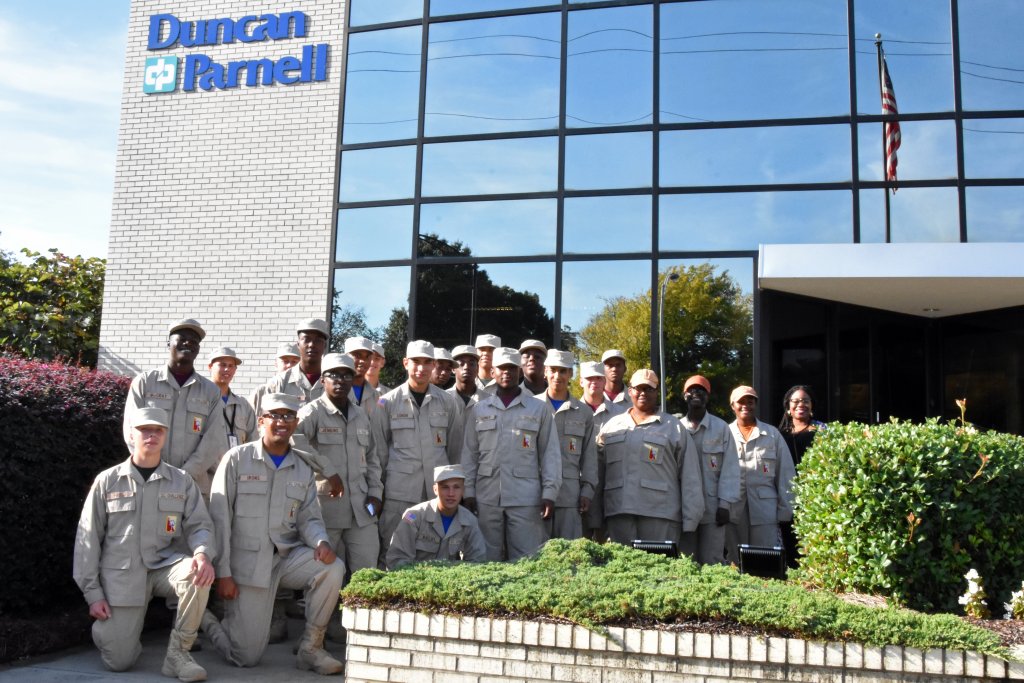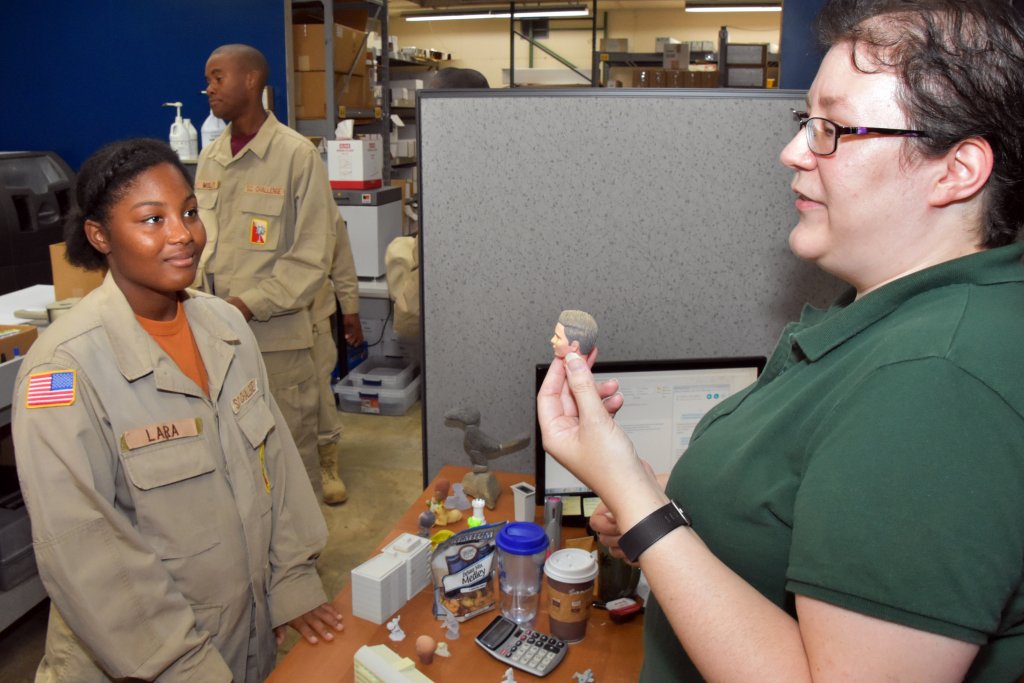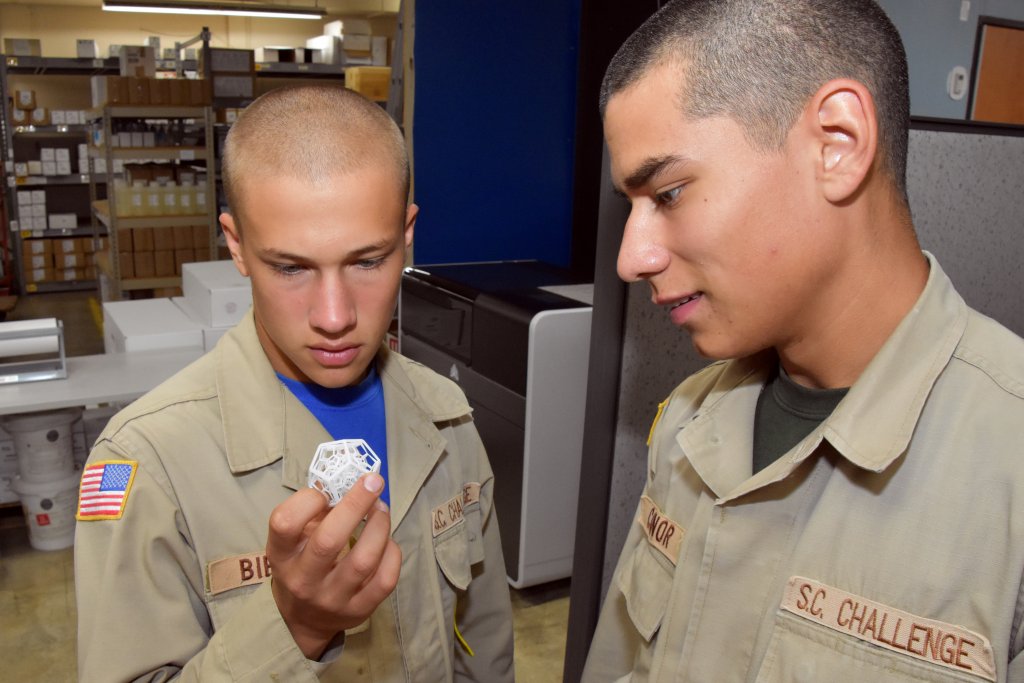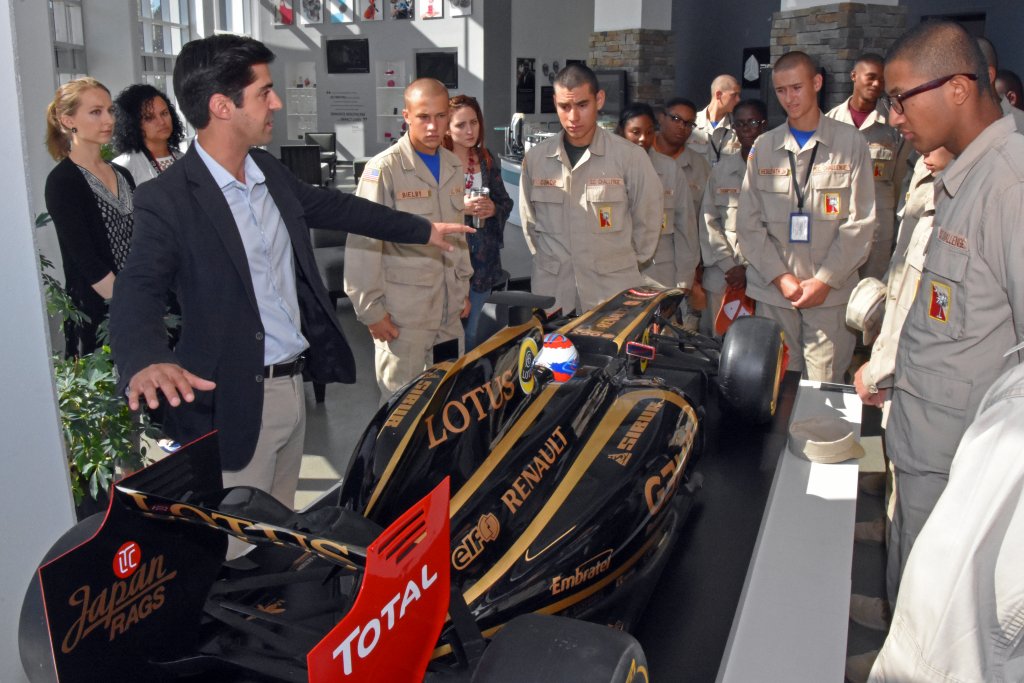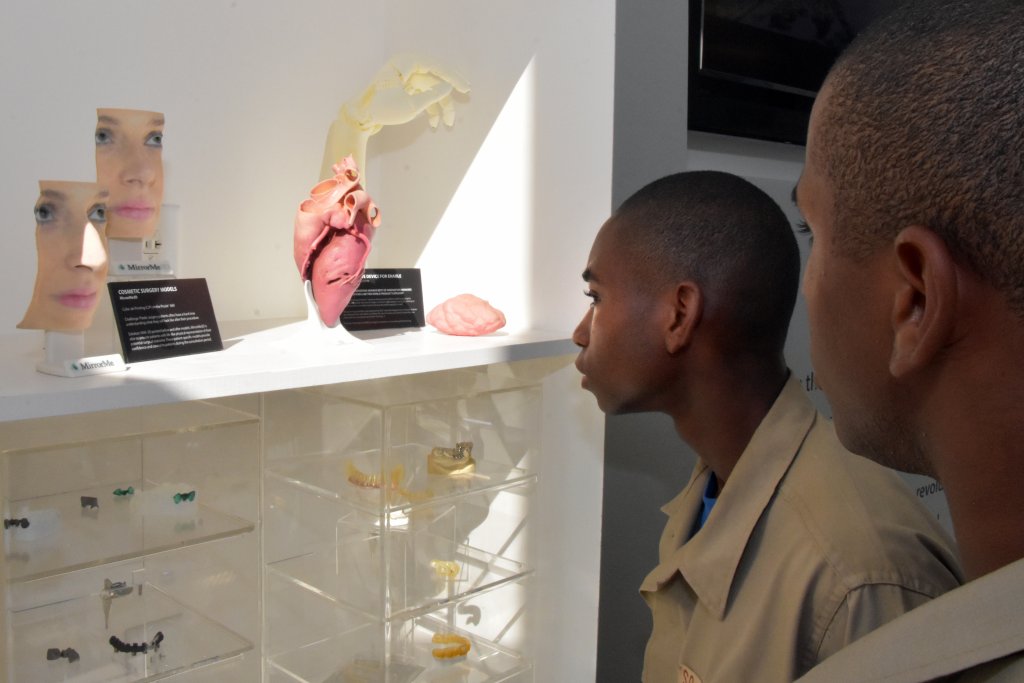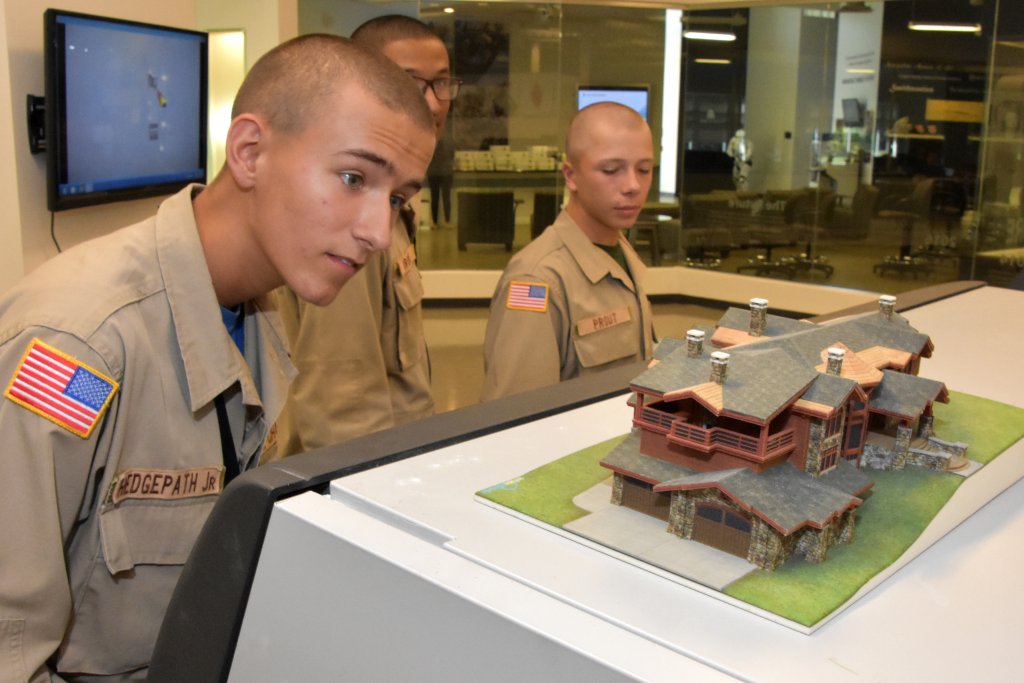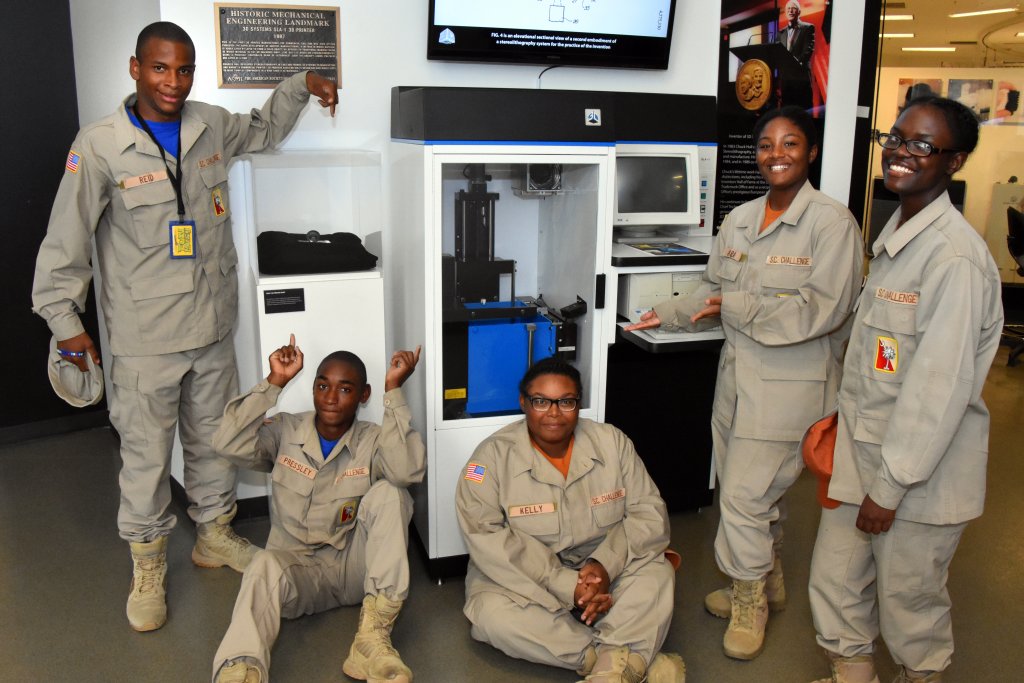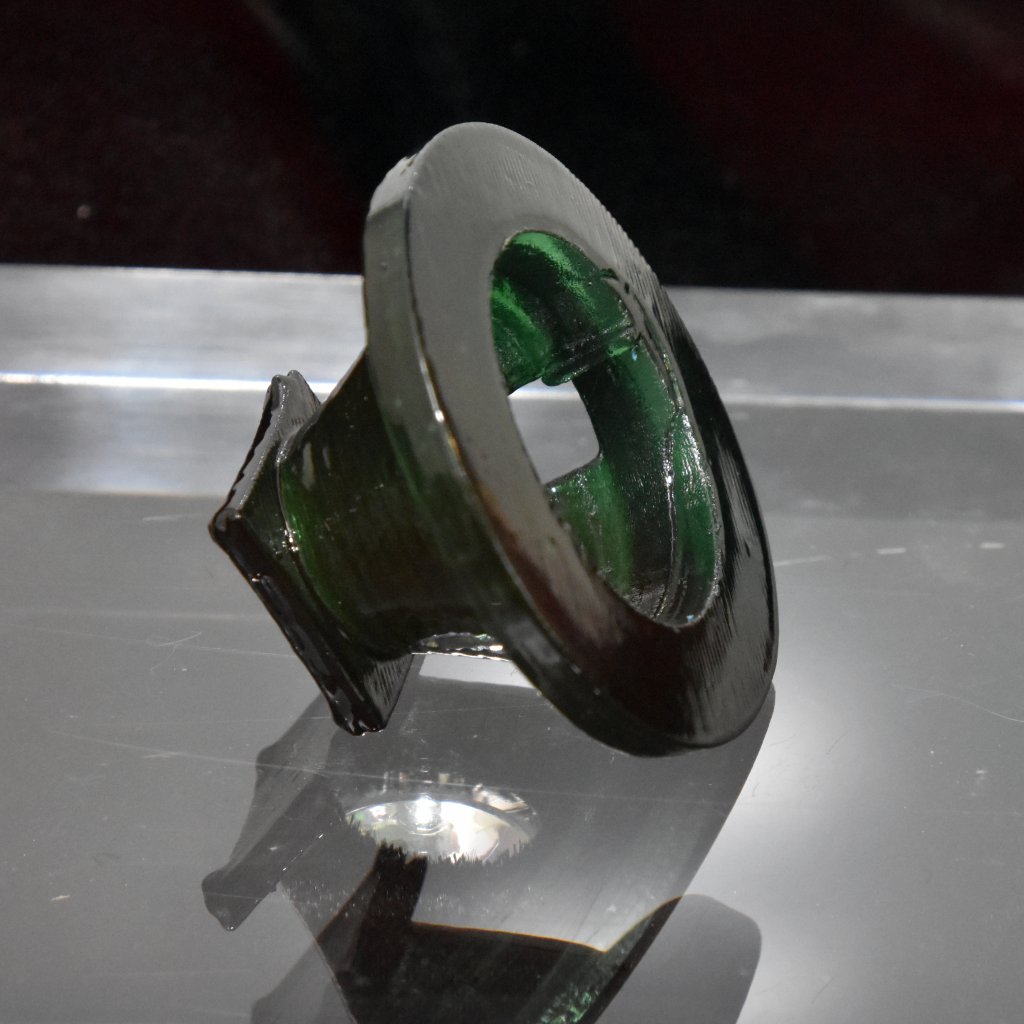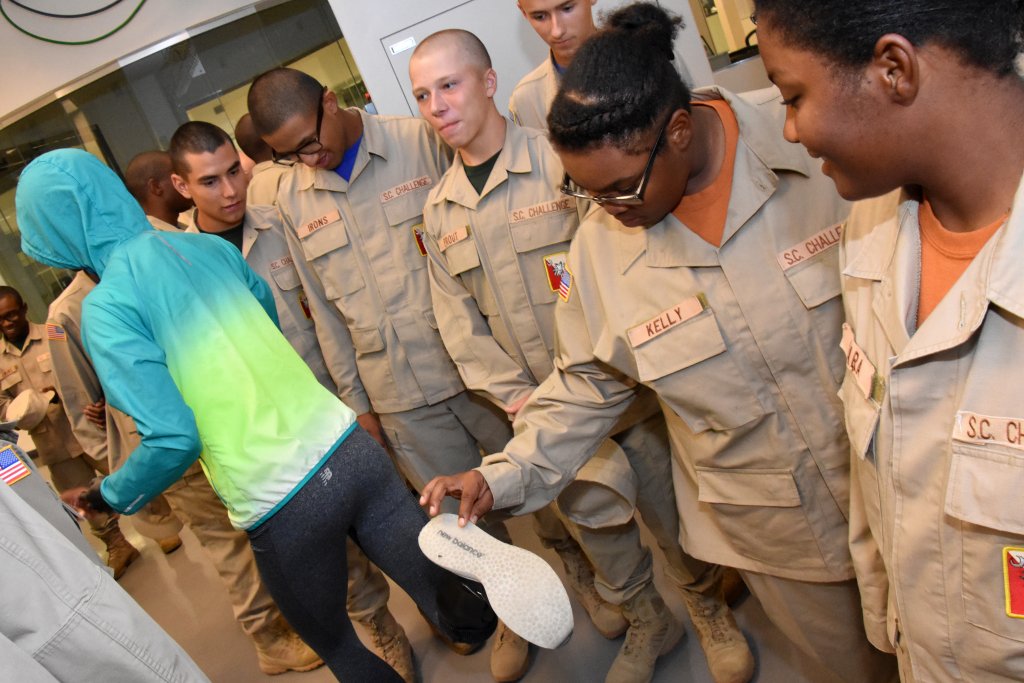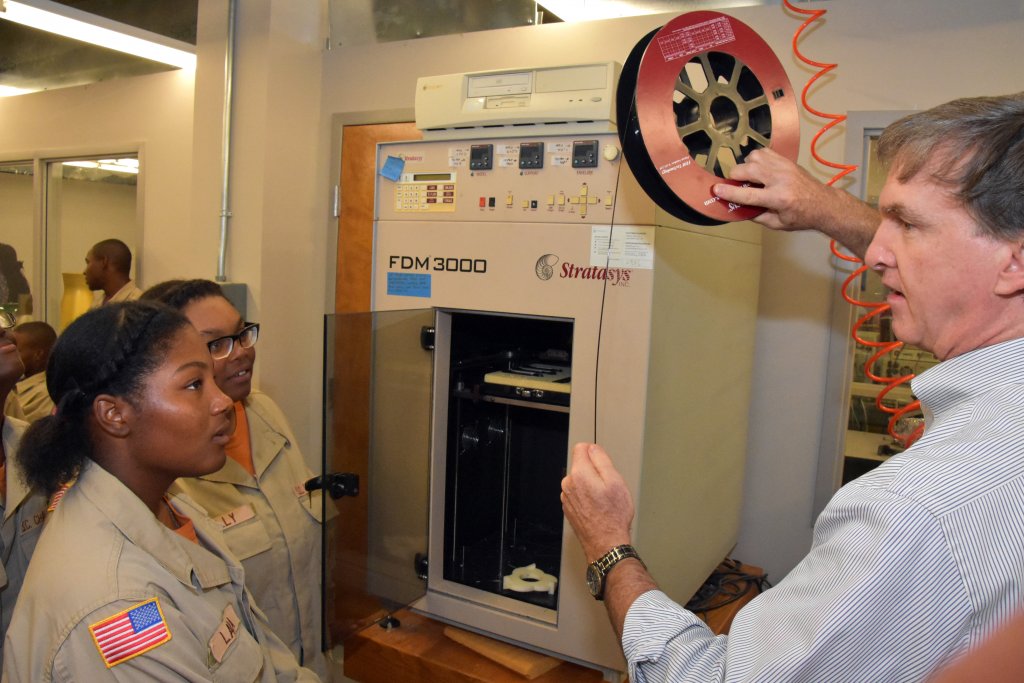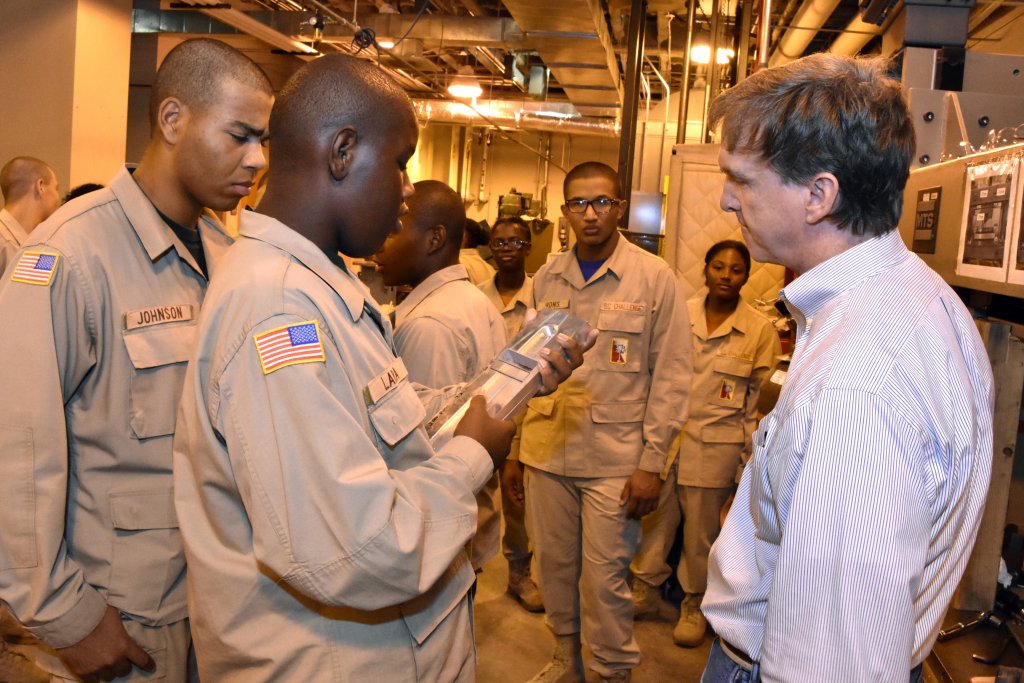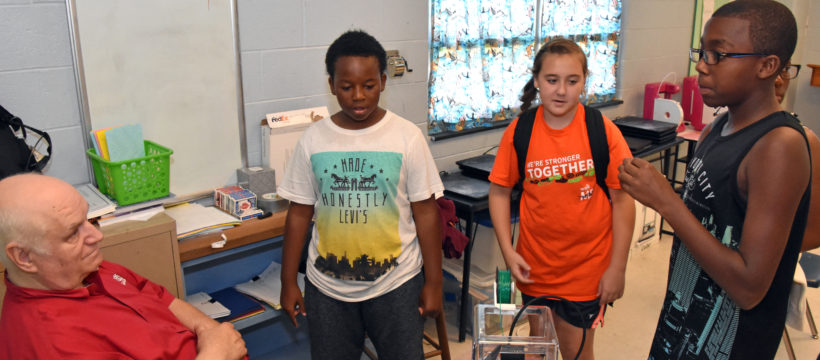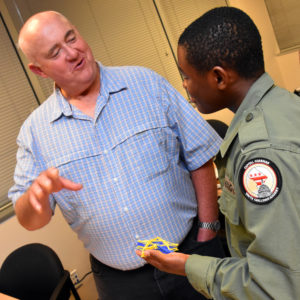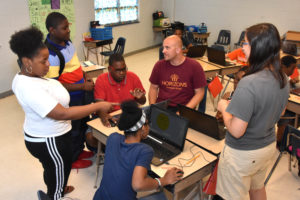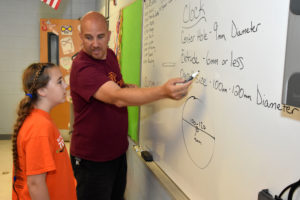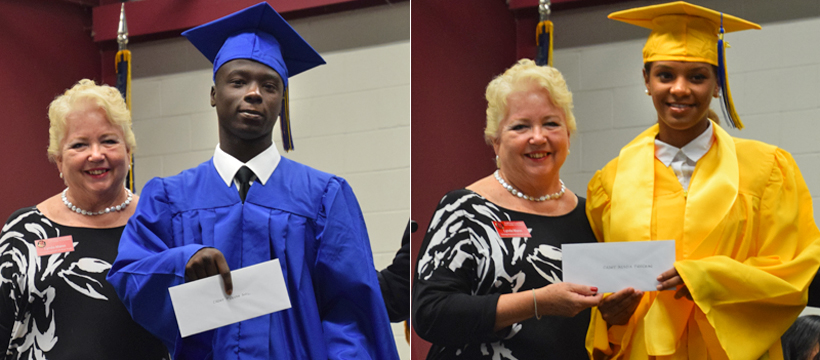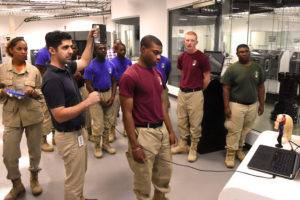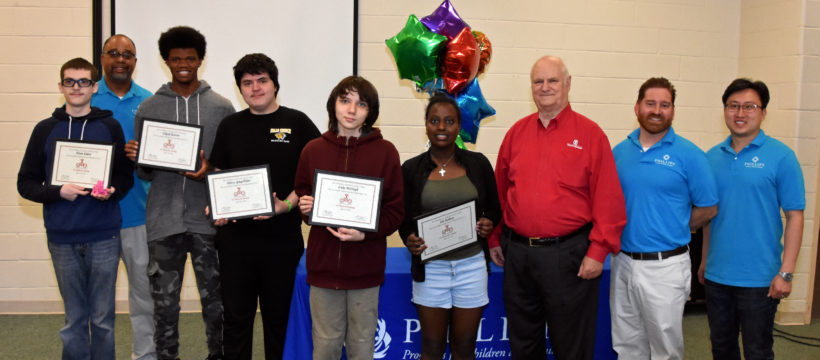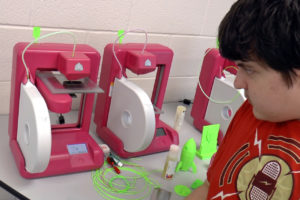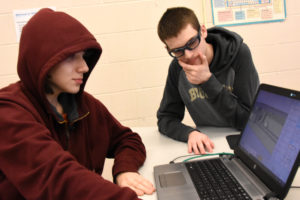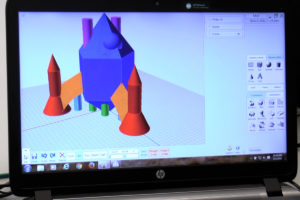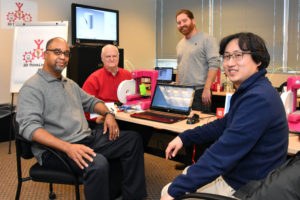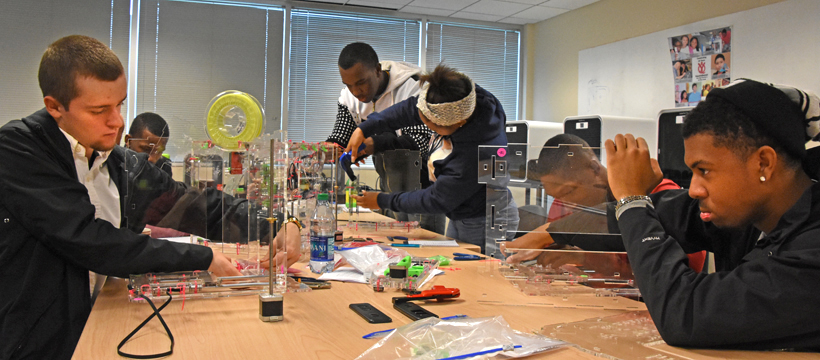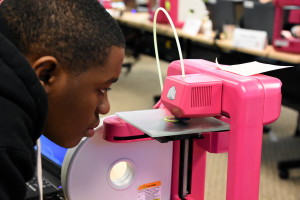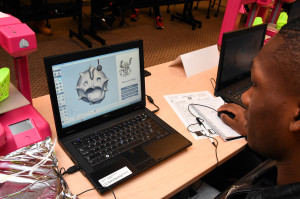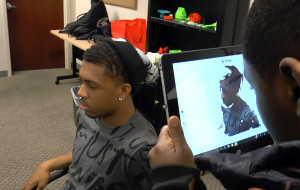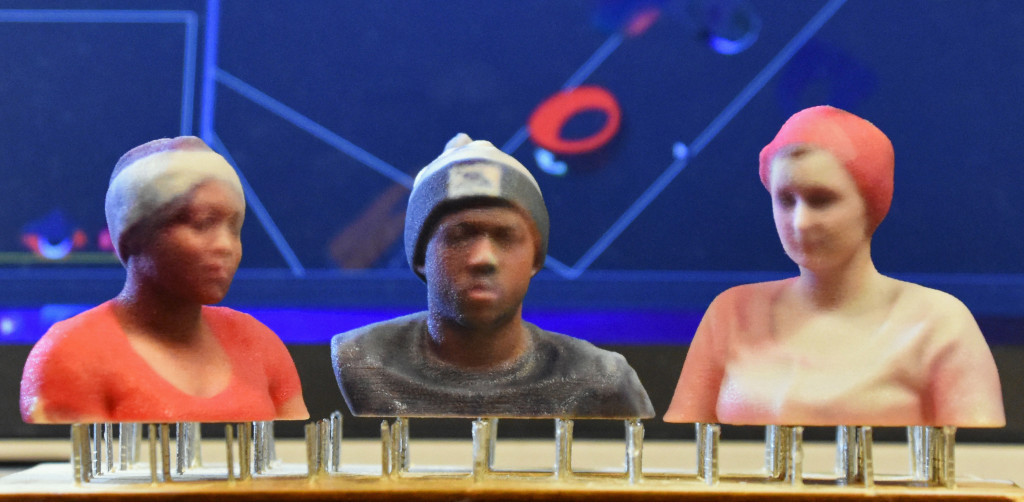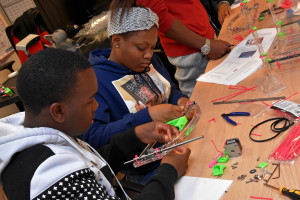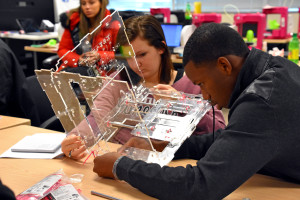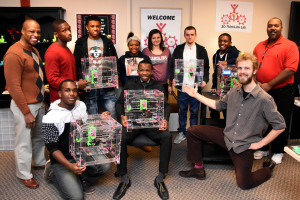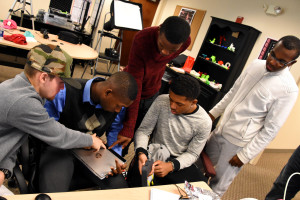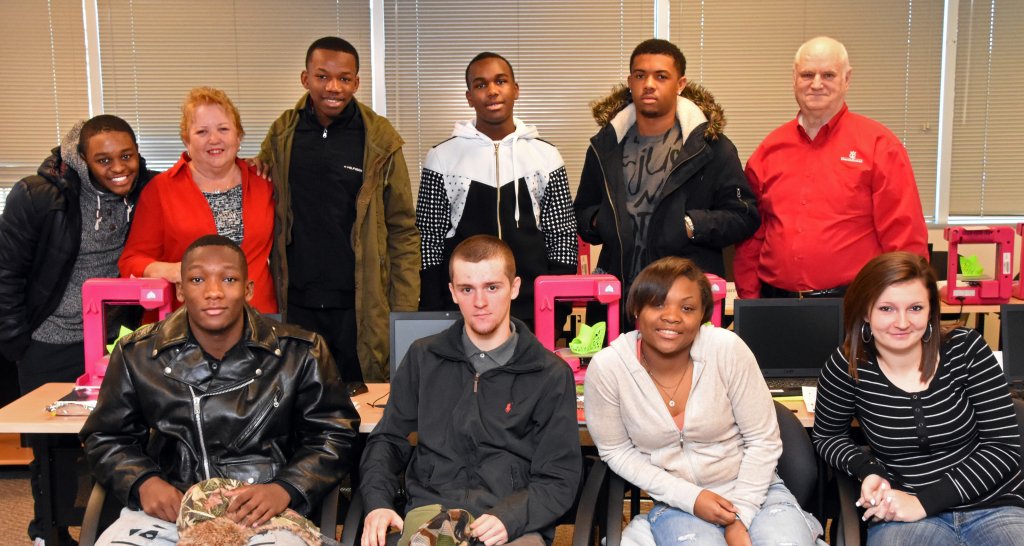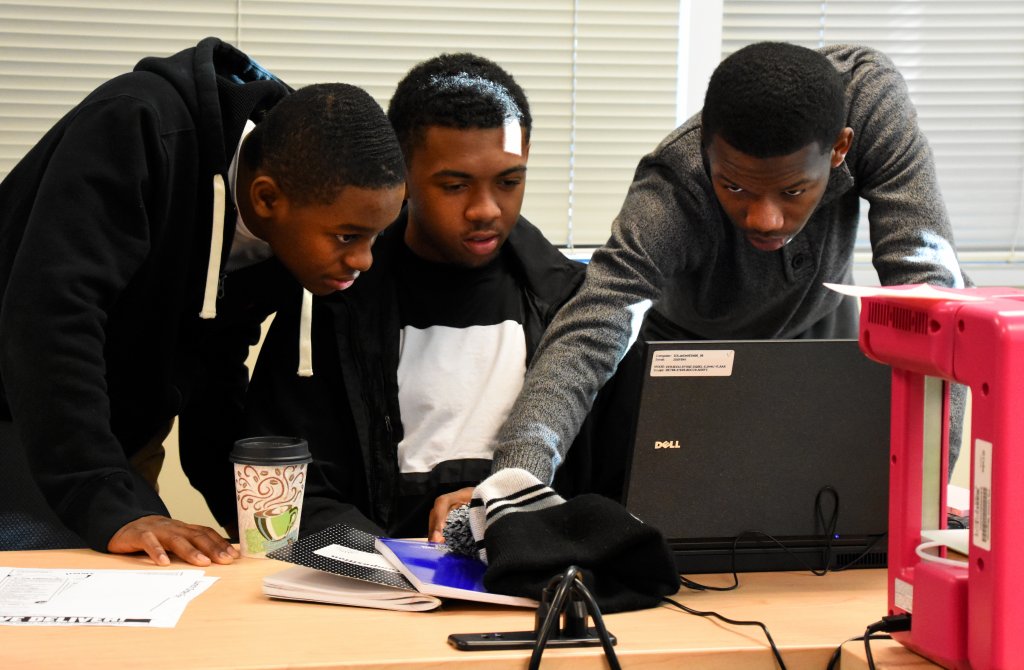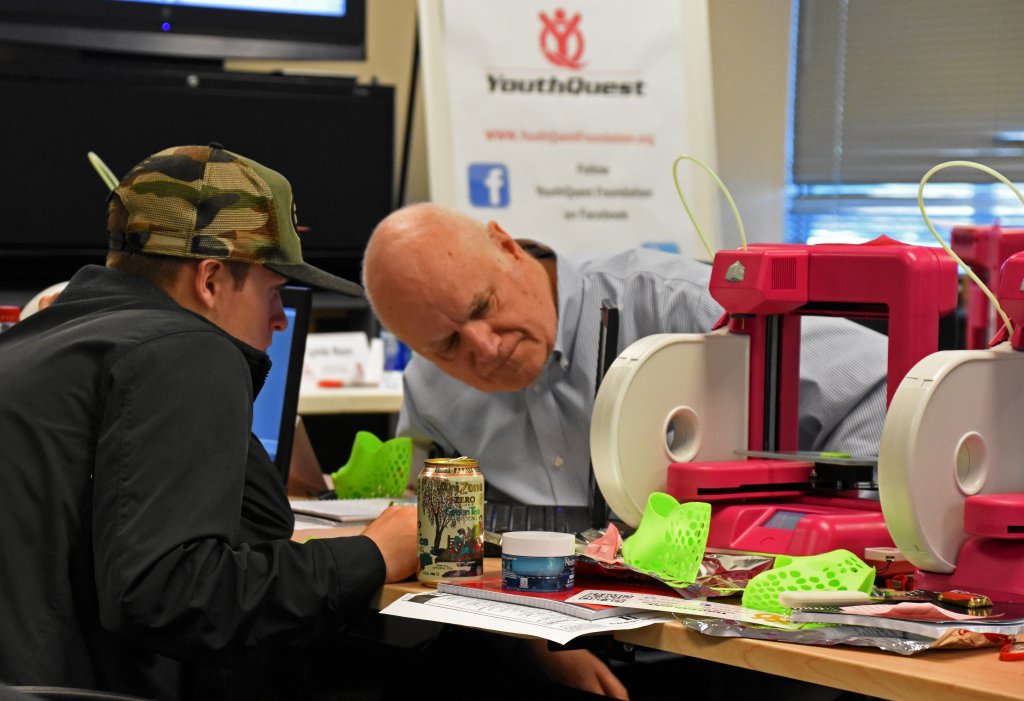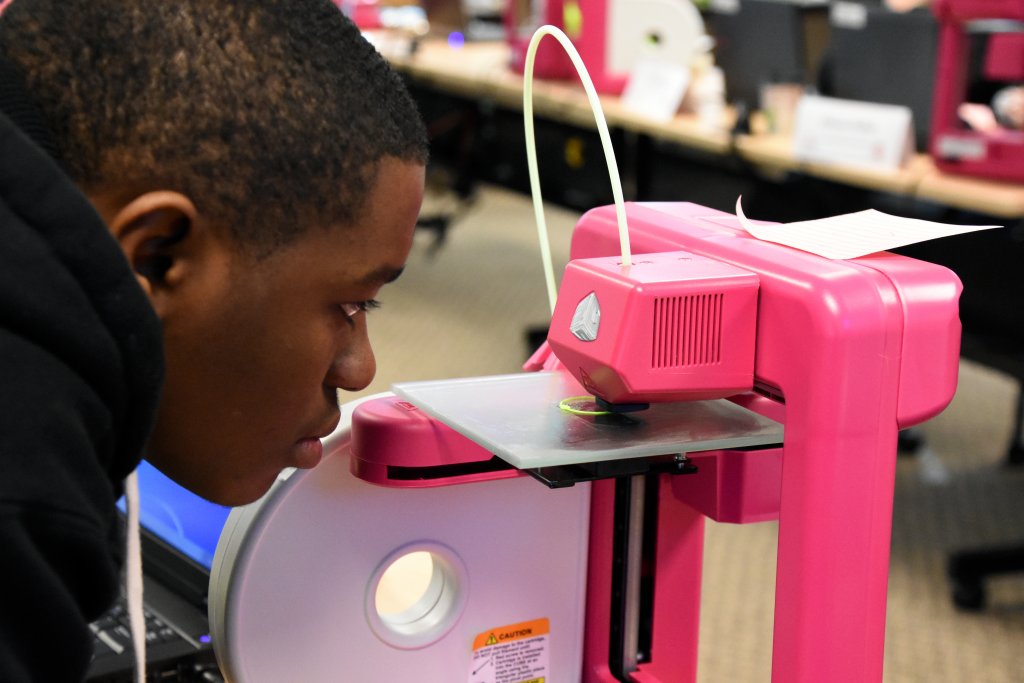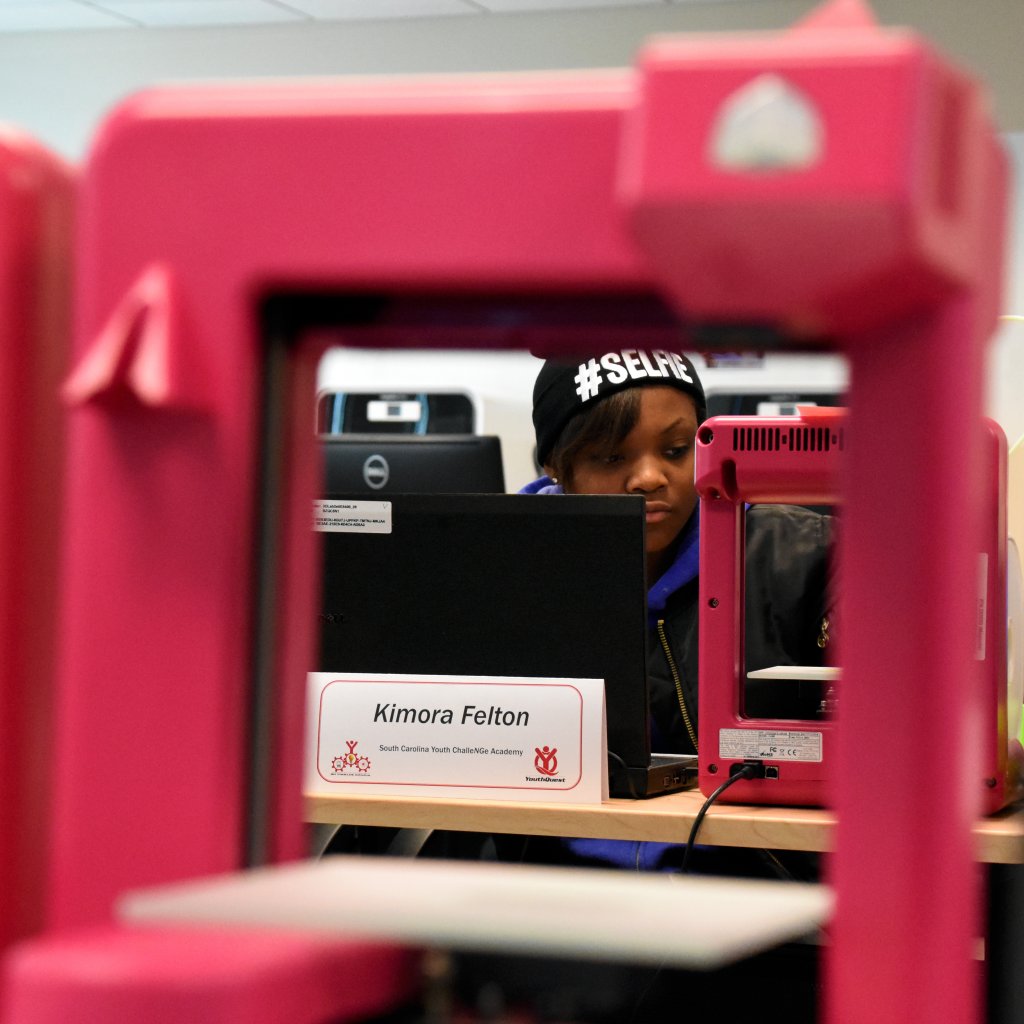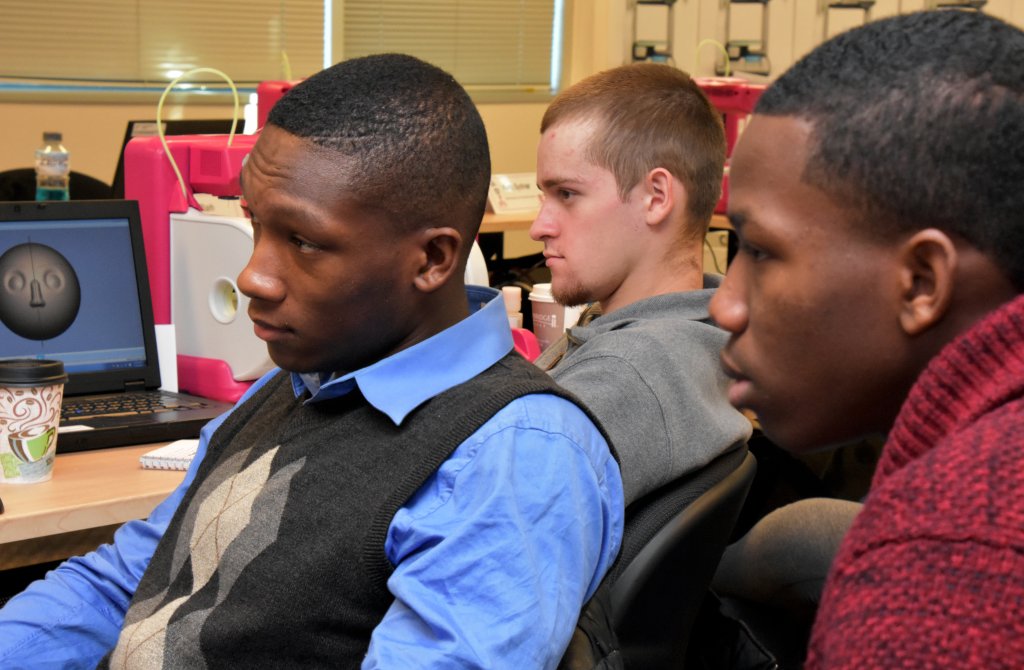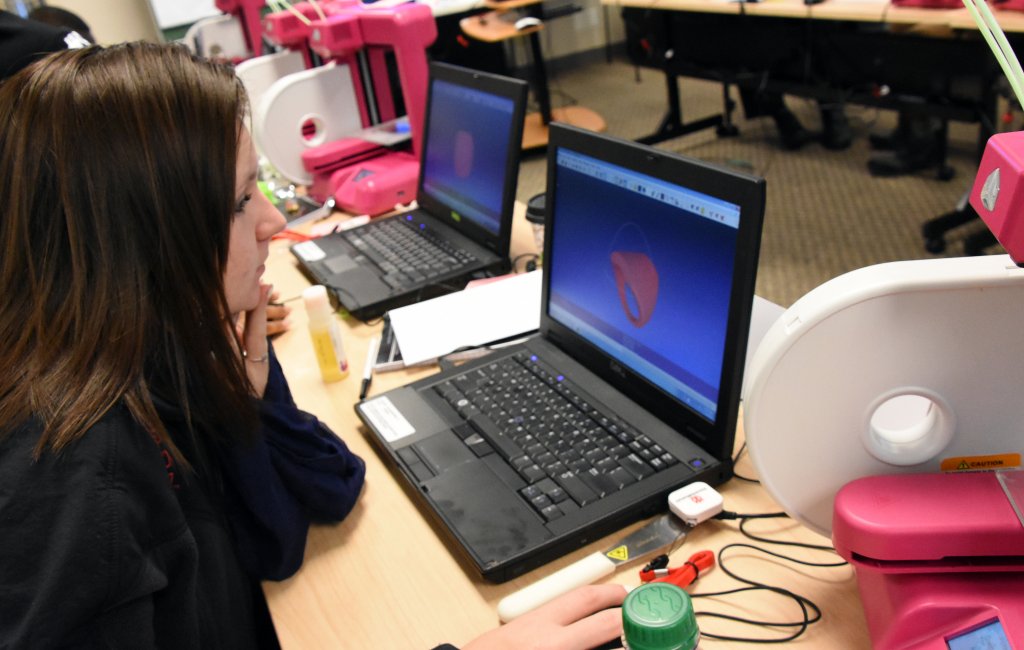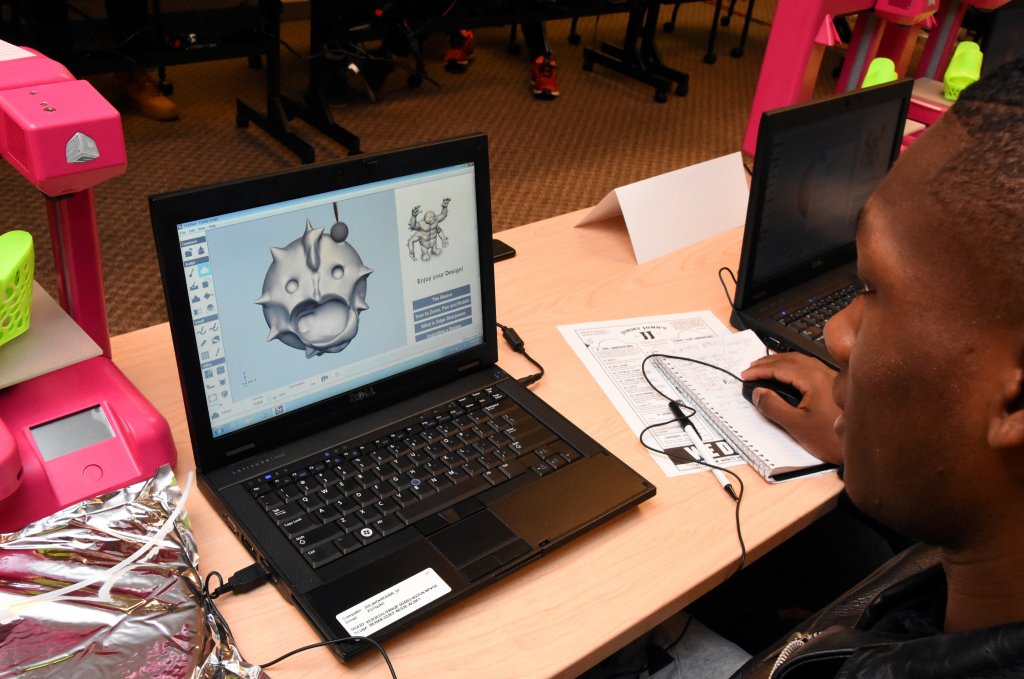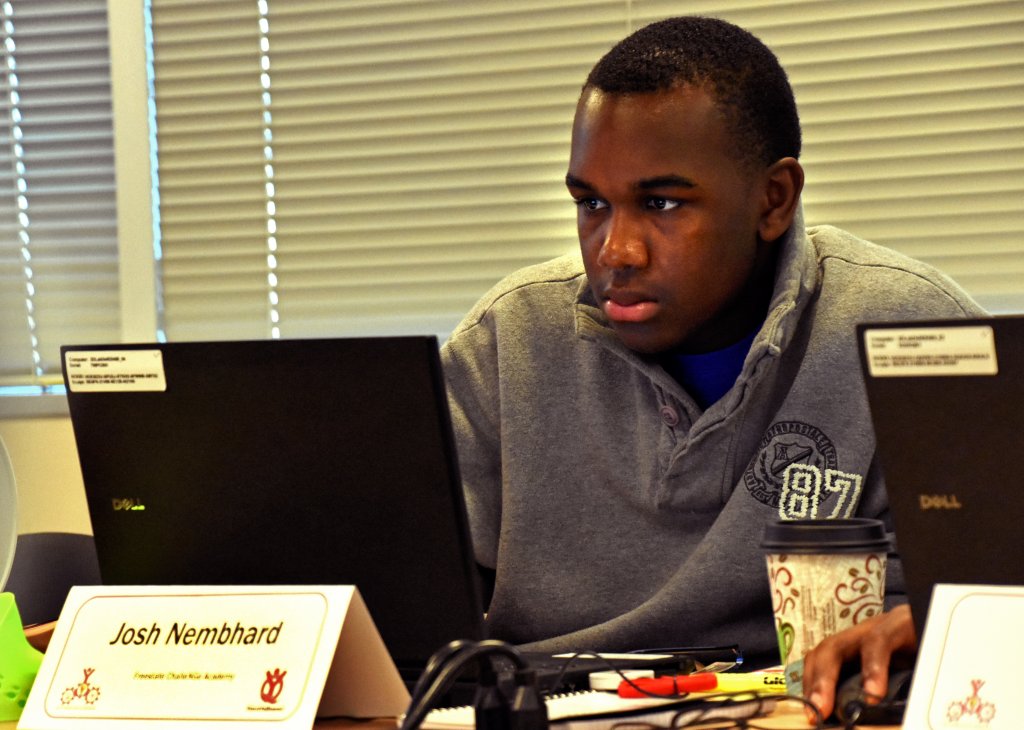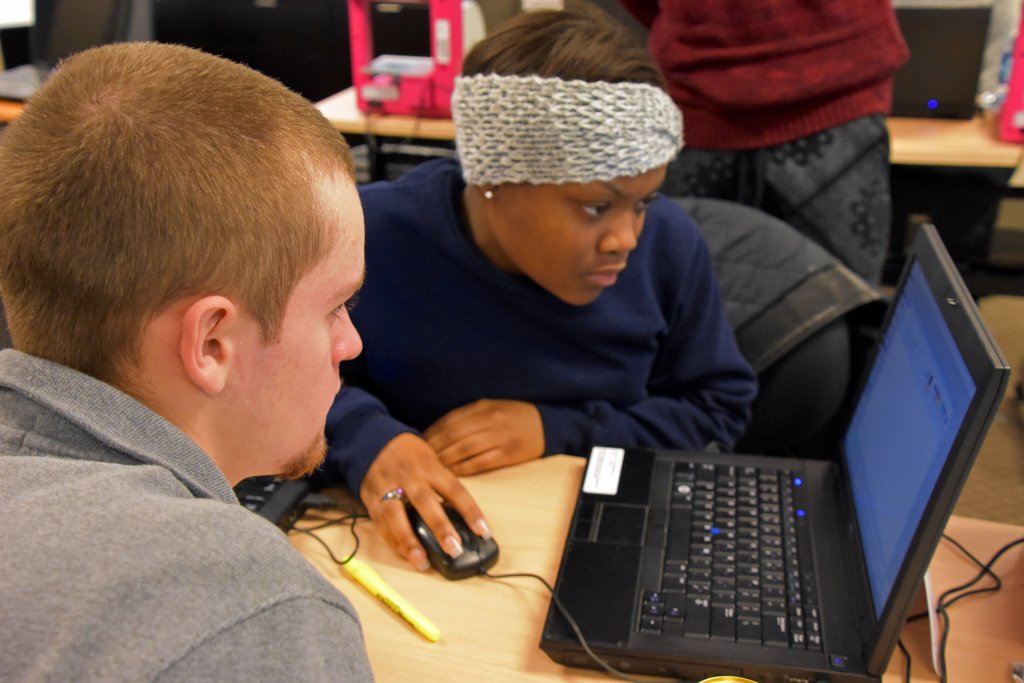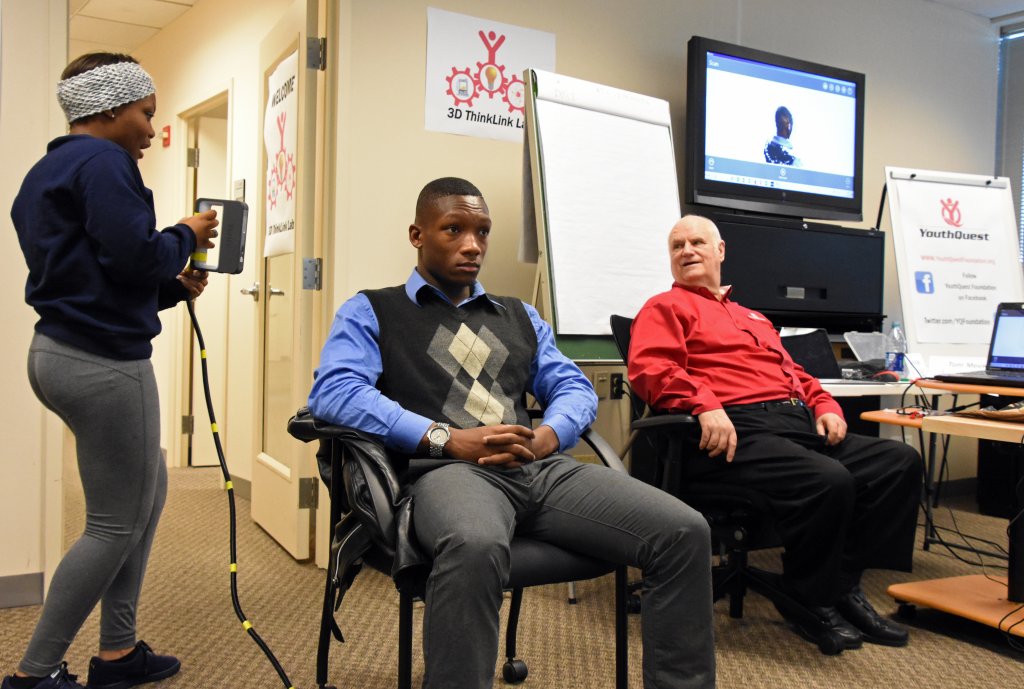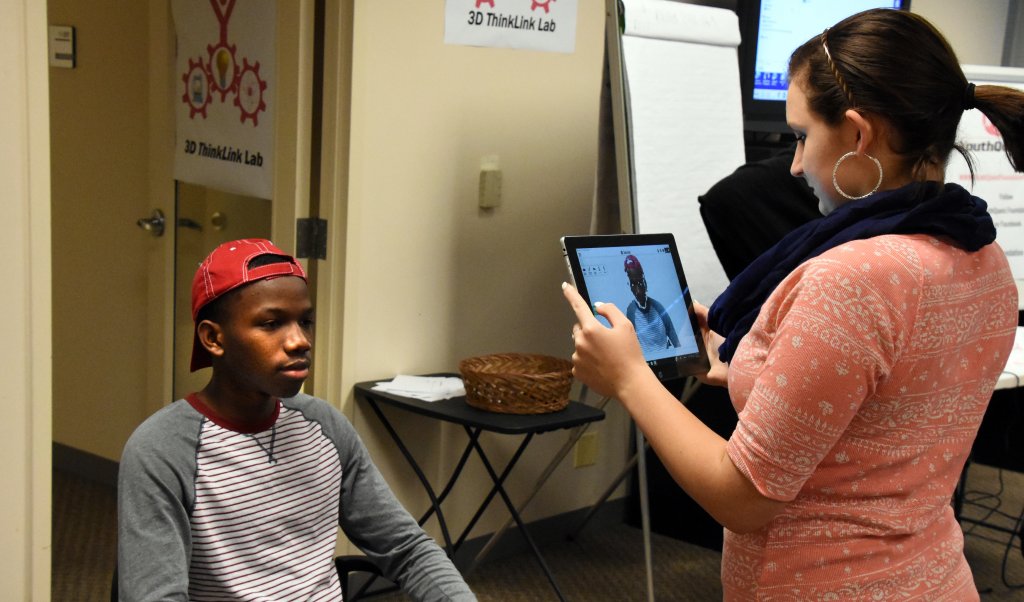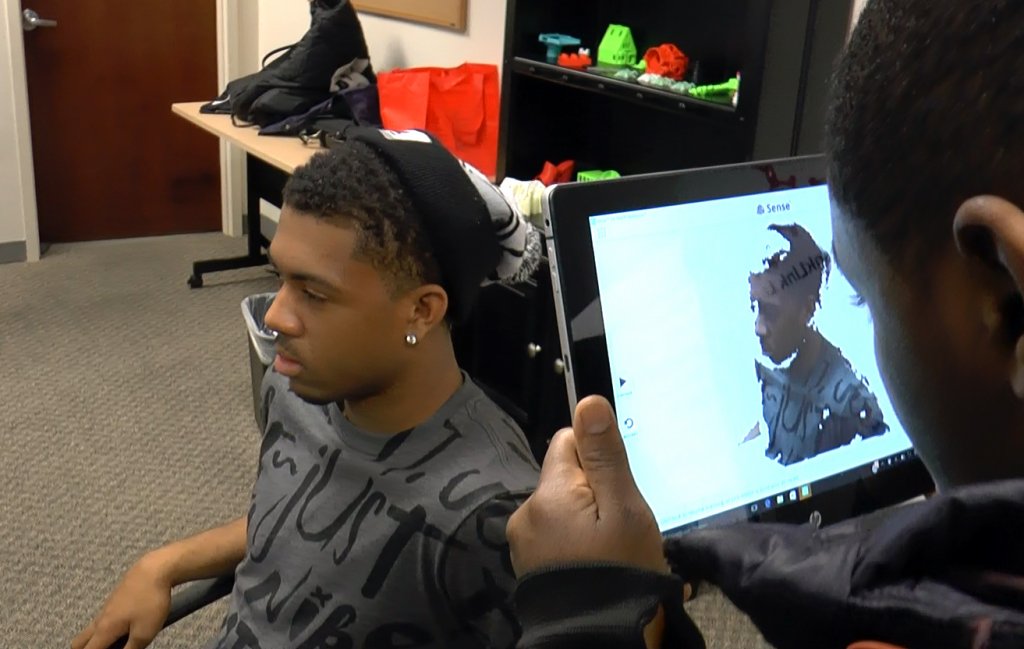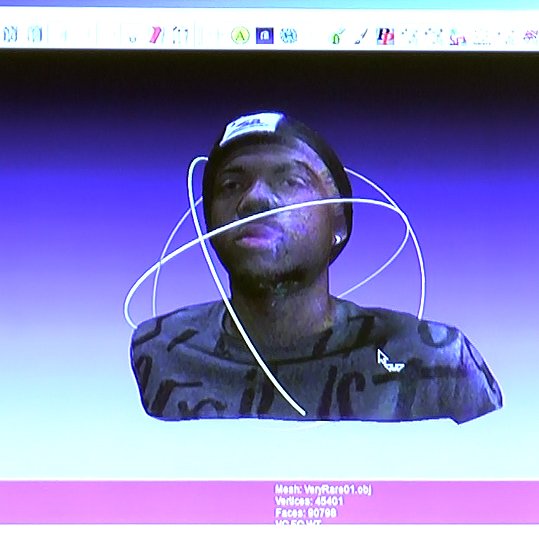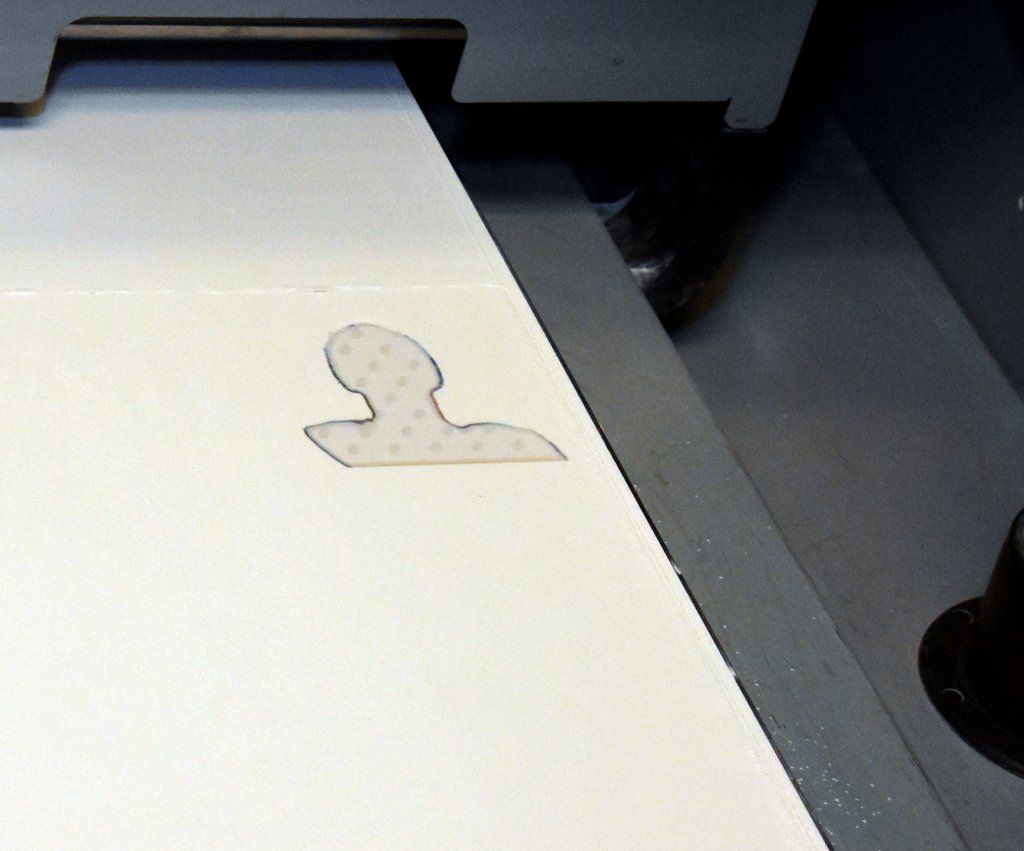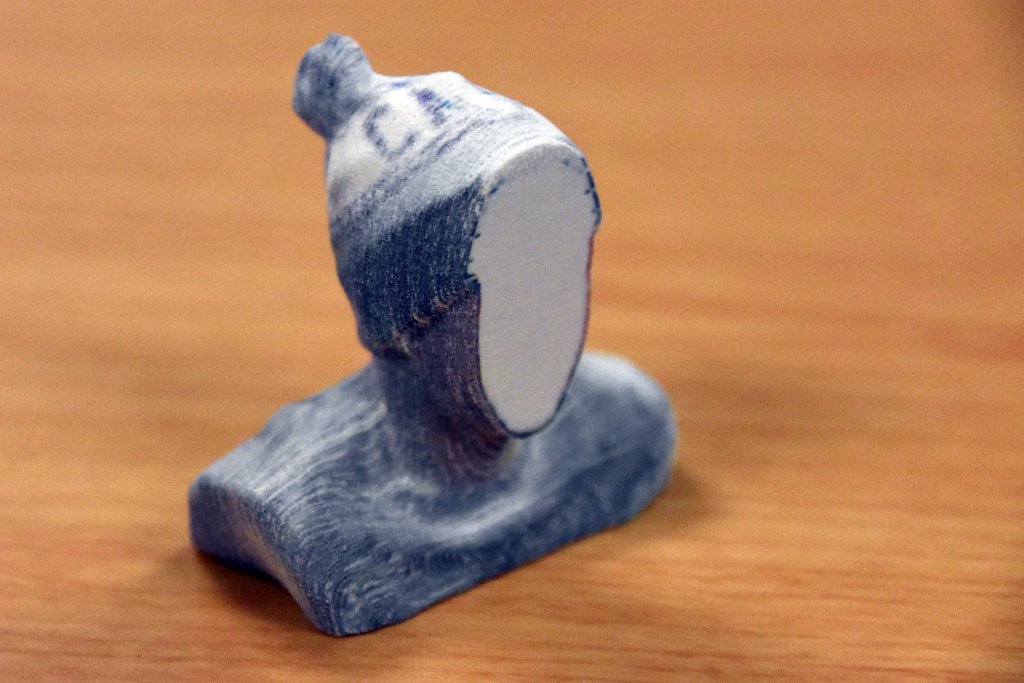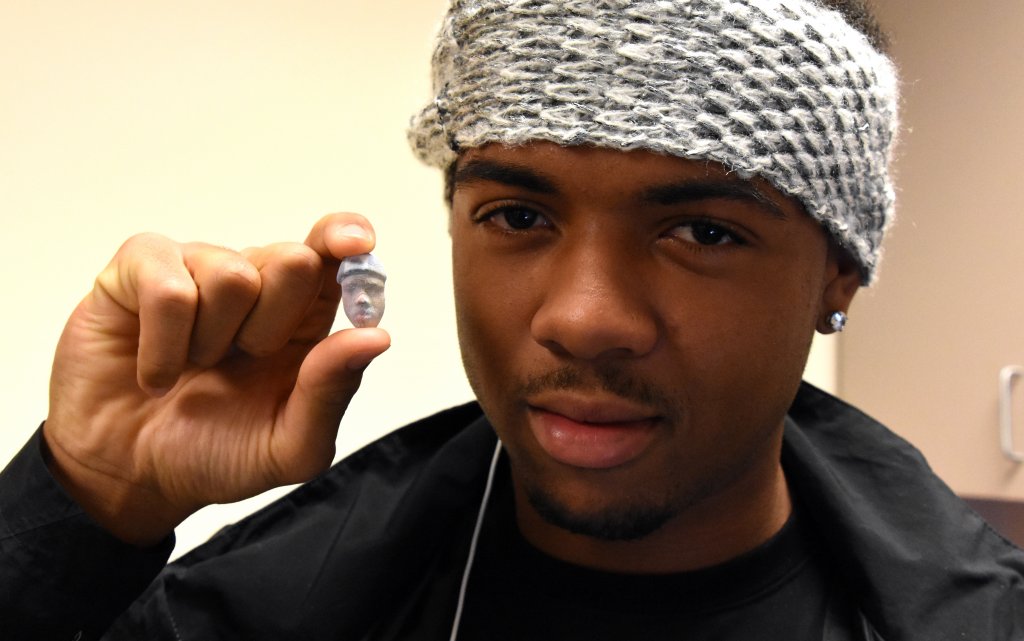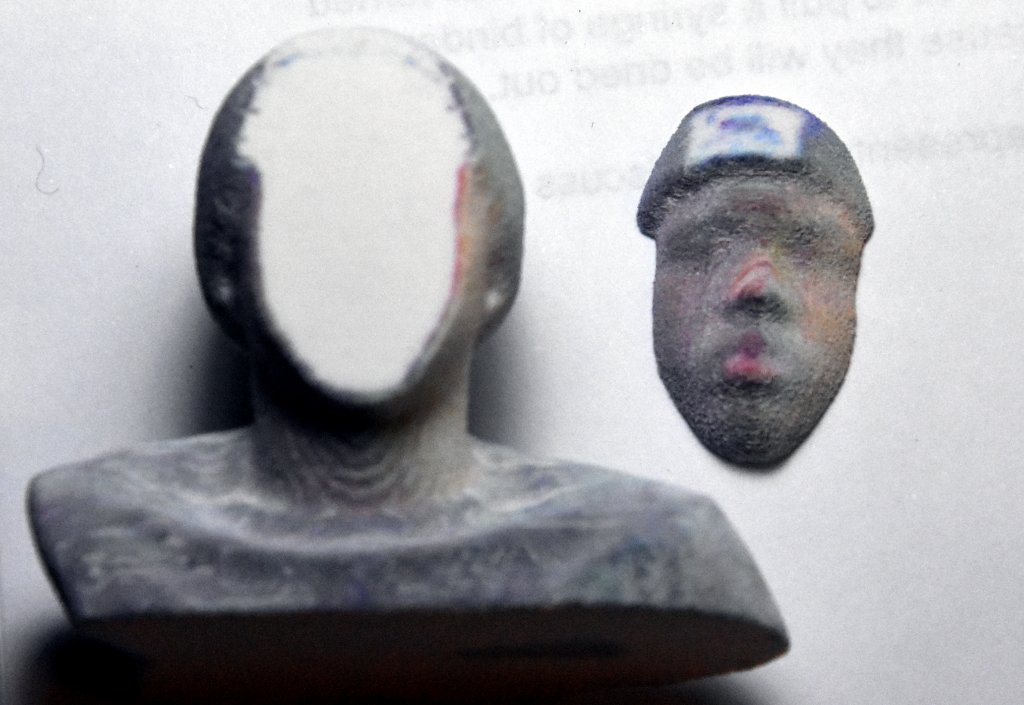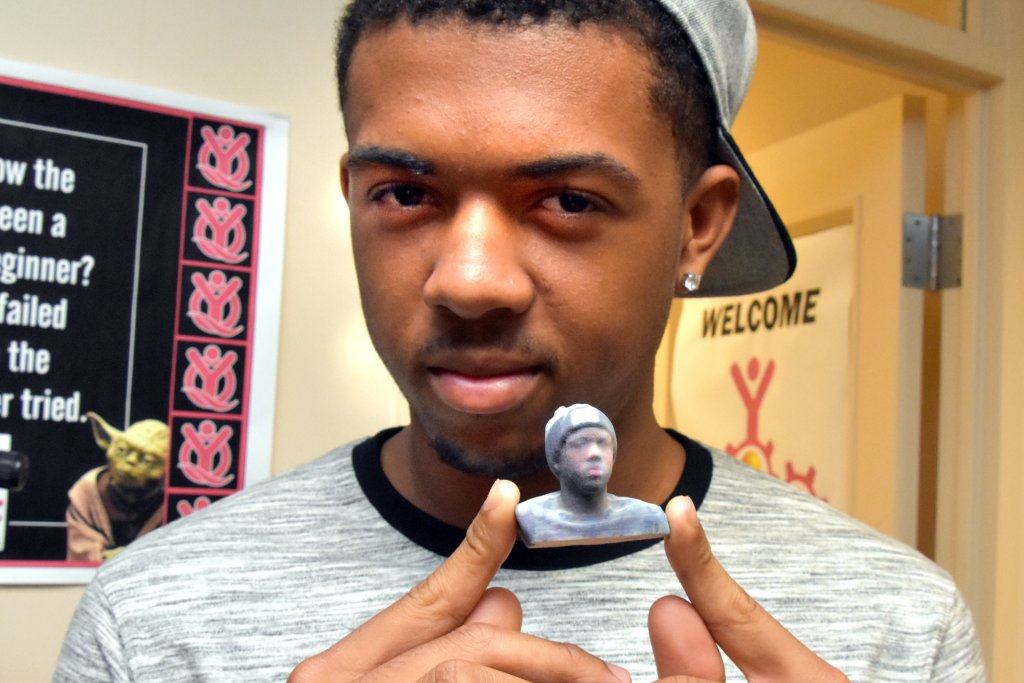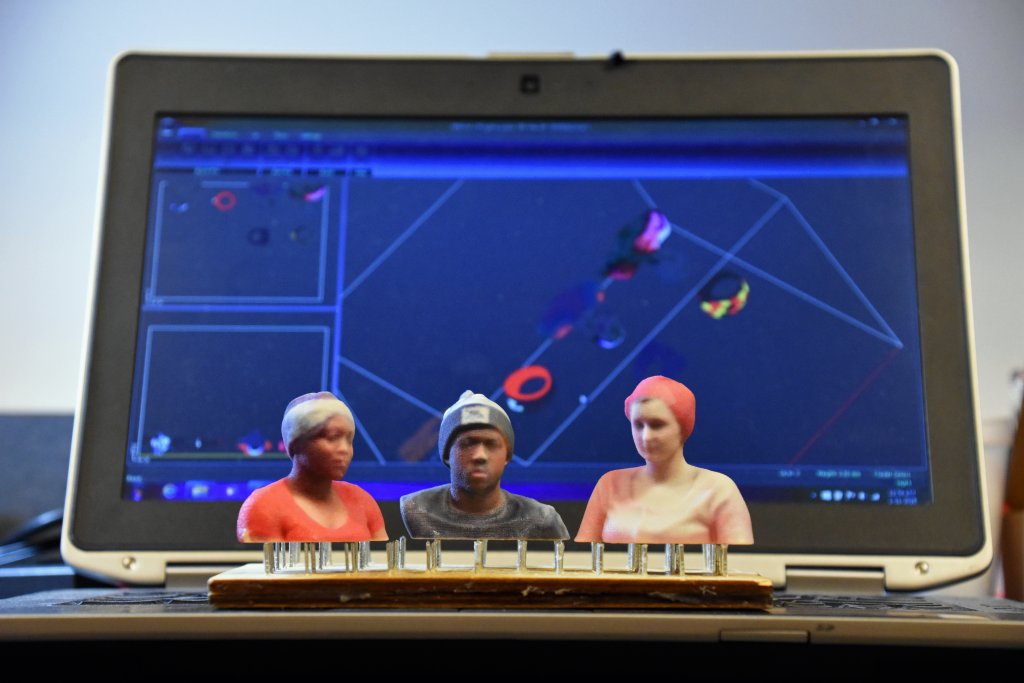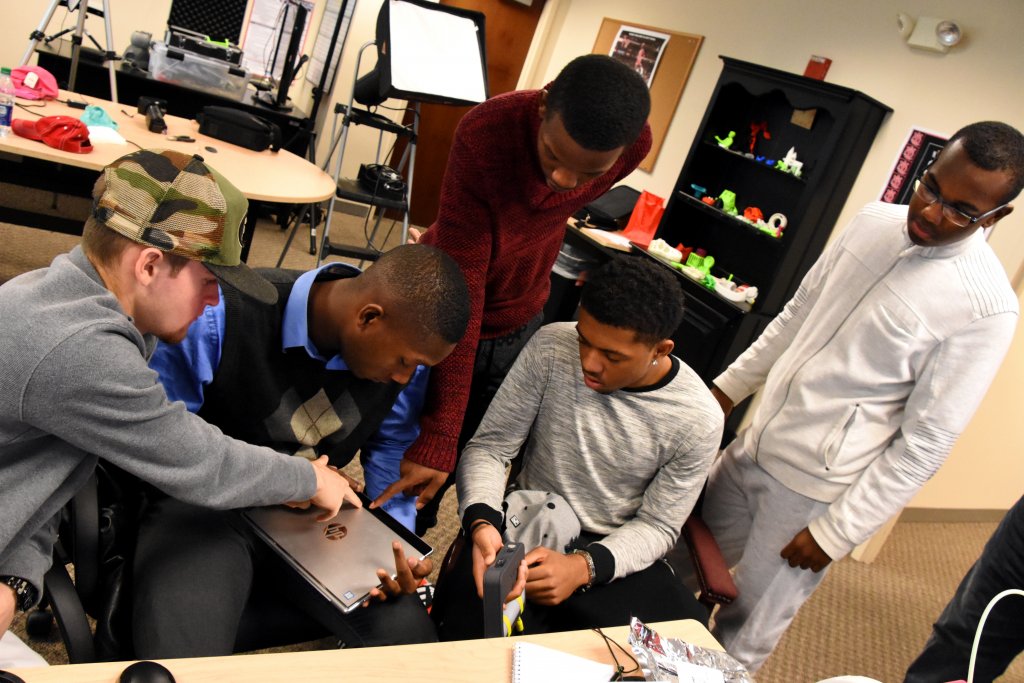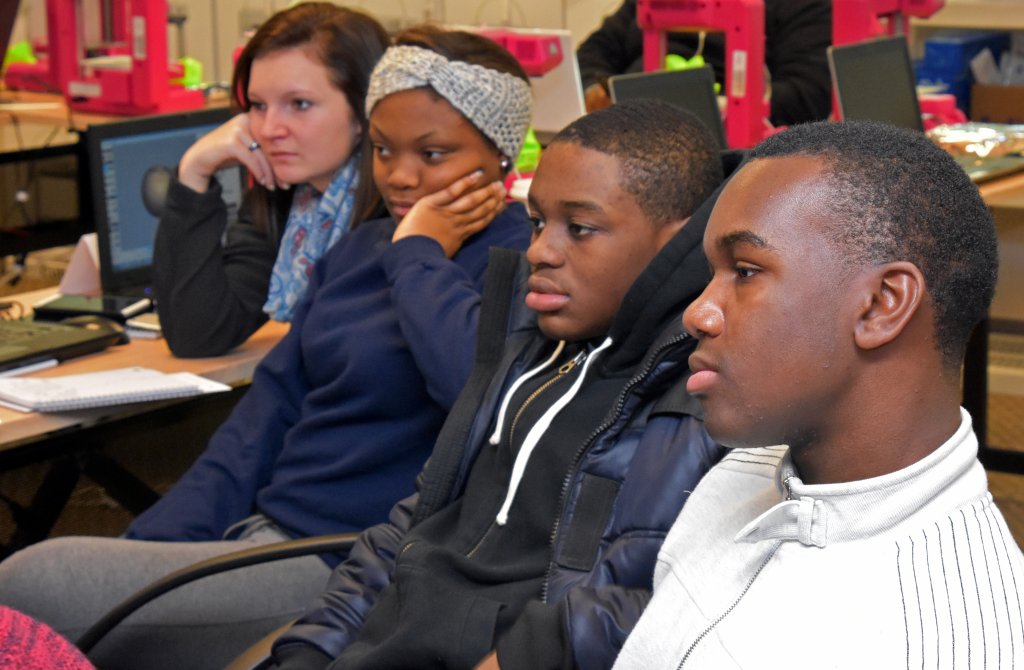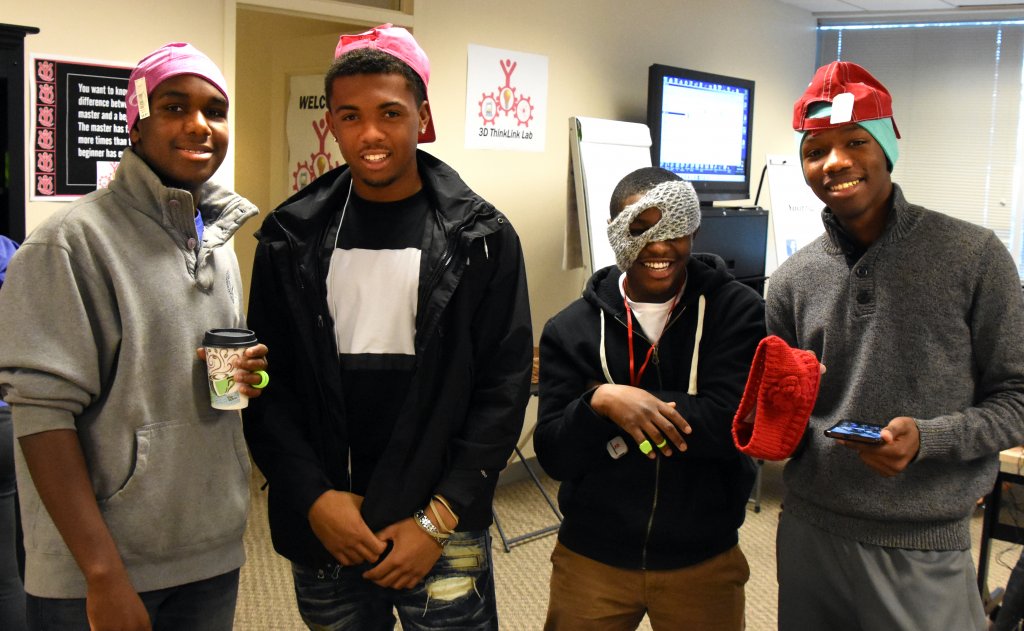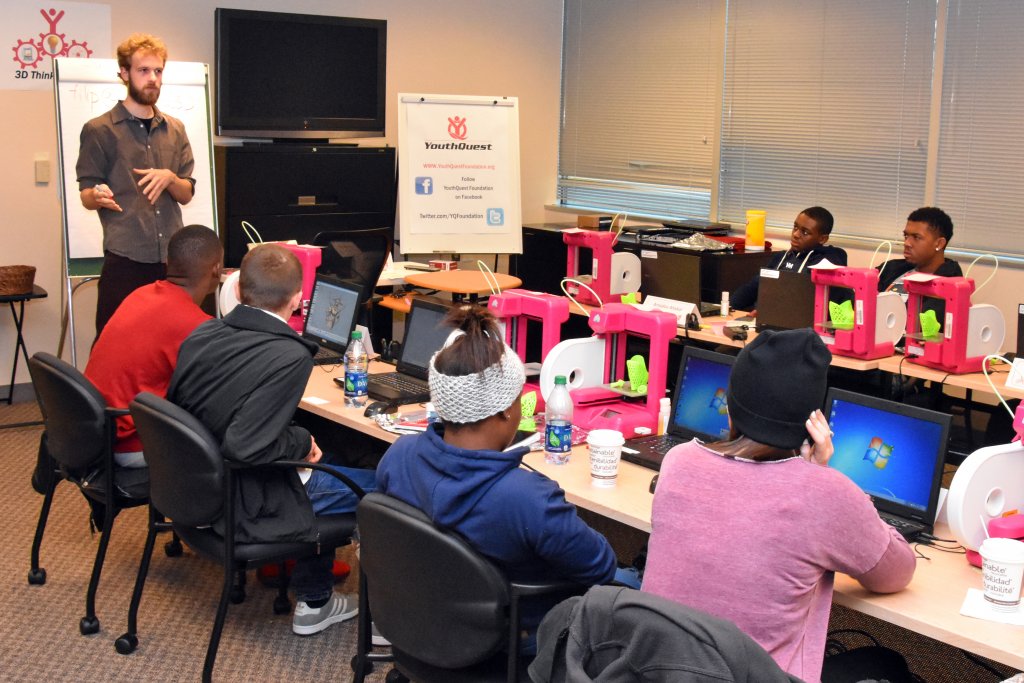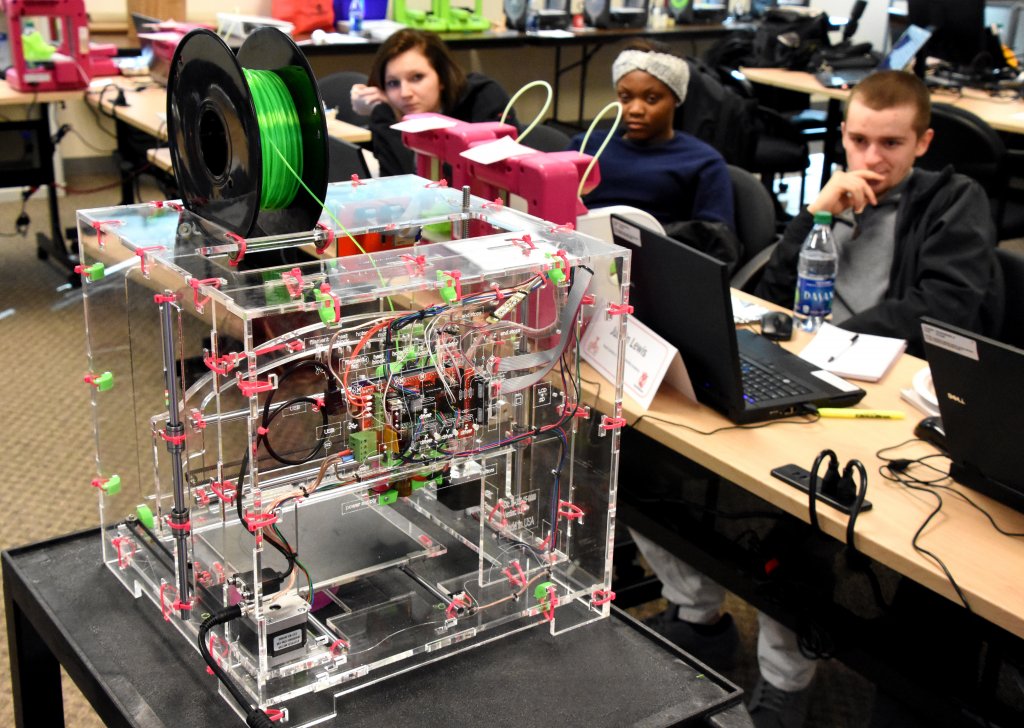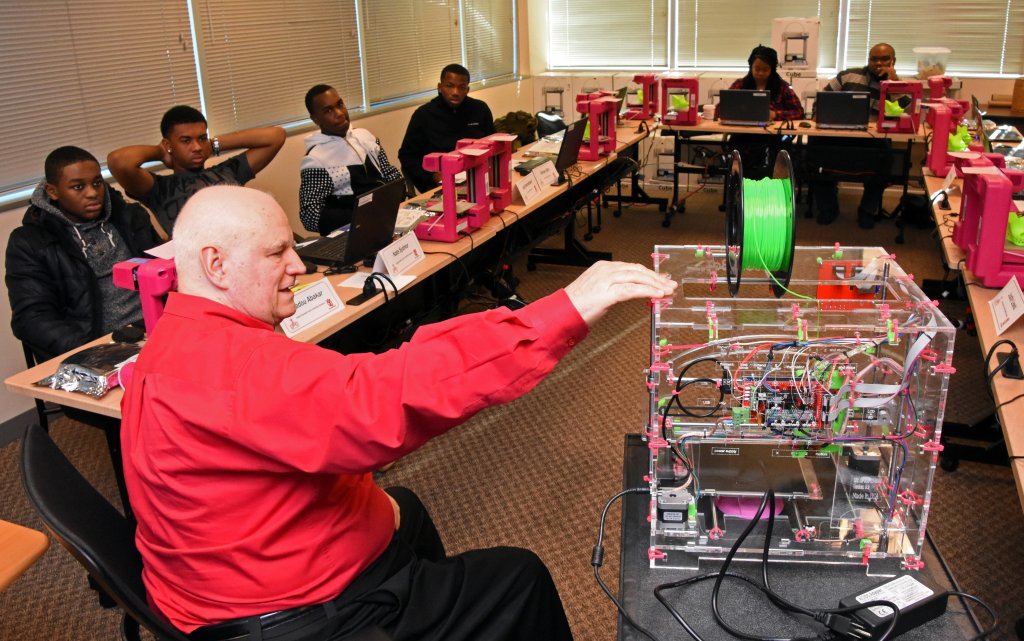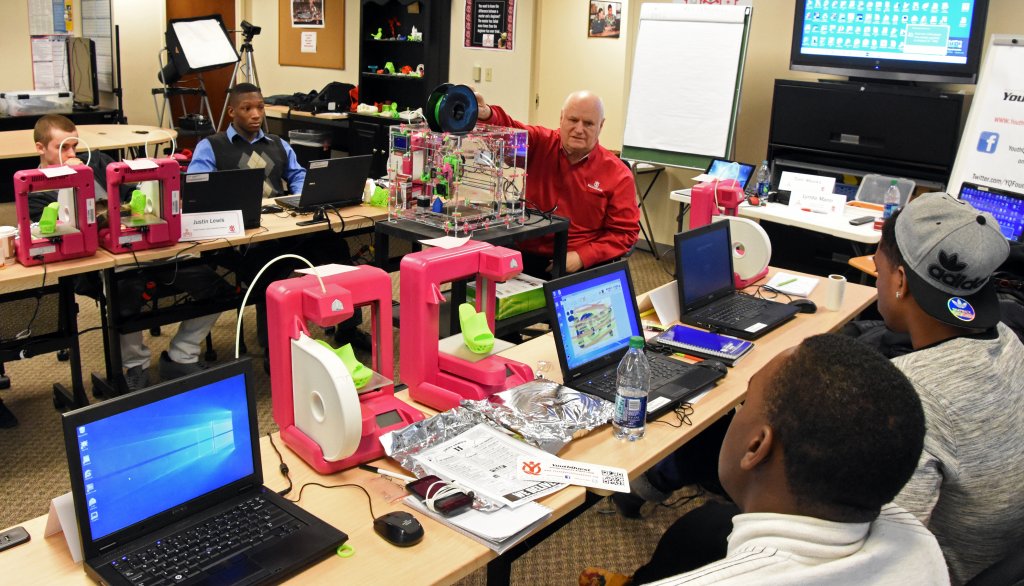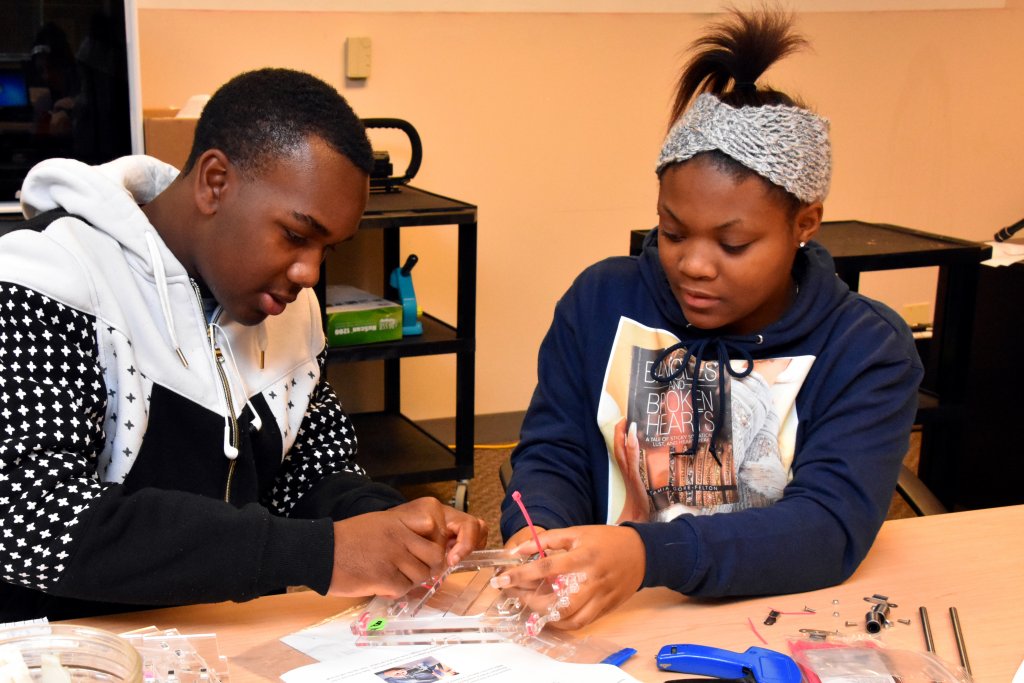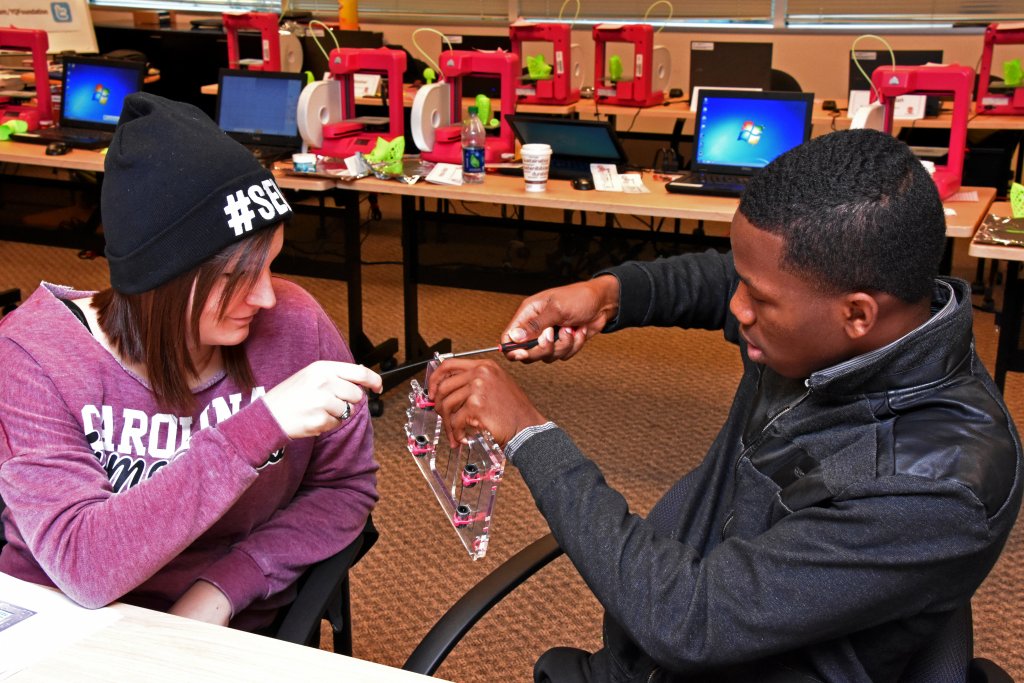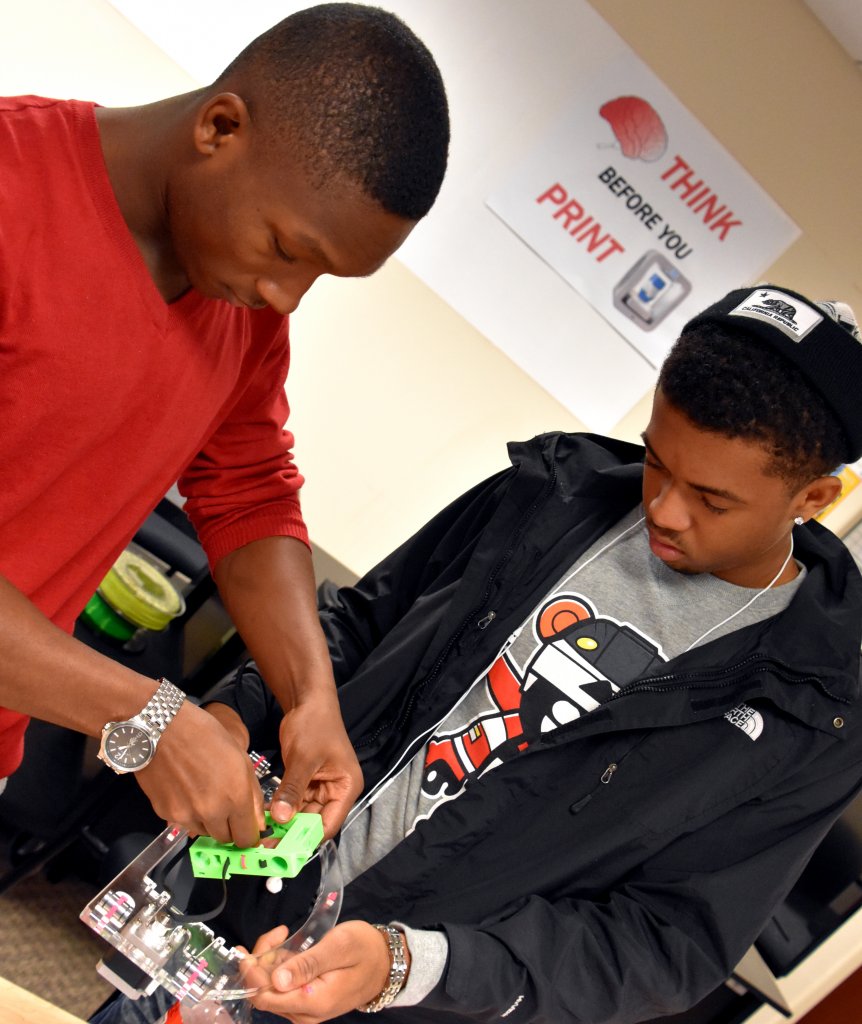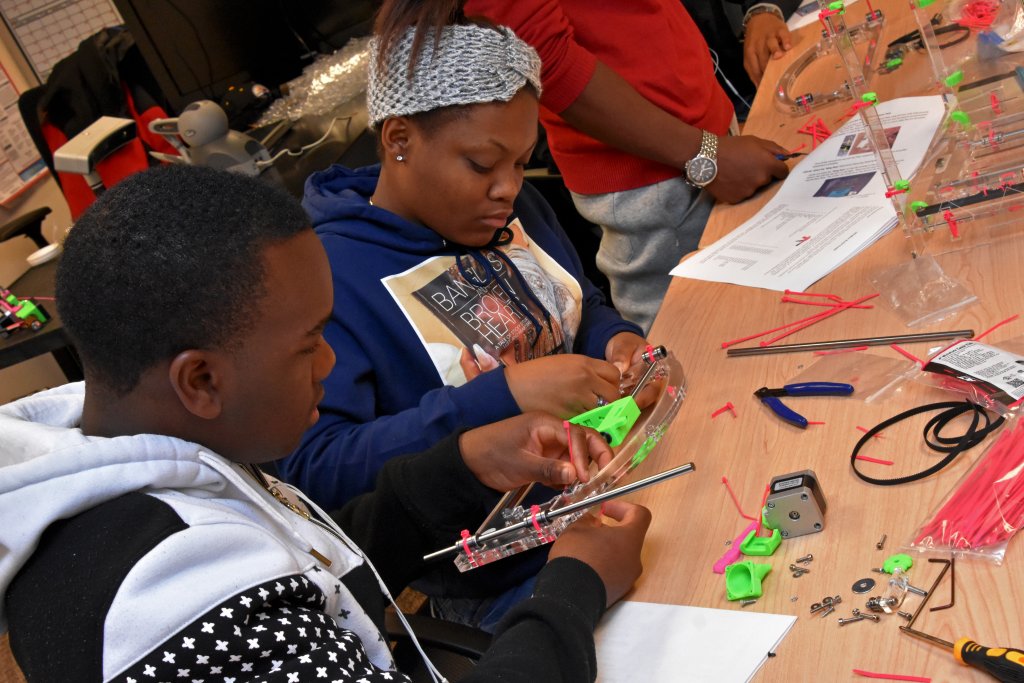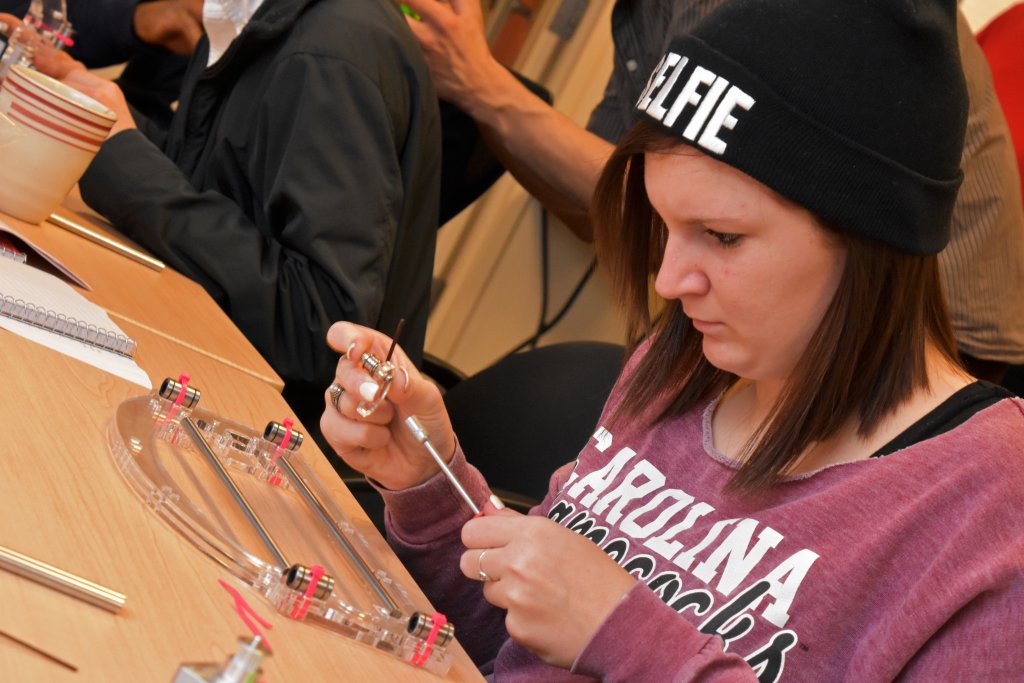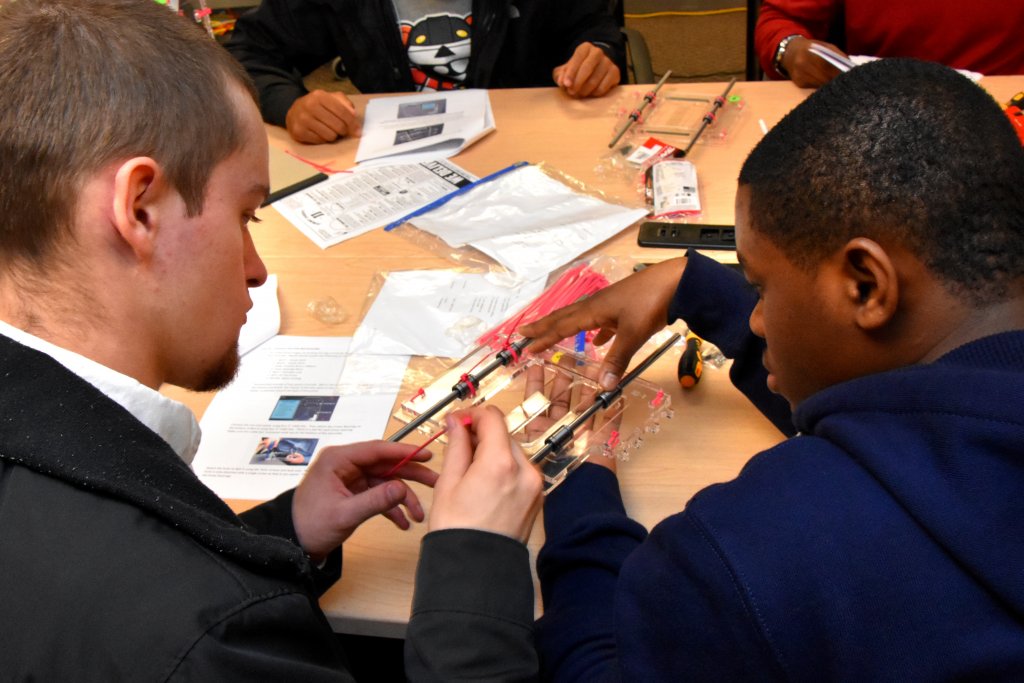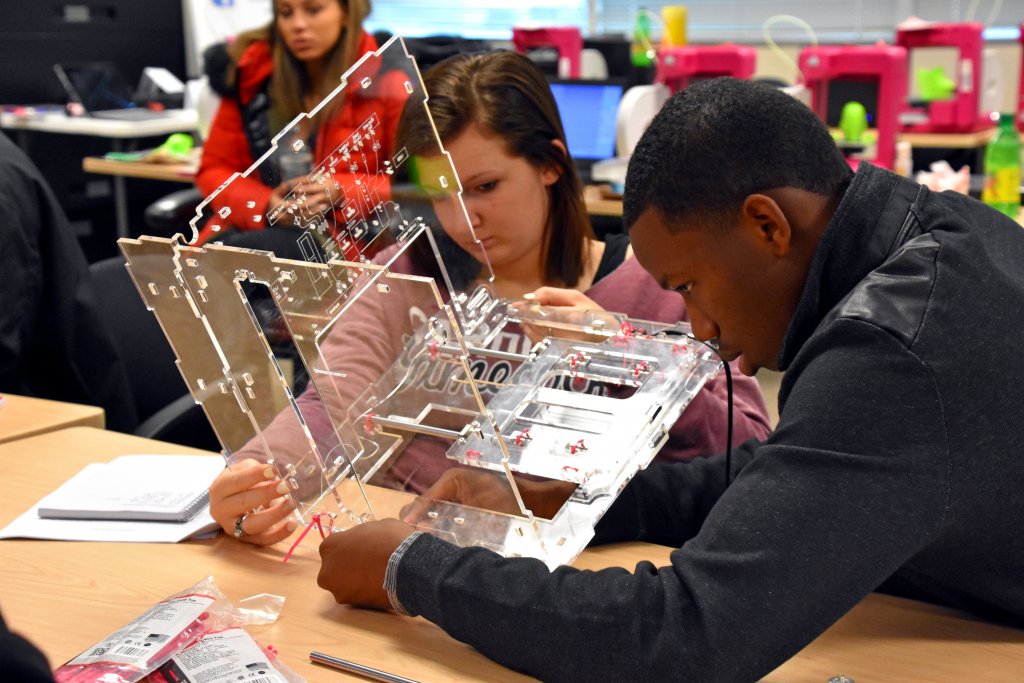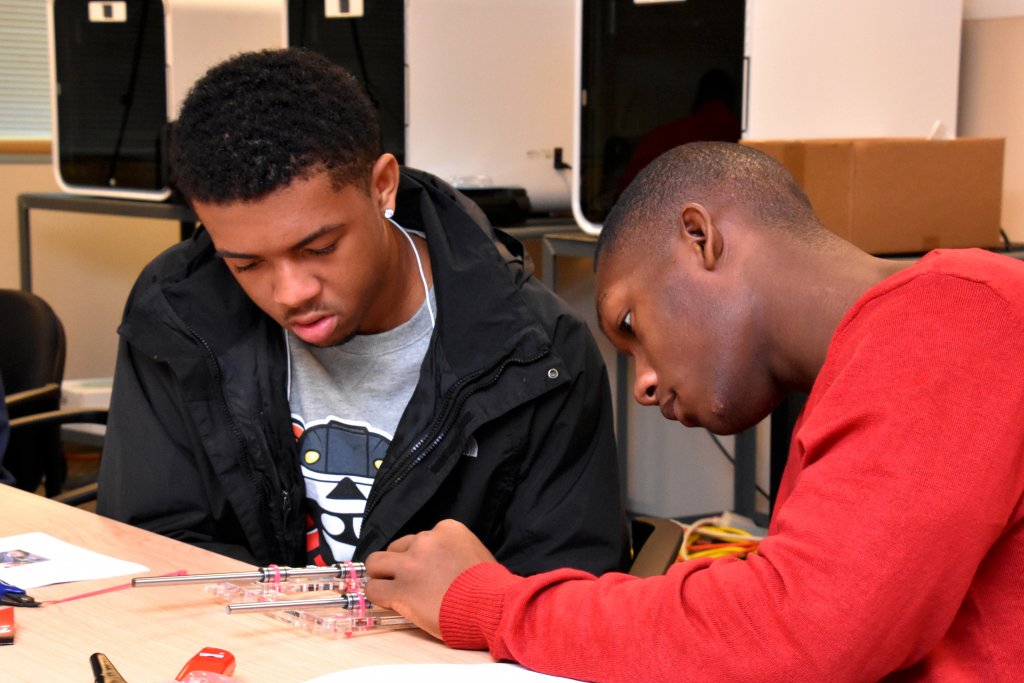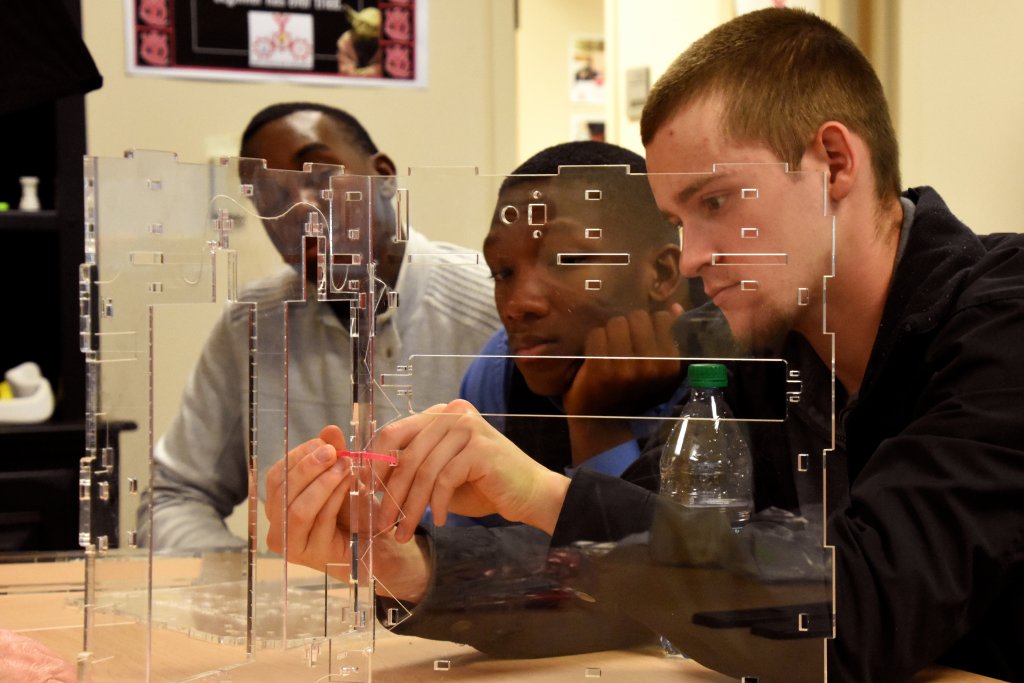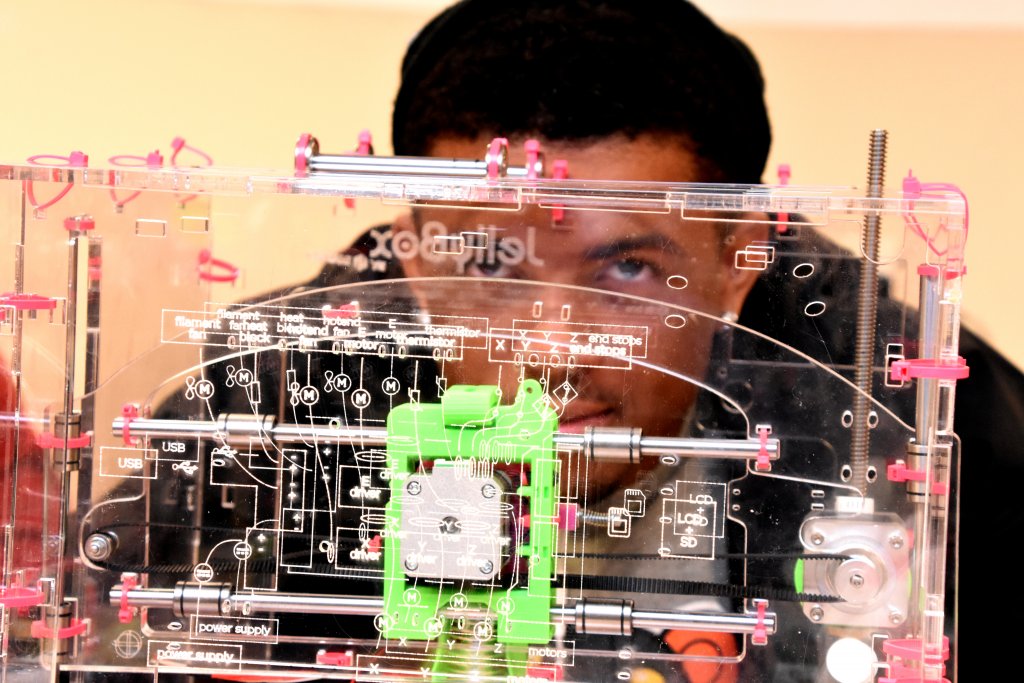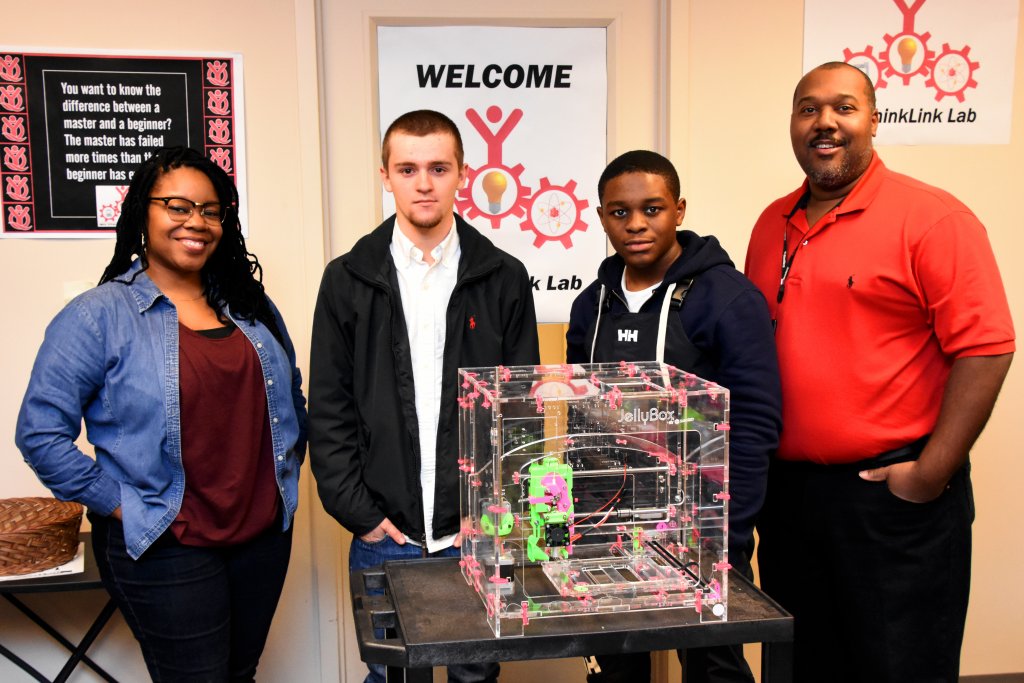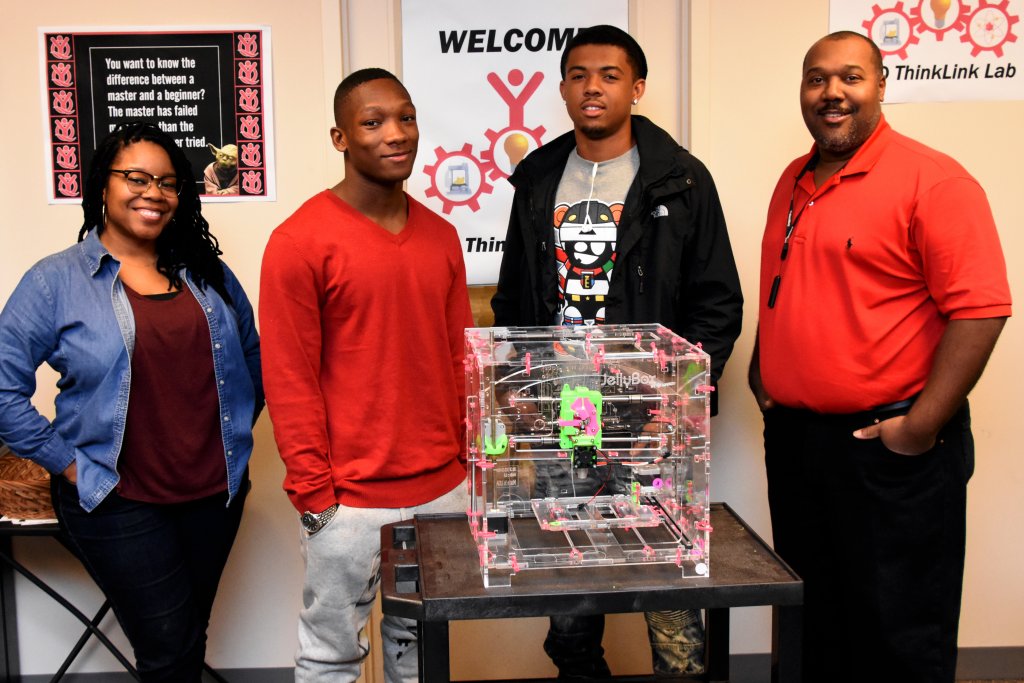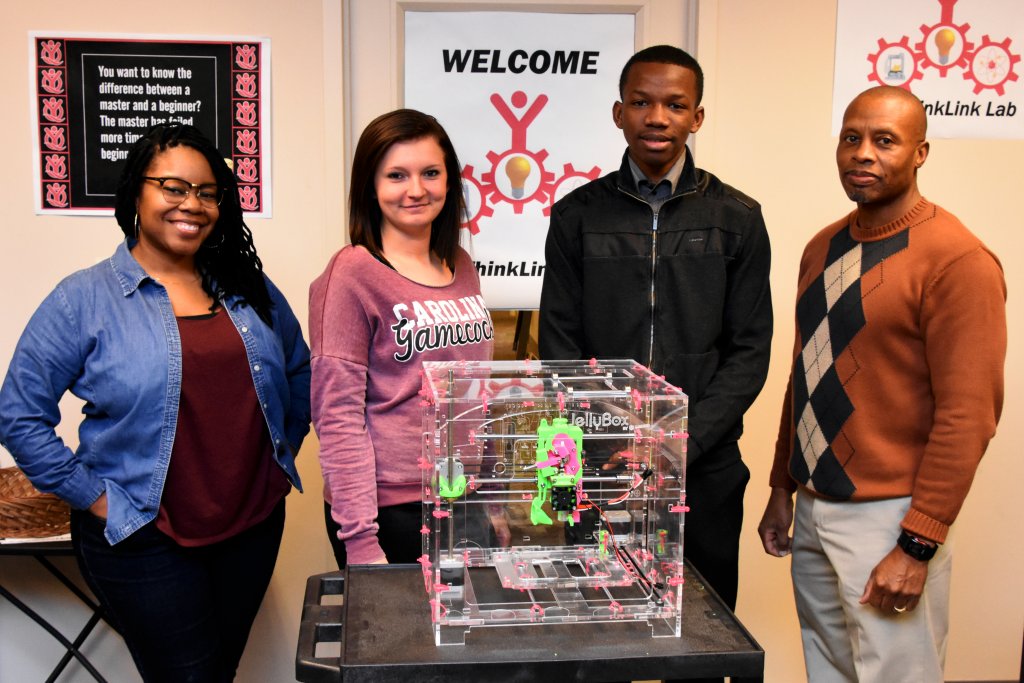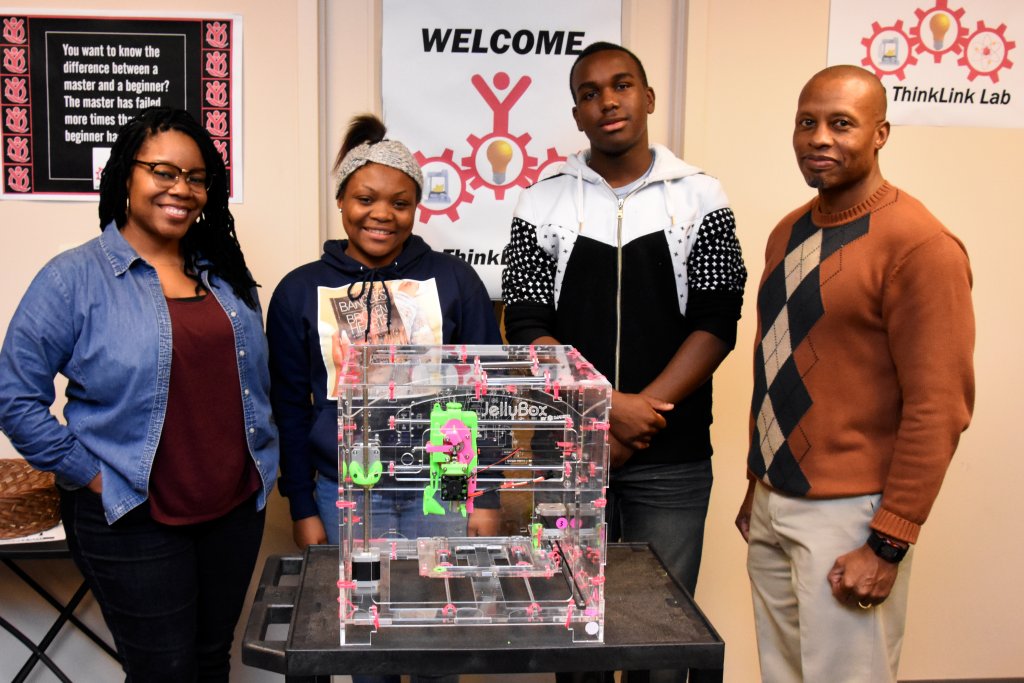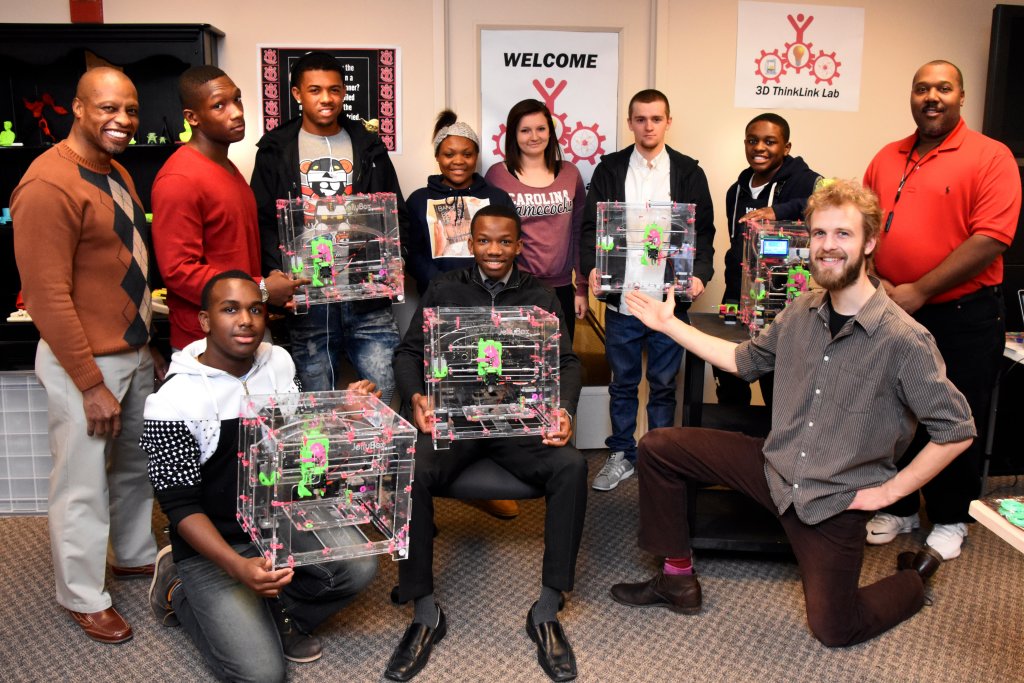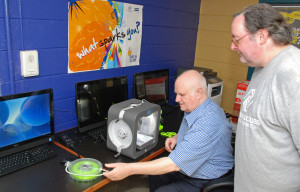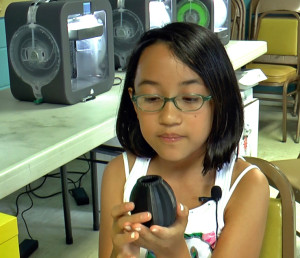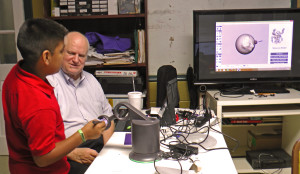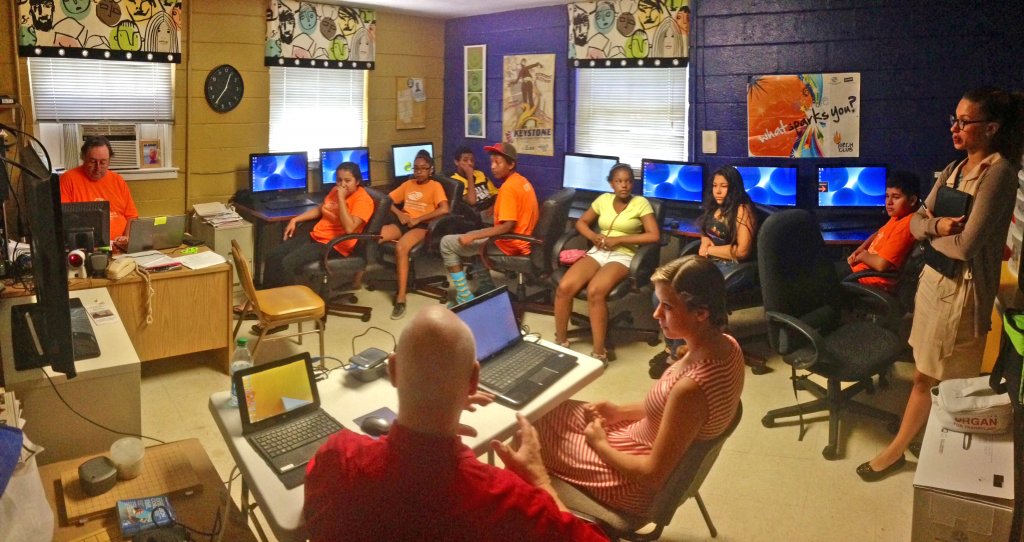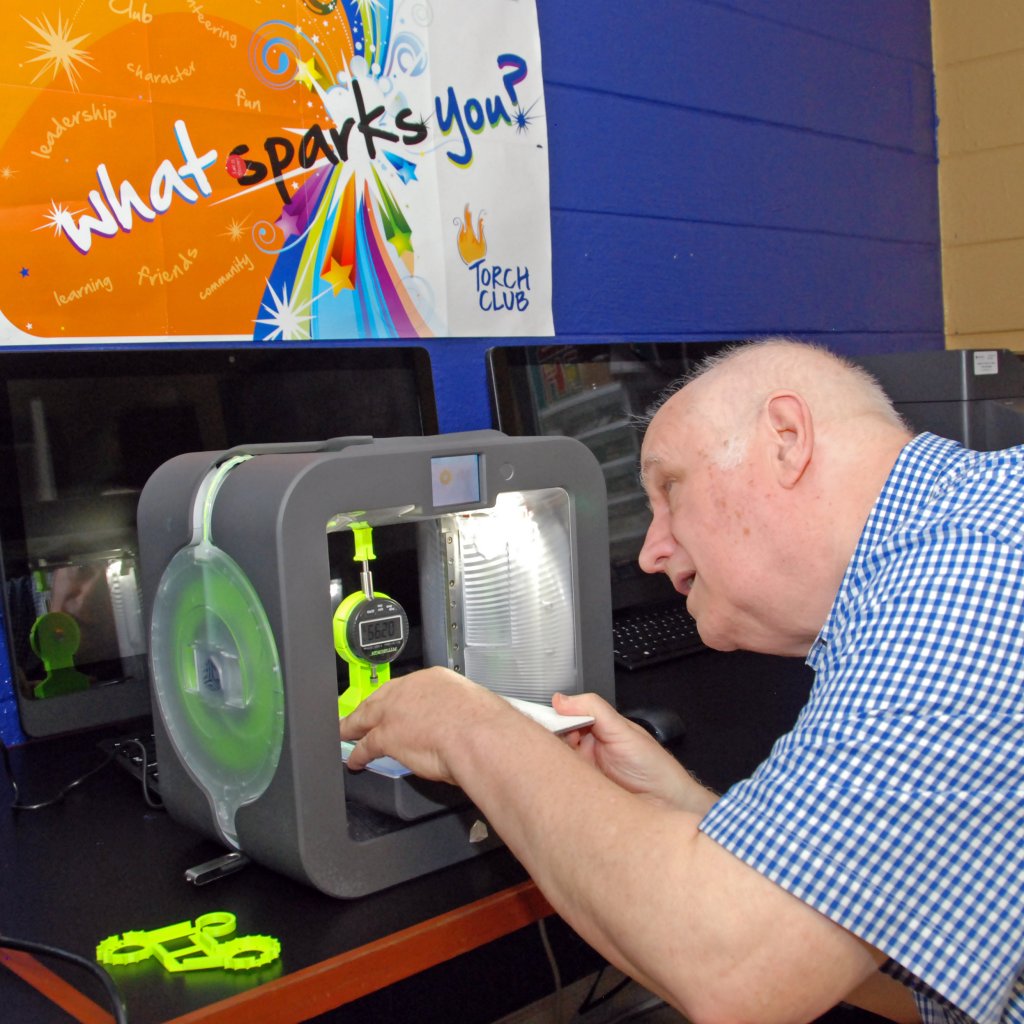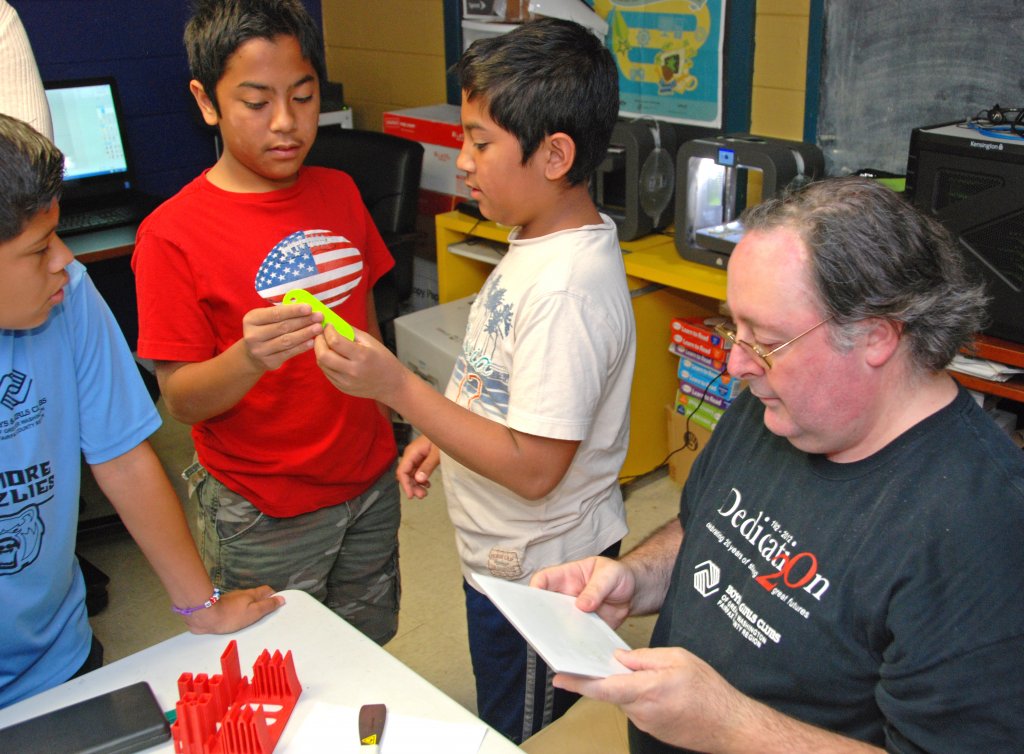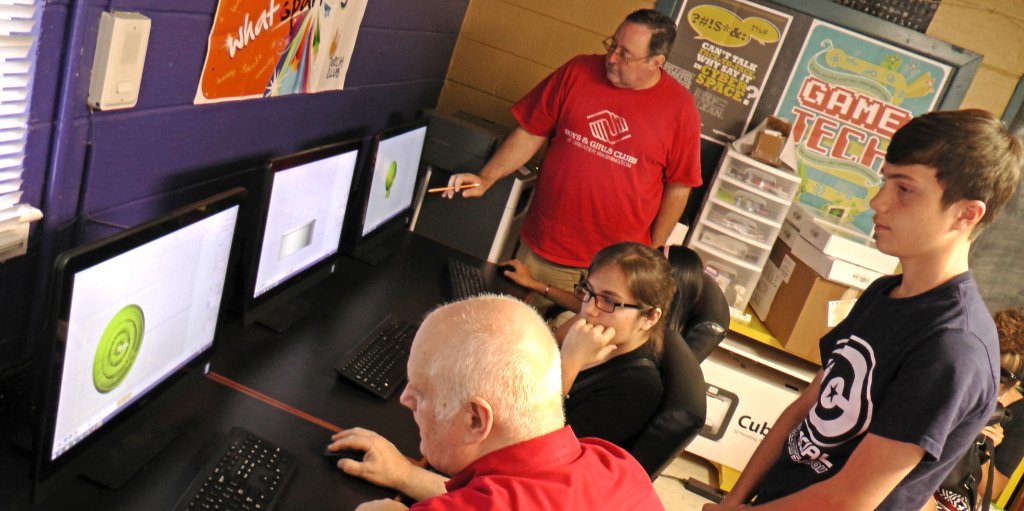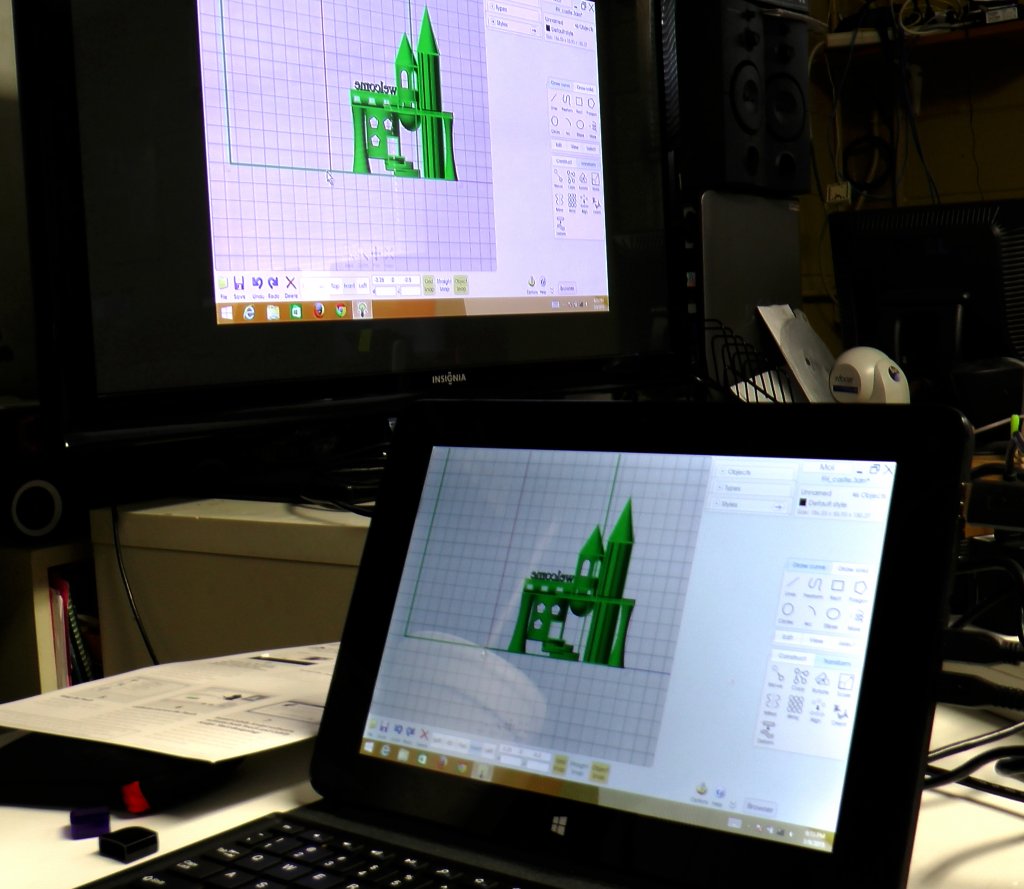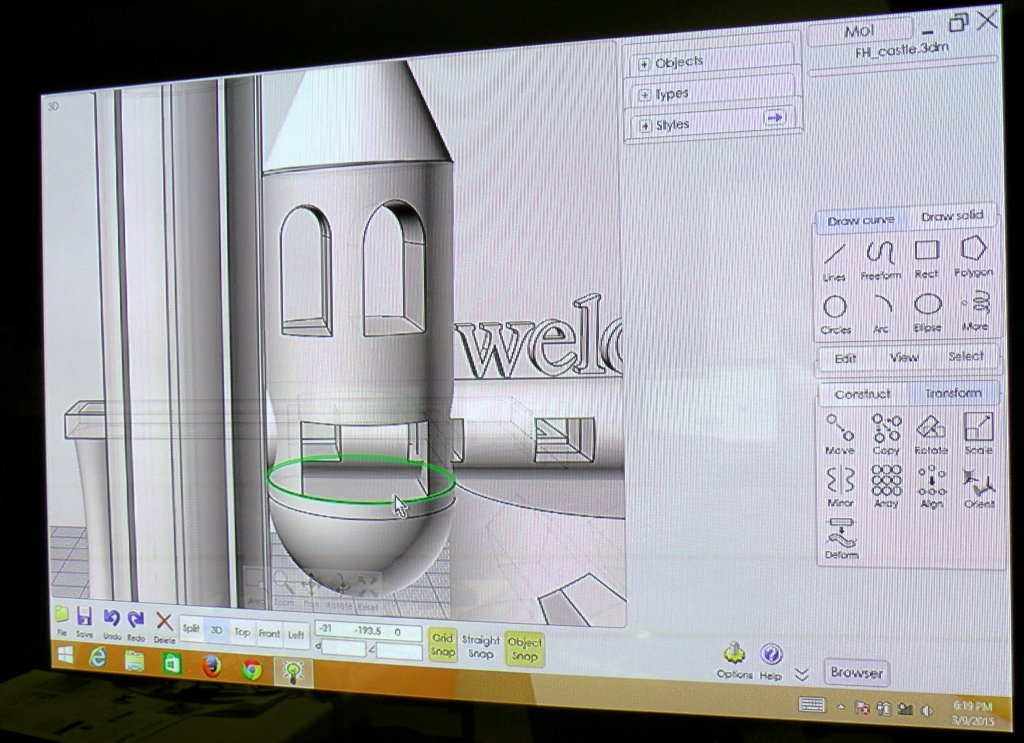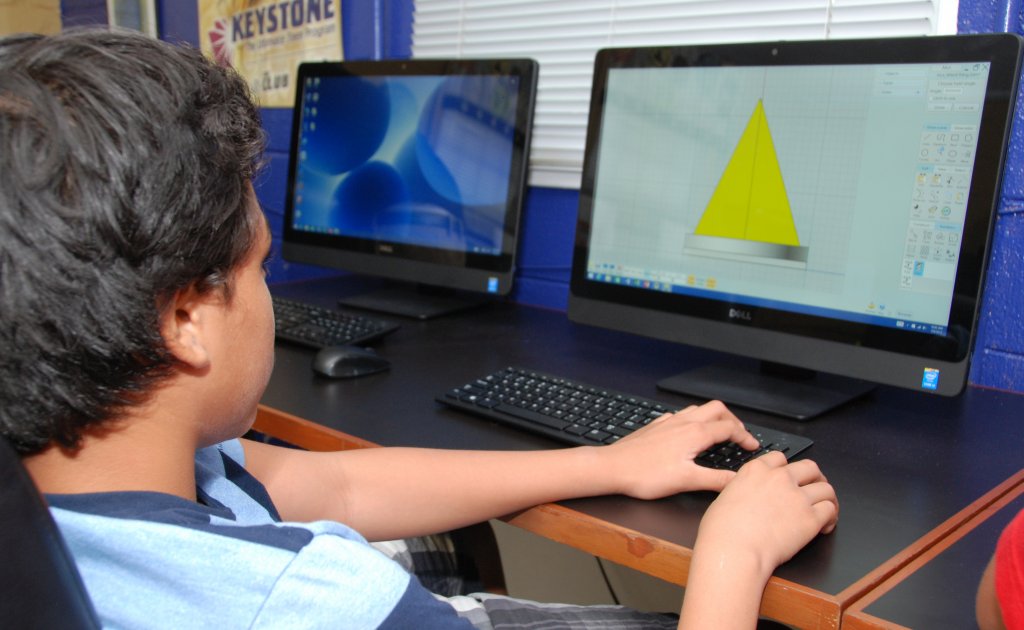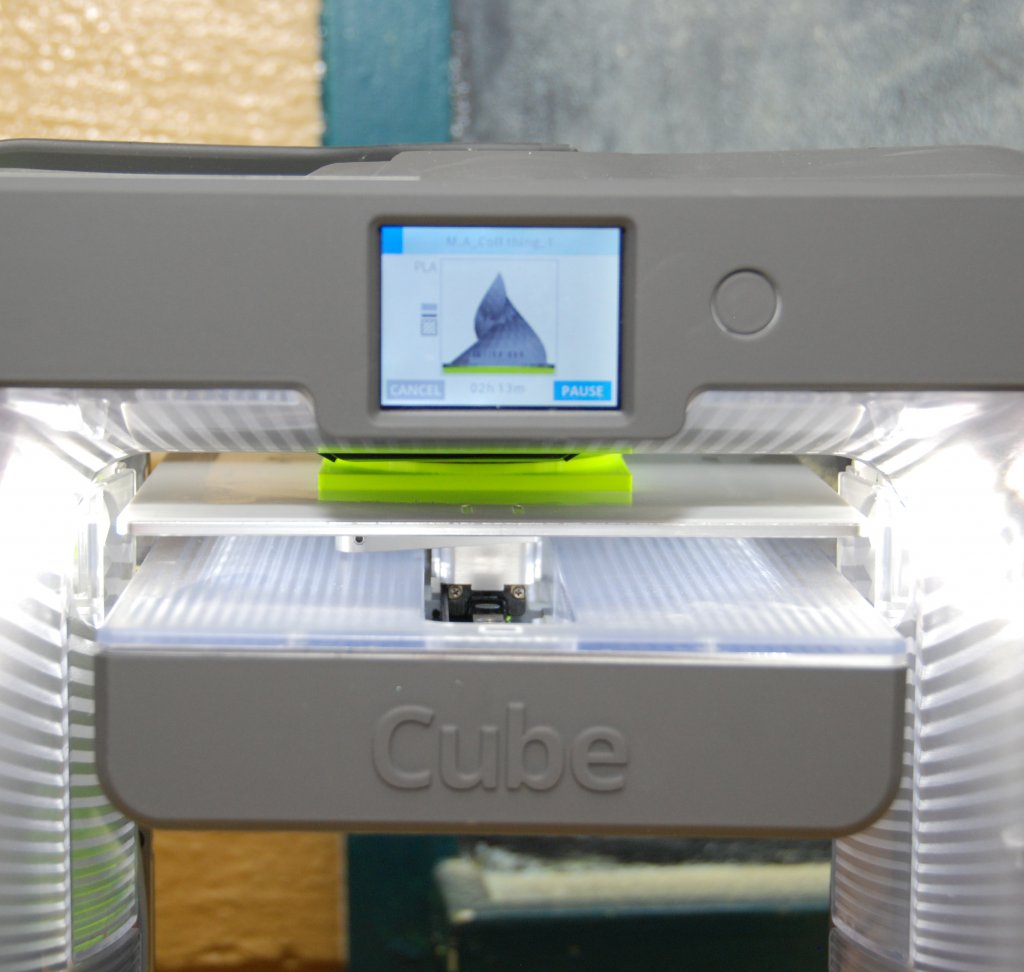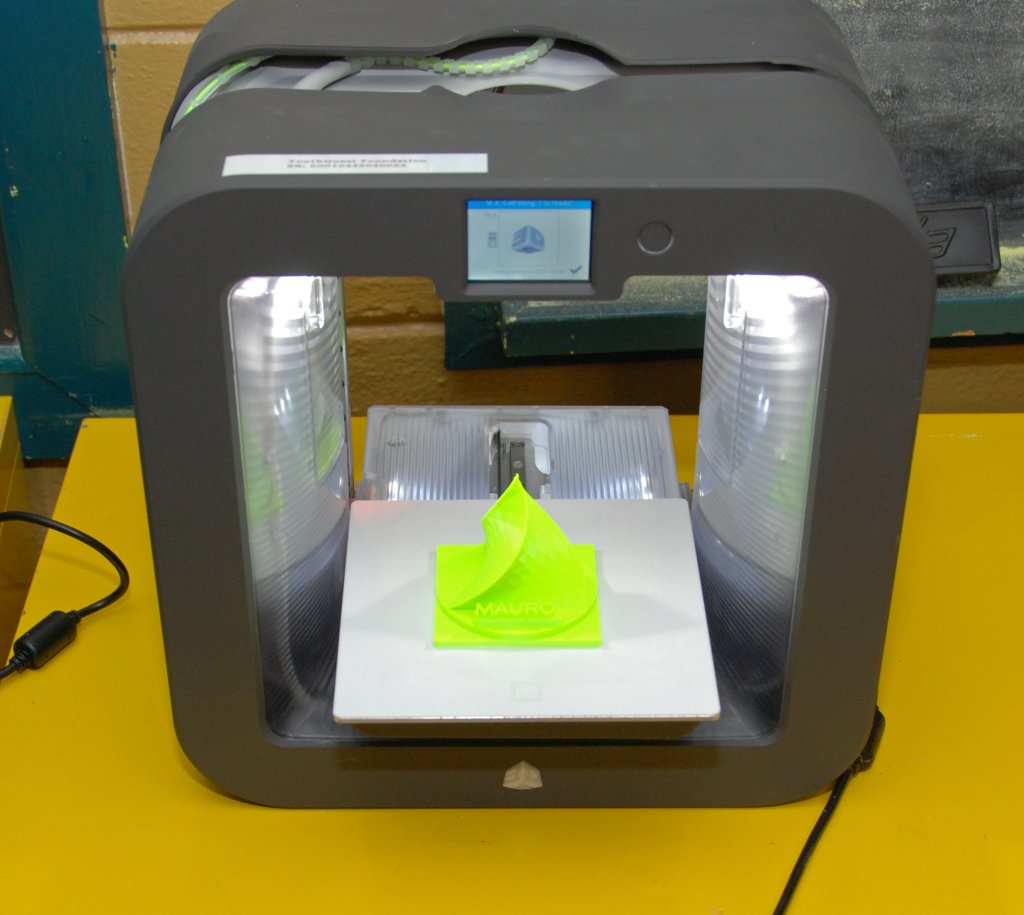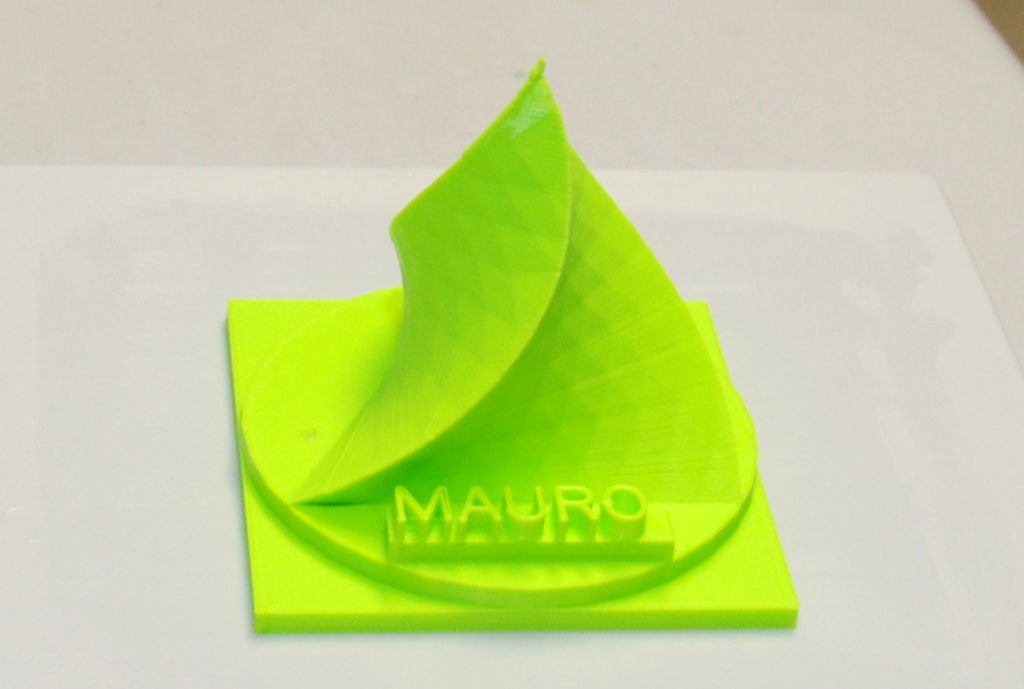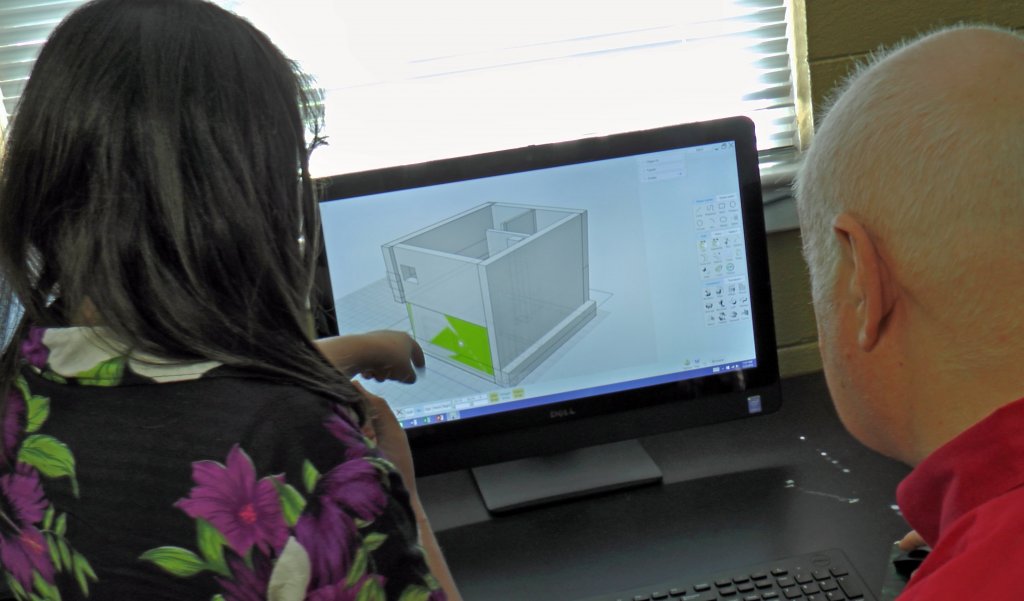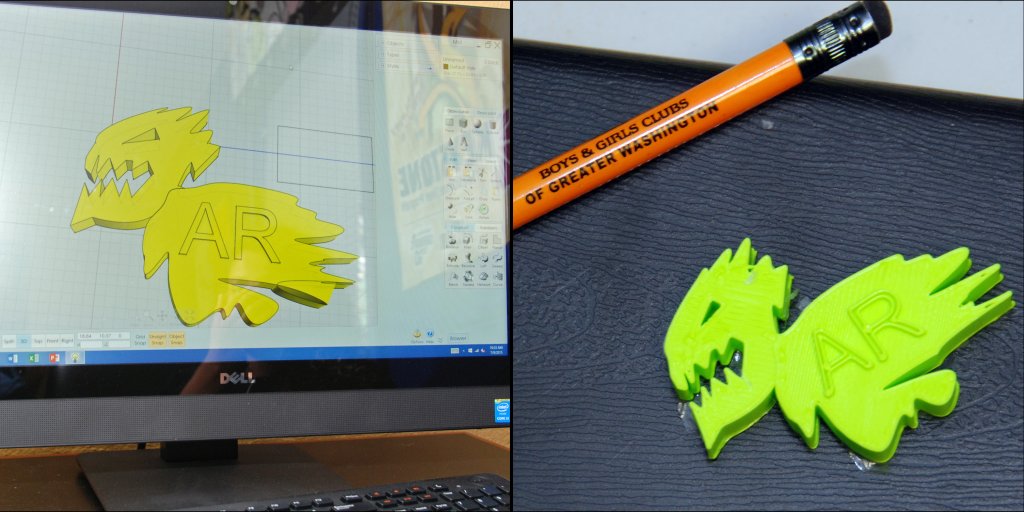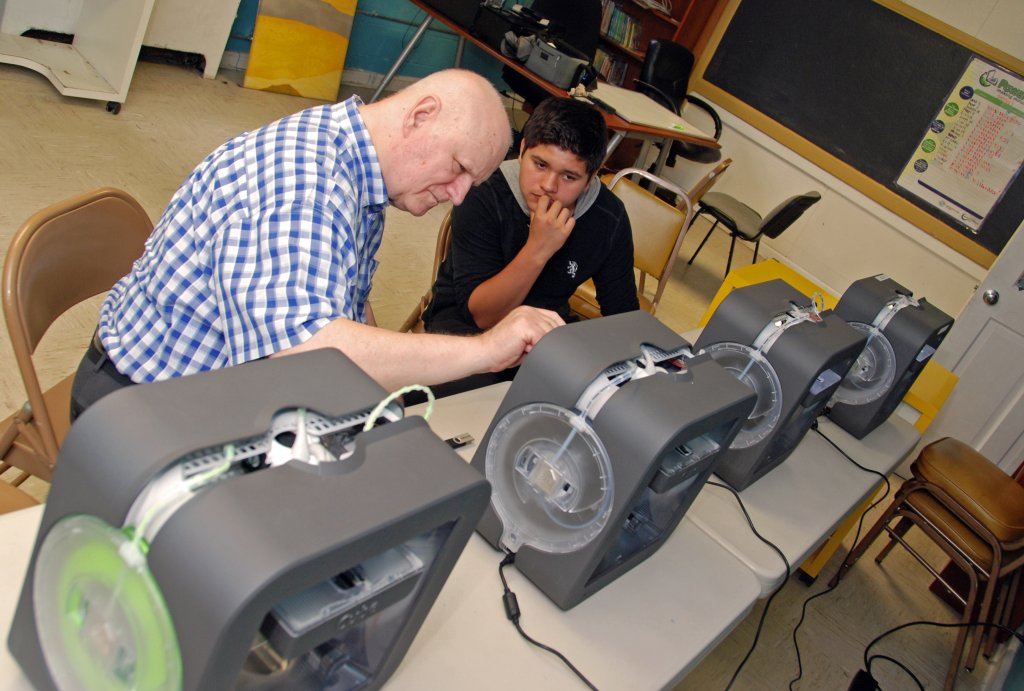The YouthQuest Foundation hosted its largest gathering of teachers for 3D ThinkLink training this month.
Instructors from Maryland’s Freestate, the District of Columbia’s Capital Guardian and South Carolina Youth ChalleNGe Academies joined those from the PHILLIPS Programs for Children and Families for three daylong sessions in the 3D ThinkLink Creativity Lab at our headquarters in Chantilly, Virginia.
“Teacher training was especially significant this time,” said YouthQuest Director of Instruction Tom Meeks. “The cross-pollination of project ideas from the five different sites using our 3D ThinkLink curriculum was very helpful to our new teachers and rejuvenating to our experienced teachers.”
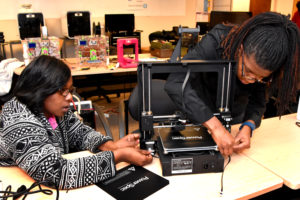
The group was evenly split between first-timers and veterans. We were especially pleased to welcome Germaine Rasberry and Ikeya Robinson from South Carolina Youth ChalleNGe Academy, which is reactivating its 3D ThinkLink classes after a hiatus last year. The other newcomers were Nicole Atchley and Maxine Brown-Davis from Capital Guardian Youth ChalleNGe Academy, Ellen Brigham from the PHILLIPS School in Fairfax, Virginia, and Hugo Duran from the PHILLIPS School in Annandale.
The returning teachers who brought their experience and insights to the training sessions were Jonathon Brown and Jamarr Dennis from Freestate ChalleNGe Academy, CGYCA’s La-Toya Hamilton and Keith Hammond, and Jim Fields and Joseph Phillips from the PHILLIPS schools.
Much of the training time was devoted to reviewing our curriculum, which is built around an innovative noun/verb approach to teaching Moment of Inspiration, a professional-level CAD (computer-aided design) program. This method makes it easy for students to understand 3D design concepts in much the same way that they learn language.
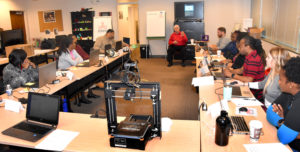
Each lesson introduces a “noun” – a 2D object such as a circle or rectangle – and a “verb” – an action in the CAD software that turns the noun into a 3D object like a pipe or box. The more nouns and verbs the students learn, the more complex their 3D creations can be.
Along with mastering Moment of Inspiration, our teachers must be able to operate 3D printers so students can transform their ideas into tangible objects. It’s essential for them to see how their designs turn out, evaluate problems, make improvements and print again until they’re satisfied.
This is how we teach at-risk kids not to fear mistakes, but to see them as a natural part of the learning process. To do that effectively, we need 3D printers that are simple, fast and reliable, so students don’t get bogged down waiting to see results. That’s why we work to keep up with the latest hardware innovations and find the printers that best meet the needs of our students and teachers.
We are in the process of transitioning from the 3D Systems Cube printers we used the launch our program five years ago to newer, more versatile machines.
The teachers spent a full day working with PowerSpec printers. After setting up and calibrating the machines, they ran test prints and learned common troubleshooting techniques. At the end of training, we gave a PowerSpec i3 Plus printer to each of our five class sites for evaluation.
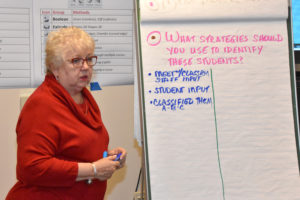
The final day of training included a “teachers teach teachers” session. The experienced instructors demonstrated some of the benchmark projects such as cookie cutters and personalized keychain tags that students must complete periodically to show that they understand the nouns and verbs they’ve covered so far. As they go deeper into the curriculum, the projects become more complex.
Besides sessions about the nuts and bolts of 3D design and printing, there was plenty of lively discussion about the best ways to serve the at-risk kids in our classes. It was an opportunity for the teachers to get to know each other and to understand the various needs and strengths of the students. They learned what’s unique about each partner program, as well as what they have in common.
YouthQuest Co-Founder and President Lynda Mann led discussions about best practices for selecting students for 3D classes, and ways to improve our program and meet the needs of our partner schools. The teachers gave valuable feedback about what’s going well in their classes and what needs improvement.
The February training sessions laid the foundation for what promises to be the best year ever for our 3D ThinkLink Initiative. The teachers returned to their schools energized and ready to apply what they learned in our lab.
Most important, this was a chance to remind everyone – whether they’ve been working with us for years or are just starting – that the real purpose of our program goes far beyond teaching 3D printing. It’s all about using the technology as a vehicle to develop the essential life skills at-risk youth lack. In the process of mastering the CAD software and printers, our students learn that their failures are not final and they can accomplish more than they ever imagined.
